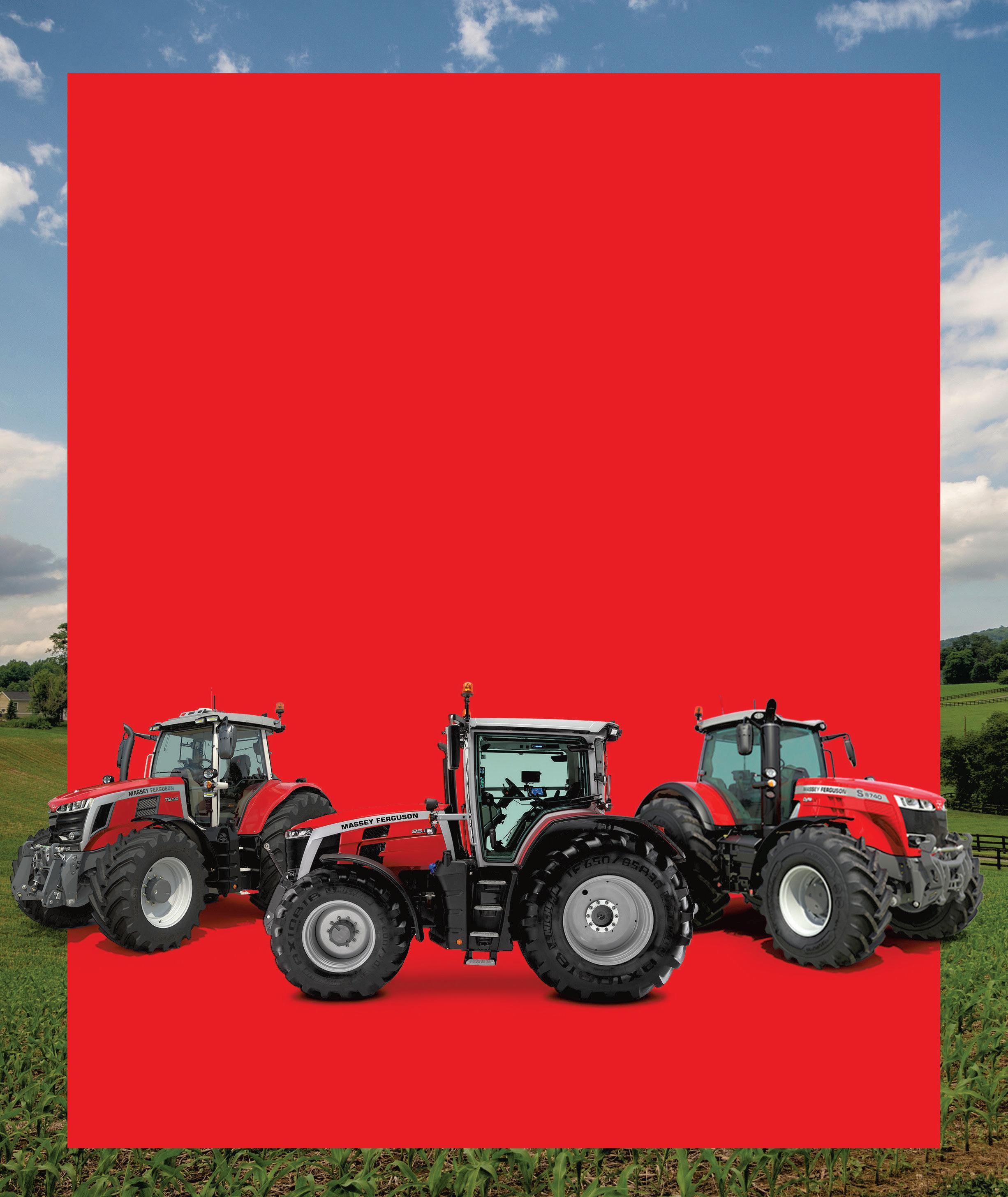































































































AGRICULTURE Victoria has partnered with South Gippsland farmers Jenny and Paul O’Sullivan of Malabar Farm, near Walkerville, to find profitable and sustainable ways to reduce emissions on their sheep and beef properties.
The O’Sullivans participated in Agriculture Victoria’s On-FarmEmissions ActionPlan Pilot, aprogramthat helped nearly 250 Victorian farmers understand and act on their greenhouse gas (GHG) emissions. The pilotwas launched in2022under the state government’s $20 million AgricultureSector EmissionsReduction Pledge, that invested in flagship trials of leading research and development of tools and services, helping farmerstoreduce emissions while maintaining productivity and profitability.













































Morethan 42,000 people attended the three-day 2025 Farm World event at Lardner Park last month, exploring their tastefor all things farming.
FARM WORLD PAGES 34-38
Agriculture Victoria Emissions Specialist, Alison Kelly worked with the O’Sullivans to develop acustomised on-farmemissions action plantoreduce their GHG and sequester and storecarbon.
“Reducingemissionsthroughefficient production andcarbon storageistop of mindfor farmers in thispilot, like the O’Sullivans, who arepassionate about sustainable agricultureand climate adaptation,” Mrs Kelly said.
“Determining the environmental impact of your farm’s production through aprocess called‘Know Your Number’ is now something thatgovernments and the whole supply chain is increasingly demanding.”
As part of the program, Mrs Kelly worked with the O’Sullivans to determine their




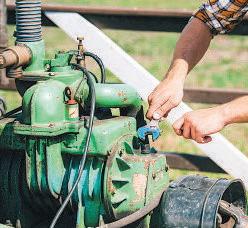





‘number’, anet farmannual emissions footprint estimate, via an existing Greenhouse Gas Accounting Framework calculator for beef and sheep enterprises.
Shesaidthe O’Sullivanstailormade actionplan helped them apply for agovernment grant to implement someofthe opportunities from the plan, such as: The establishment of a1.7 kilometres by10-metreplantation, whichwill provide carbon sequestration, biodiversity and livestock shelter benefits; and, Support to follow up on benchmark soil samplingtomonitor changes in soil organiccarbonlevels across several paddocksand organic treatments using ablend of animal manureand chicken
bedding litteras part ofthe process. As well as revegetation and land use improvements, the O’Sullivans continue to reduce their farmgreenhouse gas emissions with aseven kilowatt solarpower system for theirworkshop, fences and pumps. They arealso screening their bulls for feed conversion efficiency, and hope to learn from feed additive research to see how they can applybenefits to their grazing operation to possibly further reduce emissions.
To learn moreabout Agriculture Victoria’s On-FarmEmission Action Plan online and other farmer casestudies visit this link via the Ag Vicwebsite: agriculture.vic.gov. au/support-and-resources/case-studies/ on-farm-emissions-case-studies



























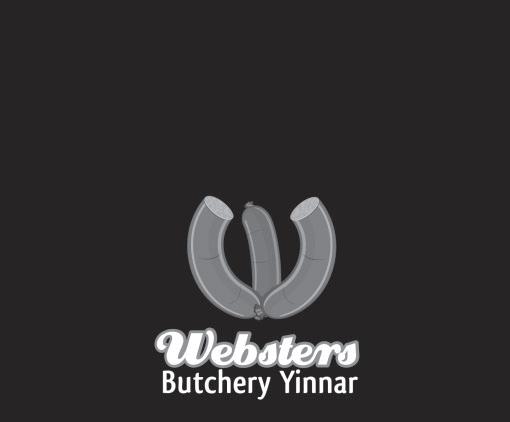






























Liam DURKIN
NEWS of the death of Pope Francis reverberated around the world last month.
The Pontiff diedfollowinga strokeand heart failureon Monday, April 21, just hours after delivering his Easter service. He was 88.
Catholics mourned his death, which took place over nine days (and ended on Wednesday, April 30). The Pope's funeral was held in the Vatican on Saturday, April 26.
Flags across the region flew at half-mast
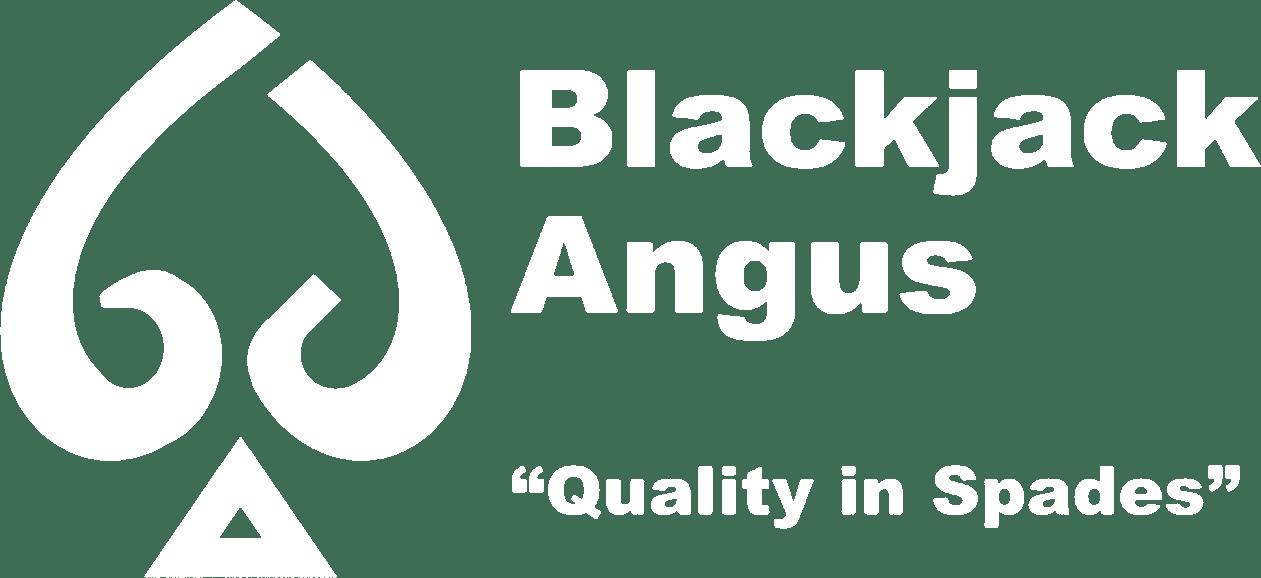


the day after his death, including at Latrobe City Headquarters, Morwell.
Local Catholic schools took time to reflect, with Bishop of Sale, Greg Bennet leading tributes.
"In choosing the name Francis (after Saint Francis ofAssisi), CardinalJorge Mario Bergoglio of Buenos Aires, claimed away of being Pope," Bishop Greg said.
"Throughout the past 12 years, we have seen traces of the great saint of Assis modelled in the manner of Pope Francis' leadership:compassionate to the poor merciful to the forgotten, welcoming to the stranger,humble in lifestyle, courageous in addressing concerns of the modernworld; avoice of challenge to the powerful and always deeply concerned to remind the church that her mission was the same as the mission of Jesus."
The Catholic Diocese of Saleoversees close to 30 parishesand schools,stretching from Cranbourne to Orbost, and as far south as Philip Island.
Traralgon youngster,Zahra Hanrattyhad the honour of seeing Pope Francis at World Youth Day 2023 in Portugal.
Zahra was among the 1.5 million people who gave the Pope arock star reception as he drove through Lisbon for the week-long global event celebrating the Catholic and Christian faith.
Zahra estimatedbeingabouta metre from His Holiness when he drove past in the Popemobile.
"It was athrill, Ididn't realise how much of ahype it was until he was really there," she told the Latrobe Valley Express in 2023.
"Everyonewas screaming,singing and trying to get closer to Pope Francis. Igot back to school and lot's of people asked me if Imet the Pope, they wanted to know about my experiences. Ididn't really think it wouldbethat big of adeal, but it's really broadened my perspective."
Pope Francis delivered anumber of sermons,withZahra commenting the then 86-year-old "looks younger" in real life.
"He only spoke Italian -that I'm awareof, but he can speak alot of languages. We all had radios and therewas translators on





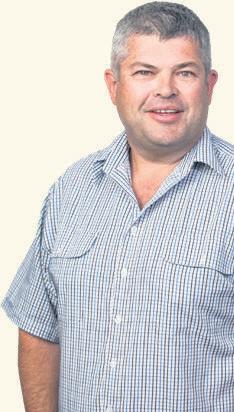






all the channels so we could understand what he was saying, it was justabit tricky, but Ilearnt so much," she said.
Also amazing was the amount of security
"Thereweresnipers on the top of every building, it was abit scary, it took us hours to get into the actual place when he was arriving. We had to go through three gates checking our bags, checking us," Zahra said.
For retired Traralgonpriest, FatherPeter Bickley, news of the Pope's death would have carried arange of emotions.
The Pope died on the sameday hisbeloved Geelong Cats won aclassic EasterMonday clash at the MCG.
Fr Peterhad his sights setonbecoming a priest (well afew offices higher) as ayouth.
"The Pope of the day died on October 8, 1958," he recalled in an interview with the Express last year
"I'm in the dormitory and it's come through on the radio, it said 'sad news, Pope Pius XII has died', and Isaid 'I'll be the Pope'," Fr Peter said chuckling.
The Vatican's loss has arguably been Gippsland's gain, as Fr Peter went on to serve anumber of local parishes with distinction across morethan 50 years.
Pope Francis had served as head of the Catholic Churchsince 2013,comingin after Pope Benedict XVI resignation -the first Pope in nearly 600 years to do so. Catholic cardinals will now vote to elect the next Pope.
Pope Francis is the second global leader to die in recent years,followingQueen Elizabeth II in 2022.





Stefan BRADLEY
AGRIBUSINESS bank Rabobank's senior analyst -dairy and consumer foods Michael Harvey and senior analyst -animal protein Angus Gidley-Baird, stopped bythe Gippsland Times office in Sale last month while they wereinthe area meeting with clients.
The pair spokeabout theirlocal and global insights into the beef, sheep meat and dairy market, as well as consumer trends. This interview was conducted the day beforeUSPresident Donald Trump's so-called'Liberation Day'tariffs were announced on April 2, which included a 10 percent hit on all Australian exports, with beef one of the most notable due to the volume of Australian stock that goes to the US.
Mr Gidley-Bairdsaid the Australian beef industry had very strong cattle numbers, with high cattle inventory and slaughter numbers.
"With increasedcarcass weights, we've got recordproduction of beef across the country, so plenty of supply out there," Mr Gidley-Bairdsaid.
"From abeef point of view, the US is our biggest market at the moment, so it would have an impact if something happens (i.e. tariffs) in that market."
Mr Gidley-Bairdsaid producers had to "lean into our export markets alot more, given the increased production".
"Wedon't consume much moreherein Australia,eventhough we'reproducing more. So we'refortunate at the moment that the US marketisverystrong. They've got some very strongconsumers that are paying recordhigh retail prices and willing to pay wholesale prices. So that's creating strong demand for Australian exports into that US market," he said.
"Wesold 23 per cent of the beef we produced last year to the US, and only about 24 per cent goes to the domesticmarket. So it's almost as big as our domestic market for us.
"The Asian markets arealittle bit softer Thereare signs that they're slowlyimproving, but at the moment, they'renot going gangbusters. So they'renot drawing alot of product.They'reaccommodating volumes, but it's not pushing prices up.
"So at the moment, from alivestock and beef point of view, it's pretty balanced."
Discussingdairy, MrHarvey saidhe believed the global market conditions were "a lot better" than they were12months ago which would benefit the farmgate prices.
"We'revery confident that we'll see further upsidein the farmgateprice,and that willbewelcome news for dairy farmers all acrossthe country, butparticularlyfor the regions that have been doing it tough," Mr Harvey said.
"Gippsland has been okay in terms of seasonal conditions, and that comes

through in the production numbers.
Productions have actually been quite robust in Gippsland.
"But, outside of Gippsland, in Tassie and westernVictoria and South Australia there's been really dry conditions, and when you get dry conditions, you get higher feedbills because you're buying morefeed. So it'll be welcome news to see higher farmgate prices.
"I think most dairy farmers will be hoping and looking for some good autumn break rainfall. We'recertainly expecting agood season ahead for dairy farmers."
Mr Harvey said the trends driving increased growth of dairy consumption was drivenbythe demandfor high protein, and "healthy snacking and functional food".
"Dairy consumption is still growing. It's anutritional product, and there's opportunities to bring new consumers in. Our domestic market is our largest, but we do export into the Asia-Pacific region as well, and they arefast growing markets as well on the back of high population growth and rising incomes," he said.
Mr Harvey noted that Australia "doesn't export alot of (dairy) product" into the US.
Commenting on sheep meat, Mr GidleyBairdsaid prices had risen from the lows of 2020-23, and thereare historically high volumesin themarket,soonceagain producers have to lean into exports.
"At the moment, thereisn't any sort of strong indication that we'regoing to see abig demand from aglobal market that's going to pull (sheep meat) prices up. At the same time, Idon't see anything from a domestic point of view either.That would suggestprices aregoing to fall," he said.
Mr Harvey said the bank's clients were concernedaboutthe costofproduction, especially in the high interest rate environment, as well as weather conditionsand the flow-on effect of tariffs.
"It's been dry in some regions, we need to get some rainfall at the moment. If you get good seasonal conditions, that goes along way to have aprofitable season," he said.
"And there's always an outlookabout what's going to happen with energy markets, fuel markets and the fertiliser markets."
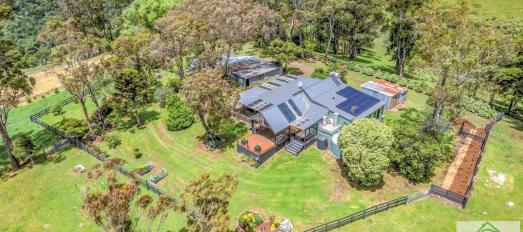












































































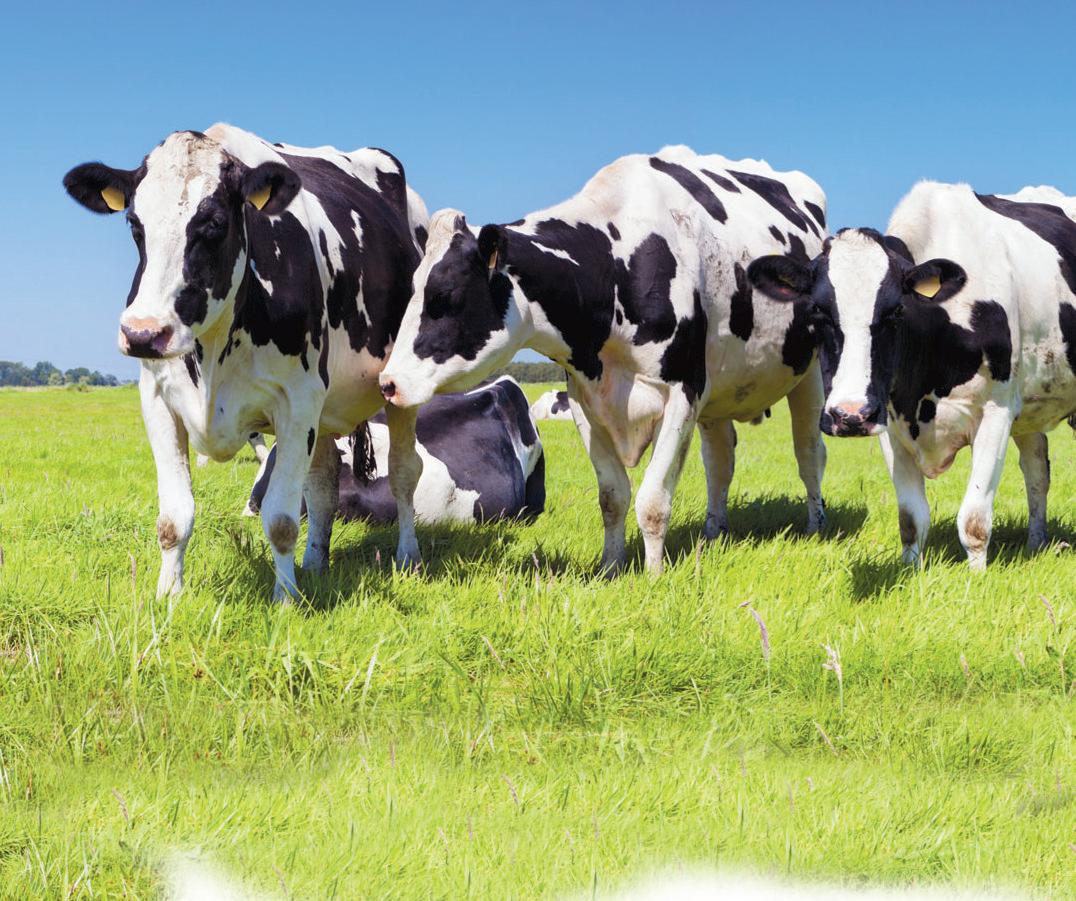
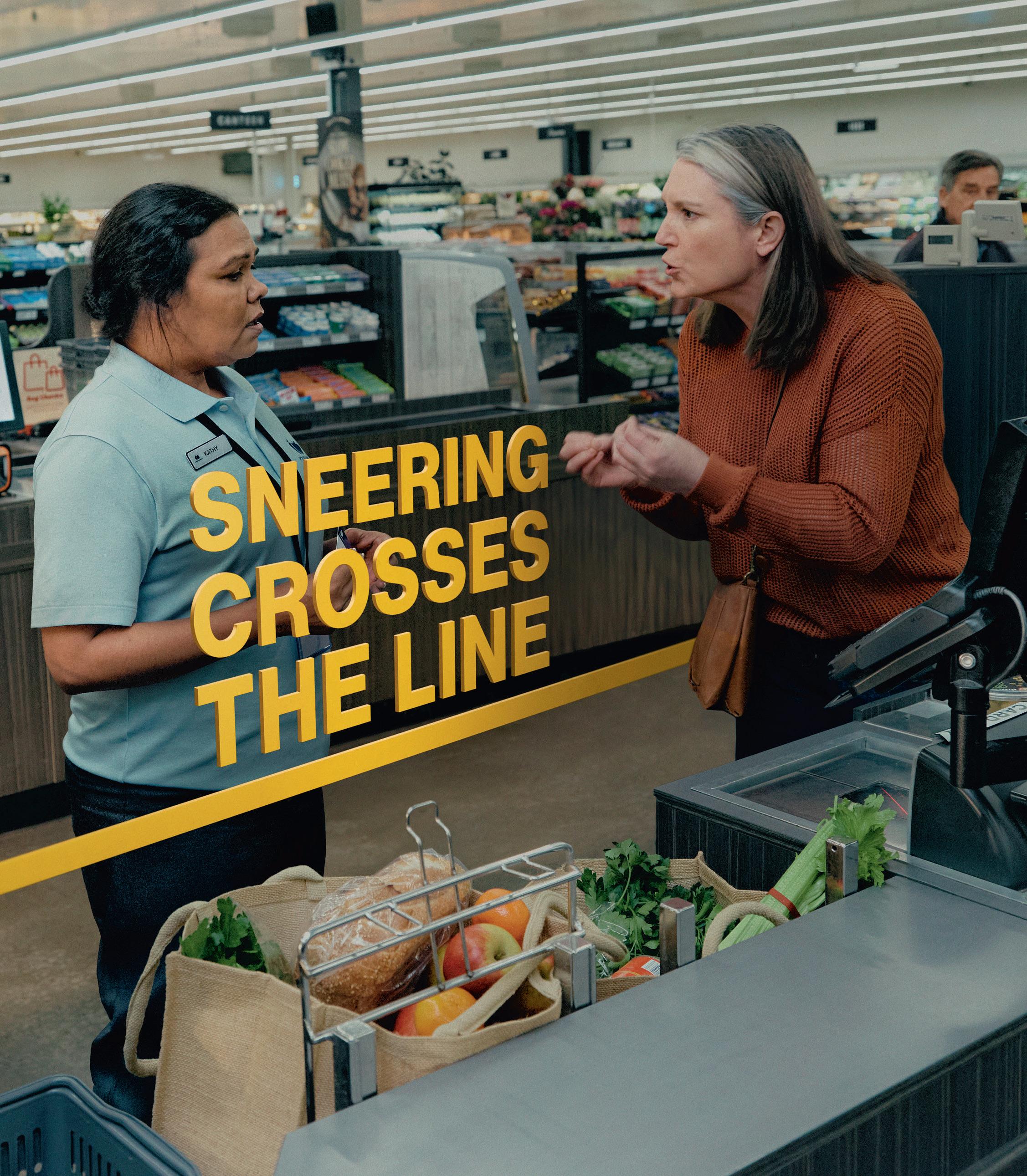










































Jeff CAVE
IT is difficult to imagine amorestressful scenario for aproducer,anexotic disease has been diagnosed on theirproperty-what happens next?
Naturally, thereare numerous possible scenarios and the approach taken wouldvary according to the specific disease. Aseries of documents known as AUSVETPLAN is in place to guide the process to help ensureaconsistent, successful outcome.
In general,the producer’sproperty would be quarantined to limit the chance of the disease spreading to other properties. Further samples may be collected to confirmthe diagnosis and to help ascertain the extent of its spread on the property. These would be tested at the CSIRO Australian Centre for DiseasePreparedness(ACDP) at Geelong.
Epidemiologicalinformation, suchas recent movements on and offthe property, would be collected to help guide tracing and surveillance activities on other properties. An Incident Control Centre wouldbe established at asuitablelocation in a nearby town, whose activities would be directed by aState Control Centre.
Infected premisesoperationswould be put into place to eradicate the disease on the property and to ensurecontaminated material doesn’t leave the property. This would vary according to the natureofthe disease.
If destruction of livestock or property is necessary,compensation would be paid. Localmovementcontrols may be set up through the declarationofrestricted areas and control areas.

Eventually, when eradication of the disease had been achieved, proof of freedom testing would be necessary to prove to our trading partnersthat the diseasehad been successfully eradicated. It sounds likealot, but all of this would be necessary in order to preserve Australia’s multi-billion-dollar livestock industriesand to prevent the establishment of anew exotic disease. Naturally, none of this will be necessary if we don’t allow these diseasestoenter Australia and come into contact with our livestock.
We urge farmers to report any unusual signs orsuspected casesofemergency animal disease immediately to the all-hours
and eradication. For furtherinformationcontactyour local




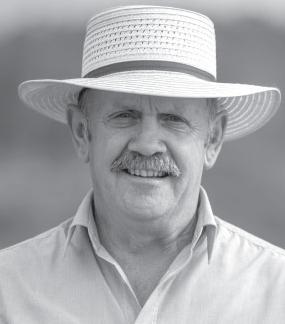


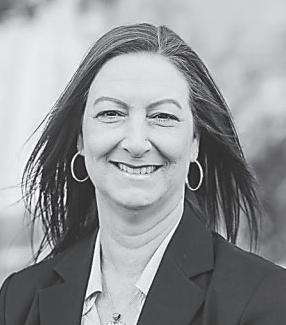

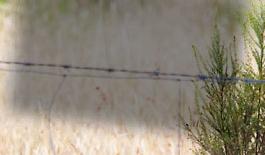



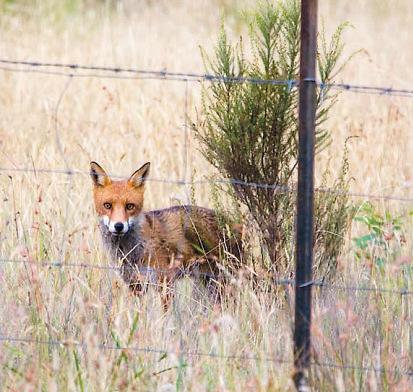
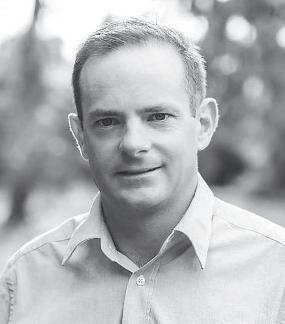



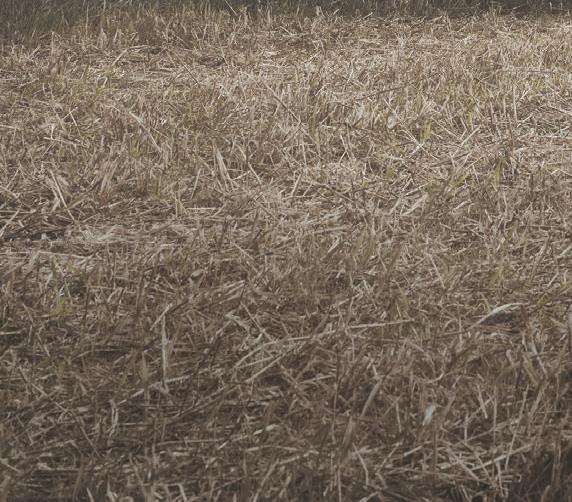

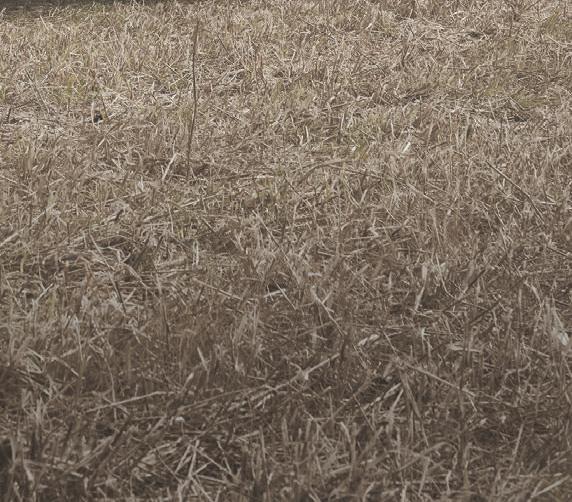



LIFE isn’t always abeach for Phillip Island’s beloved penguins, who have been found to divorce their partners and find anew mate if they aren’t satisfied with the number of young filling the nest -but it’s arisky decisionthatcan lower successintheir next breeding attempt.
New research conducted over morethan adecade by Monash Universityand Phillip Island NatureParks has taken adeep dive into the complicated love lives of the species to determine what it can predict about the colony’s reproductive future.
Researchersfound therateofdivorce among thepenguinsisamorereliable predictorofthe reproductivesuccess of the colony than environmental factors like habitatchange or behavioral traits like the timethey spend foragingfor prey, with moredivorces and re-pairings in abreeding season resulting in lower reproductive success across the colony.
Phillip Island is home to the 37,000 little
penguins, the world’s largest colony, and the internationallyrenowned Penguin Parade attracts thousands of visitors each year to watch these seabirds waddle home from the ocean to their burrows at dusk.
Professor RichardReina, HeadofMonash’s Ecophysiology and Conservation Research Group in the School of Biological Sciences, has studied penguins on the island for 20 years and said contrary to popular belief, not all penguins partner for life.
“In good times, they largely stickwith their partners, although there’s often abit of hanky-pankyhappening onthe side,” Professor Reina said.
“However,after apoor reproductive season they may try to find anew partner for the next season to increase their breeding success.
“Our study looked across 13 breeding seasons, tracking which individuals changed partners, or divorced, from one season to the next.
“Werecorded nearly 250 penguin divorces from about athousand pairs throughout the study, and we found that years with alower divorcerate resulted inhigher breeding success.”
Phillip IslandNatureParks Marine Scientist Professor AndreChiaradia said the divorce rate was an accurate predictor of success because it moreaccurately correlated with breeding rates than other factors impacting the penguins.
“Ourfindingson lowerdivorce rates amonglittlepenguins at Phillip Island under favourable environmentalconditions highlight the importance of considering social dynamics alongside environmental factors when designing strategies to protect vulnerable seabirdspecies,” Professor Chiaradia said.
MattSimpsonworked withProfessor Reina and ProfessorChiaradia on research as his Honours project while completing a Bachelor of Science at Monash University.
“I’m proud to have been able to make a significant contribution to the conservation of these fascinating birds by helping find new ways of identifying patterns that indicate the health of these bird populations,” Simpson said.
“This has been along time in the making and alot of work went into it. “It was also afantastic opportunity to gain real-world experienceinthe field whilecompleting my studies.”
This research is the latest in a decadesstrong collaborative relationship between MonashUniversityand Phillip Island NatureParks.
The full paper was published this month in the peer-reviewed journal Ecology and Evolutionand is available online at: doi org/10.1002/ece3.70787
THE GippsDairy Muster returned forits fourth consecutive yearon Wednesday, April 30 at the Federation University’s Gippsland Campus in Churchill.
Apremiereevent for the GippsDairy team, the Mustershowcased the latest trends, technologies,and practices in dairy farming and featured a line-up of industry experts and farmer panel discussions.
This year’s theme was Farming into the Future: Imagine, Inquire, Innovate, andaimed to provide Gippsland farmers with practical ways to enhance the futureoftheir farm business using new and developing technologies.
Theday includedfour key presentations:
Innovations in monitoring animal welfareand performance;
Utilising drones on farms;
An update on the PastureSmarts technology, and;
Virtual herding.
Attendees also heardaboutthe latest legislation updates impacting the use of new technologies on farms across Victoria.
Leongatha Southdairyfarmer, Callum Moscript emceed the event.
Along with his extensive farm experience, Mr Moscriptis aco-ownerof First Class Genetics, driving advancementsinAustralian livestockthrough the import of uniquegenetics from globalmarkets.He is committedto guiding innovationand fostering leadershipwithin the sector to ensure its sustainability and futuresuccess.
GippsDairy would like to thank its gold sponsor Gardiner Foundation, and silver sponsor Lallemand Animal Nutrition, with additional support from Bowden’sAgricultural Contracting P/L,Burra Foods Australia, Community Bank Heyfield and District, Dairy Farmers Victoria, DeLaval, Fonterra, and GEA.




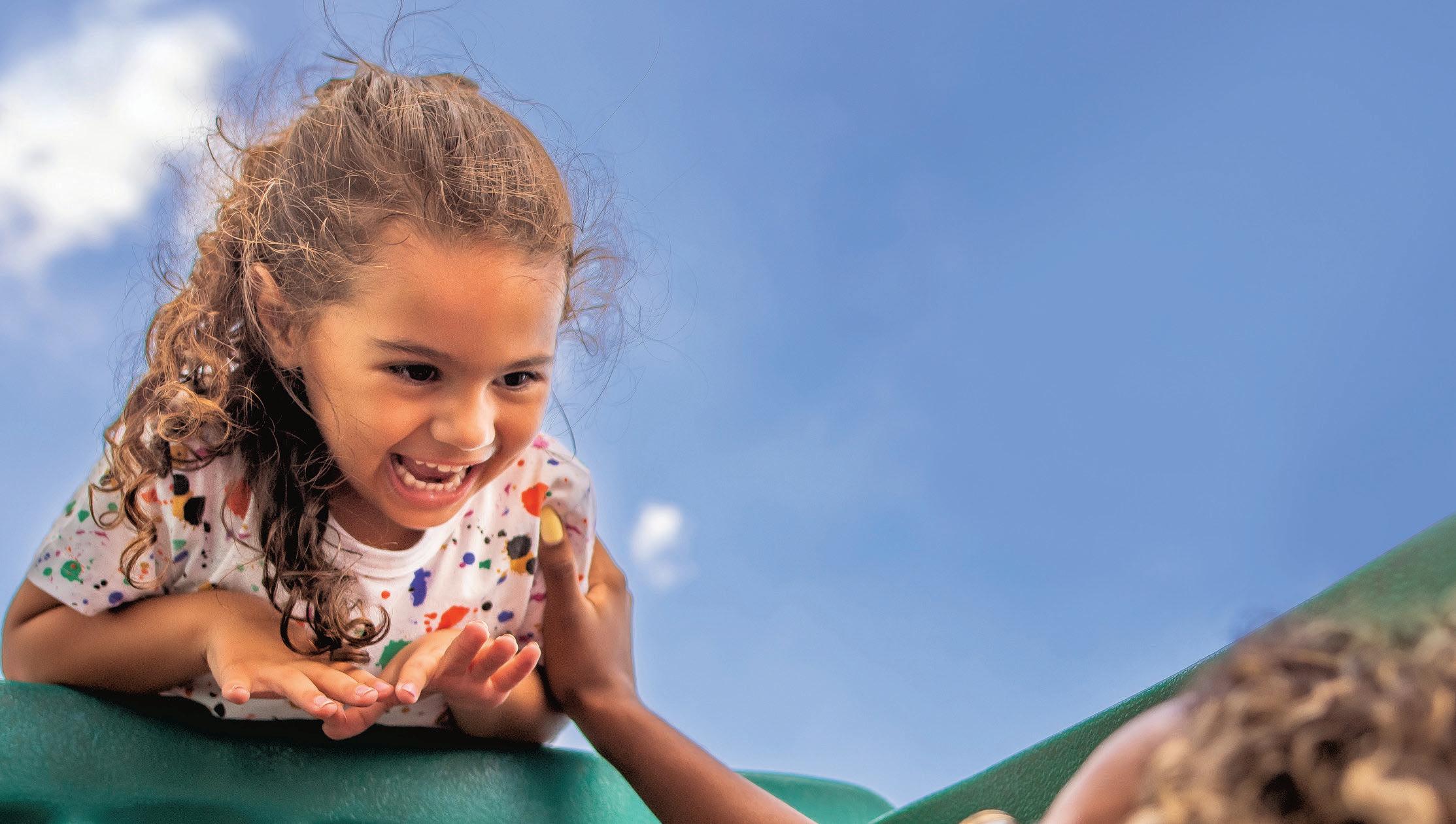
VICTORIAN farmers have risen abovea “dry summer” to post asolid turnaround in sentiment, with ruralconfidence now at a12-month high, the latest Rabobank Rural Confidence Survey has found.
Expectations of good seasonal conditions, along with positive commodity prices and international markets, areshown to be driving increased positivity in the sector
The quarterone surveyfound net farmer confidence in Victoriahad climbedinto “positive territory” in the new year,with a reading of five per cent, up from negative nine per cent in the December 2024 survey.
A quarter of Victorian farmers surveyed (25 per cent) now expect agricultural economic conditions to improve over the coming year (up from 19 per cent last quarter), whilethe proportion expecting agribusiness conditions to worsen also fell back -to20per cent, from 28 per cent last quarter.Afurther 48 per cent expect similar conditions to the past 12 months.
In February, the latestsurvey found Victorian farmers credited better seasonal conditions,along with commodity prices and global markets/economies, as having apositive impact on their business -cited by 47 per cent (up from 32 per cent), 28 per cent (29 per cent), and 25 per cent (10 per cent) of survey respondents, respectively.
By region, the Rabobank survey found confidence levels wereupinthe Victorian High Country, with sentiment now the highest in the state,while the Goulburn Valley, Gippsland and south-west Victoria also posted arebound in sentiment.Meanwhile confidence fell in the Wimmera/Mallee to other regional areas, with farmers particularly concerned by rising input costs.
Nationally, the survey foundfarmer sentiment was up across the board-except in WesternAustralia whereitremained relatively subdued -with South Australia and Tasmania posting the largest rebounds in confidence. Approximately aquarterofthe nation’s farmers (at 24 per cent) reported they wereexpectingagribusiness conditions to improve in the next 12 months, up from 18 per cent previously.
Rabobankstate manager for Victoria and Tasmania, Sally Bull said while many Victorian farmers had dealt with achallenging year in 2024 -with well below-average rainfall across much of the state negatively impacting production- farmers were approaching the new year with optimism.
“Farmers areholding expectations for a better season,improvingcommodity prices and international market opportunities thatwillhaveapositiveimpactontheir businesses in the year ahead,” she said.
Ms Bull said, as always, thereisalot of anticipation around the autumn break.
“Farmers arewaiting impatiently for that first significant rainfall event to get the growing season started. It has continued to be exceptionally dry across much of western Victoria, as well as pockets in east Gippsland,” she said.
By commodity,the Rabobank survey found confidence rallied among Victorian beef producers, withcattle farmersthe most positive about their prospects in the state -35per cent expecting conditions to improve (up from 11 per cent), while afurther 48 per cent(was59 percent) forecasting similar conditions to last year
“Good seasonal conditionsinparts of New South Wales and Queensland have supported the Victoriancattle market through summer -with northernbuyers sourcing Victorian cattle for their ‘grassed-up’ paddocks,” Ms Bull said.
Confidencelifted in dairy, with29 per cent of the state’s dairy farmers expecting farmbusiness conditions to improve -up from 16 per cent last quarter
Ms Bull said milk production had been weakinwesternVictoria,but remained strong in the east and north of the state.
“And for the year ahead, the forecast for milk production as we approach this year's spring peak,and for the entire 2025-26 season,willlargelyhingeon rainfall and weather patterns,” she said.
“Summer rainfall over many key dairying

regions has been average or lower.Good autumn rainfall will be key to supporting abetter feed supply outlook and support milk flows.”
The survey founddairy farmers were particularly positive about the outlook for commodity prices, with 46 per cent citing commodity prices as having apositive impact on the 12-month outlook.
MsBullsaid dairy farmers werefeeling optimistic about the direction milk prices weretaking.
“Thereisasentiment in the sector that dairyfarmershave movedthrough the bottom of the milk pricing cycle and are now on the other side,” she said.
In line with rising confidence levels, the latest Rabobank survey found investment appetite increased among the state’sfarmers,with24 per centof thosesurveyed looking to invest moreintheir farmbusiness in the year ahead, up considerably from 14 per cent with that intention in the previous quarter. Meanwhile, just13per cent areintending to wind backinvestment (16 per centlastquarter)and afurther 63 per cent (67 per cent previously) are planning to maintain investment at current levels.
Across the state, investment priorities for farmers wereshown to be on-farm infrastructure(includingfences, silos, yards, etc) for 67 per cent, adopting new technologies (37 per cent) and new plant/ machinery (33 per cent).
“Efficiency improvements areatop priority for many,” Ms Bull said.
“With with farmers adopting new technology to drive efficiencies -taking on aprocess improvement mindset.
“Andmoreand moredairyfarmers are choosing to invest in robotics to improve production efficiencies. While grain growers arecontinuing with the long-termtrend of investing in on-farmgrain storage, opening up different markets and different selling periods.”
Ms Bull said many Victorian farmers were taking the opportunity to really look ahead and plan for futureneeds.
“Lookingin the rear-view mirror, many farmers can see they have come through apretty good period in recent years, with reasonable seasons, reasonable prices and rising asset values,and arenow taking the time to consider how to best preparetheir businesses for the next cycle,” she said.
The survey found 15 percentofVictorian respondents arelooking at property acquisitioninthe coming year (up from nine per cent last quarter),with the highest interest
among grainand dairyproducers, at 22 per cent.
Ms Bull said, in line with improving sentiment, farmers revised up projections for their farmincomes for the next 12 months to the highest level since June 2022.
Those expecting gross farmincomesto increase rose to 31 per cent(up from 17 per cent last quarter), while a22per cent
expect aweaker financial result (down from 36 per cent previously). Afurther 45 per cent expect incomestoremain similar to last year
Optimismaboutincomes was highest among beef producers, with42per cent of the state’s cattle farmers expectingtheir gross farmincome to increase, up from 14 per cent.

Philip HOPKINS
LAKES Blue Energy is increasingly confident that within afew months, its 21-year struggle to get anew big onshoregas field in South Gippsland up and running, will come to fruition.
The company, previously Lakes Oil, has submitted plans to the state government for the Wombat5 gas well, located afew kilometres west of Seaspray. It is aconventional well and does not requirefracking.
Lakes Blue Energy’s ChiefOperating Officer,Tim O’Brien, said the plan for Wombat 5was progressing well.
The company had submitteda drilling proposal, including environmental management, social heritage, stakeholder engagement, safety and well operations plans in October
“TheDepartmentcame backwith their request for moreinformation andclarification beforeChristmas. We have resubmitted with all those clarifications and extra information hopefully satisfied,” he told the Gippsland Farmer
“Now the department is assessingit. Fortunately, theredid not appear to be any real matters of concern. The simpler things, we have been able to clarify; we’re reasonably confident therewill not be too many revisions.”
Mr O'Brien's commentscame as the chief executive of the Victorian Chamber of Commerce and Industry, Paul Guerra, said Victoria's gas suppliesweredangerously low.
In an opinion piece in the Herald-Sun, Mr Guerra said experts maintained there aregas reserves onshoreand offshorein Victoria.
"So if it's there, let's encourage the private sector to find it, as the benefits for Victoria aresignificant," he said.
Gas is needed for the state's energy future.
Mr O’Brien said arig had been lined up to start operating at Wombat 5mid-year
“Wehad planned to shareanother rig drilling in Port Campbell but that had to go up north, but we areinthe process of contracting another one that should be able to drill hopefully in July,” he said.
“Wewill be testing pretty quickly once we drill and complete the well; hopefully the end of September,wewill know whether we have got the commercial flow rate once and for all and will start the development plan. Evenatbest,we’retwo yearsaway from having gas to market. Thereare still some interesting timesfor thestateinbetween.”
Mr O'Brien said the gas was very clean and needed littleprocessing,containing no carbon dioxide, mercury and hydrogen sulphide (rotten egg gas).
"Wedon't need to go through Longford; we can process ourselves and put it straight into the pipeline," he said, which is nearby.
It’s 21 years since Lakes Oil drilled Wombat 1inDecember 2003.
“By the time we have this in production, it will be probably 24 years since we first discoveredwhatispotentially the largest conventional onshoregas resource in Victoria,” he said.
“There is alot of gas in Victoria, that’s what kept us going for so many years. Wombat 5was to be drilled in 2014; it was basically approved but got caught up in the (Andrews government) moratorium. If it had been developed 10 years ago, it would have been the stepping-stone to alot of the other onshoredevelopments, but everyone is still questioning whether onshoreVictoria can work in Gippsland; obviously onshore production has been in the Otway Basin for 40 years.”
Mr O’BrienisconfidentLakes Blue Energy can provide 50 terajoules of gas daily -10
percentofthe state's gas needs from early 2027 when gas shortfalls areexpected.
This would not only prove that Gippsland has alot moregas than traditionally believed, but would also reinforce South Gippsland's gas sector as gas production from Esso's wells in Bass Strait continues to slow.
Mr O'BriensaidthatGaffneyCline and Associates, aglobalconsultancy in the energysectorthat provides technocommercial advice,estimated in2008a contingentresource (2C) of 293 billion cubic feet in the Wombat Field -"arecoverable resource". This figurewas revised up to 329 billion cubic feet in 2010 after the successful drilling of Wombat 4.
However,this became aproblem asthe state government took asemanticattitude, stating therewerenoproven reserves in Victoria.
"Tohave aprovenreserve, youneed to have effectively acontract in place, a development plan; you need to be ready to sell the gas effectively.Wehave contingent resources, which means we have defined avolume of gas, but haven't provenitto the commercial stageyet,but the gas is there," he said.
"Wombat 5isdesigned to prove we can get acommercial gas rate out of this formation."
Mr O'Brien said the Wombat 1, 2and 3 wells werenot optimised enough forthe magic number,but arecompleted and suspended gas wells, which would likely be incorporated into any field development plan. Wombat 4was cased and suspended, flowing gas from the deepest interval from adrill stem test (DST) during the drill operations, which Gaffney Cline assessed as having lots of prospective resources.
"The gas was recoverable", he said, but the no proven reserves argument kicked in. "This does not acknowledge we have lots



of prospectiveresources andcontingent resources. Thereisgas there. The public does not understand that," he said.
The Wombat 4wellwas effectively approved to be drilled at the end of 2013. Then in April 2014, the Coalition government decidedto have ayear-long consultation process,but subsequently lost government.The arrivalofthe Andrews government led to subsequent moratoriums on onshoreexploration, coal seam gas and fracking, and morestudies.
Mr O'Brien said Wombat 5was designed as aconventional well that did not need to be fracked -a horizontal well through the top of the Strzelecki formation.
"Wombat 4will sit therefor the time being. We plan to have 10 and 12 wells, depends on how Wombat 5goes. The aim would be to drill, bring wells online to get up to 50 terajoulesaday. As the well starts to decline, we can bringonmorewellsto maintain supply," he said.
"Once that supplystartsdepleting, we havefield tothe north, the TrifonField, whichwewouldthenstart to develop to hopefullymaintain the 50 terajoulesper day, hopefully for the next 20-plus years to help alleviate the gas crisis which is going to severely impact the state."
Mr O’Brien said the government has been supportive, has put regulations in place thatallow development to go ahead, “to make surewetick all the boxes for them”.
“They realiseVictoria needs gas in the short term; gas is getting moreexpensive, and thereis not enough capacity in the pipeline from Queensland to send it down to handle the big fluctuations we have on high demand days inwinter.Itwas cold last June,reservesnearly ran down, but we werelucky -wehad amild July and August,” he said.





ISOLATED dust storms recently area reminder of how fragile some of our soils are.
They arealso agood reminder thereisstill time to prevent this damage by de-stocking morevulnerable areas of the farm.
While duststormscontainmostly mineral materials, they also contain significant quantities of organic matter,one of the most valuable components of our soils.
Leaving stock in apaddock for an extra couple of weeks to make use of remaining water suppliescan be all it takesto expose the paddock to the risk of wind erosion.
Dust storms or winderosionoccurwhen the speed of the windatthe soil surface exceedsthe forces holding soil particles
in place. Typically, soil particles exist as a small pea sized peds or aggregates.
As these peds or aggregates break down, the soil becomes morevulnerable to erosion.
Once the process of wind erosion starts, it can be nearly impossible to stop as the larger sand grains bounce and roll across the soil surface stripping remaining vegetationand smashing (or sand blasting) the soil in front of them.
The most vulnerableareas arethose with lightly textured soils, littlegroundcover and shelter belts and topography that exposes them to high wind speeds.
Lighter textured soils arethose containing ahigh proportion of sand with little or no clay.
Wind erosion can start anywherethe soil has been disturbed, such as in gateways, along tracks and around water troughs.
The key to preventing wind erosion is to maintain as much ground cover as possible and avoiding disturbing the soil. Aim for 80 per cent cover in pasturepaddocks and 60 per cent cover in crop stubbles.
Ground cover also helps moderate temperatureextremes in soil and retains moisture.
Maintaining good ground cover will reduce the risk of wind erosionbut will also reduce damage to pastures andassist with afaster recovery following the autumn break.
Baresoil is also moresusceptible to
oxidation and microbialactivitythatcan release stored carbon as CO2. Building the soil carbon levels back up can take yearsindrier climates.Soil carbon is a valuable soil resource as it improves soil structure, increases water retentionand nutrient availability.
When groundcover levels are low the only practical way to reduce the risk of wind erosion is to remove livestocktootherpaddocks or place stock in astock containment area.
Further information on support available can be found at: agriculture.vic.gov.au/ dryseasons, or by calling 136 186.
WATER is a precious commodity and with the current dry seasonal conditions, it’s a critical farmasset to manage and monitor AgricultureVictoria LivestockIndustry Development Officer,Christopher Bloresaid having the right quality of stock, domestic and commercial water,whereyou need it, when you need it, and in the quantity you need, is critical for all farmbusinesses.
"Thereare some simple tools that youcan use to monitor water supplies in dams and tanks across your farm. Tools can be as simple as acouple of floats and abit of bar to give you an indicationofthe waterleft in your tank, or aDAMDEEP tool," he said.
"A video of how to make aDAMDEEP measuring tool can be found on the AgricultureVictoria website.
Moreadvanced options such as ultrasonic or hydrostatic sensors to measurethe depth of tanks or dams or flow meterstomeasure
water flow rates from pumps and tanks, can be set up to send automatic alerts like when atankordam is low.
"Ifyou are lookingtocompareoptions, visit: agtechfinder.com, as this website has alarge range of available AgTech solutions forwater monitoring. Just search the term ‘water’ to browse arange of options.
"Chat withyourlocalrural storeabout options and the ongoing support available at alocal level."
For further information on calculating livestock water needs and how much water you have on farm, refer to the Stock Water Resources page on the Feeding Livestock website, or contact Chris via email at christopher.blore@agriculture.vic.gov.au
For moreinformation aboutdrought and dry seasonal conditions support visit: agriculture.vic.gov.au/dryseasons, or call 136 186.


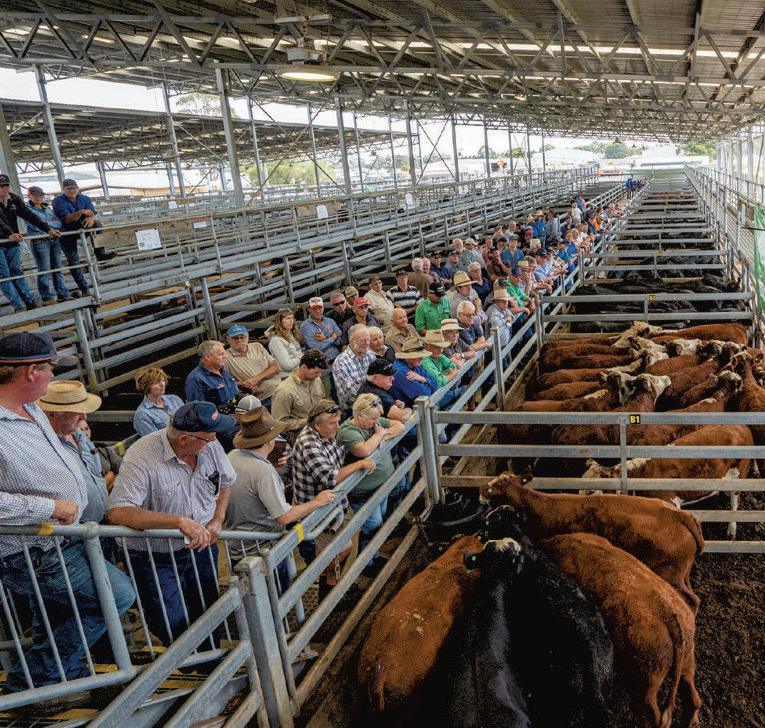



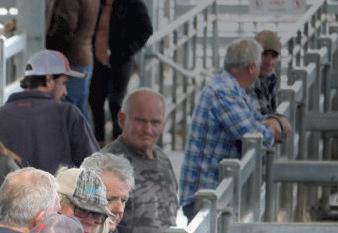











ADVER TISING FEA TURE
Brownwiggtakesthe health and productivityofyour livestock very seriously
After all,any threat to your livestocks welfare puts your livelihood at risk.
Thenutritionalstatus and immune functionofherdinganimals areaffected by manyfactors andproblems can rapidly affect (or infect)largenumbers of communal animal stock.
Hence, animal health, theiroverall hygieneand welfareare critical at all stages of thelivestock chain.
These issues canhave adirect and adverseimpact on your productivity if they aremismanagedorifyou are misinformedaboutorequipped with the wrong treatment products.
Brownwiggknows that theseanimal health problems greatly affect your productivity andthe bottom line if they arenot correctly identifiedand quickly treated
Some of the problems that they frequentlyassist theirclients to overcome:
•Reducedgrowth rates
•Reducedreproductive rates
•Reducedmilk production
With Brownwigg’sadvice andspecialised range of productsyou will see markedimprovements in thefollowing areas:
•Increased pasture/fodder production andutilisation
•Optimalanimal health management techniques

•Increases in healthy animals
•Increaseinanimal hygiene andillness
To keep on topofyourgame withanimal healthand farm biosecurity, Brownwigg stocks abroad rangeofreliable easy to useproducts from themost reputable companies.
FirsttoOpen,lasttoclose.
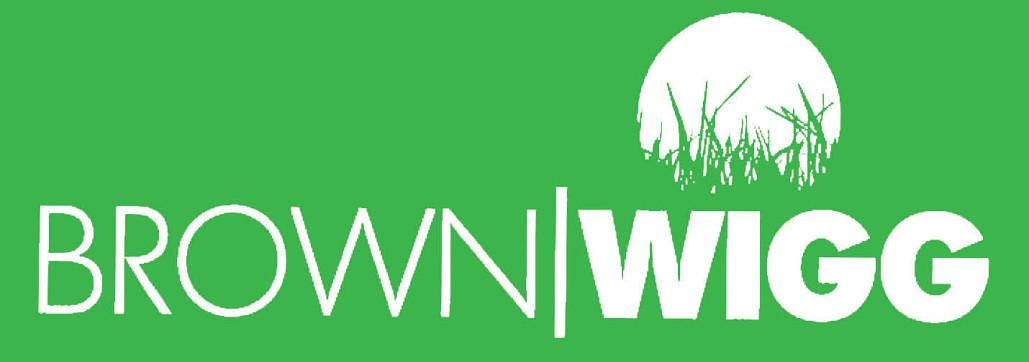
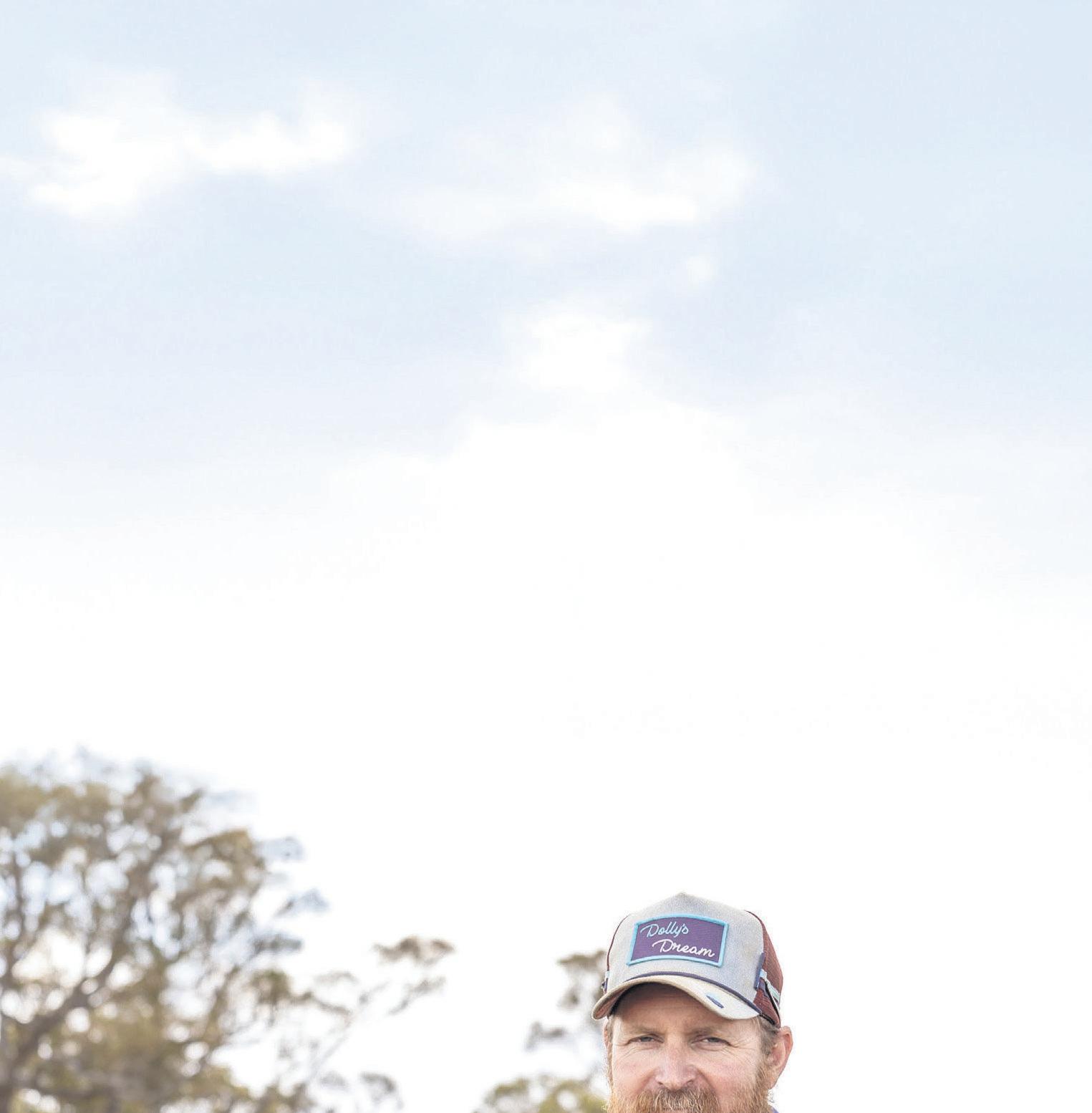























































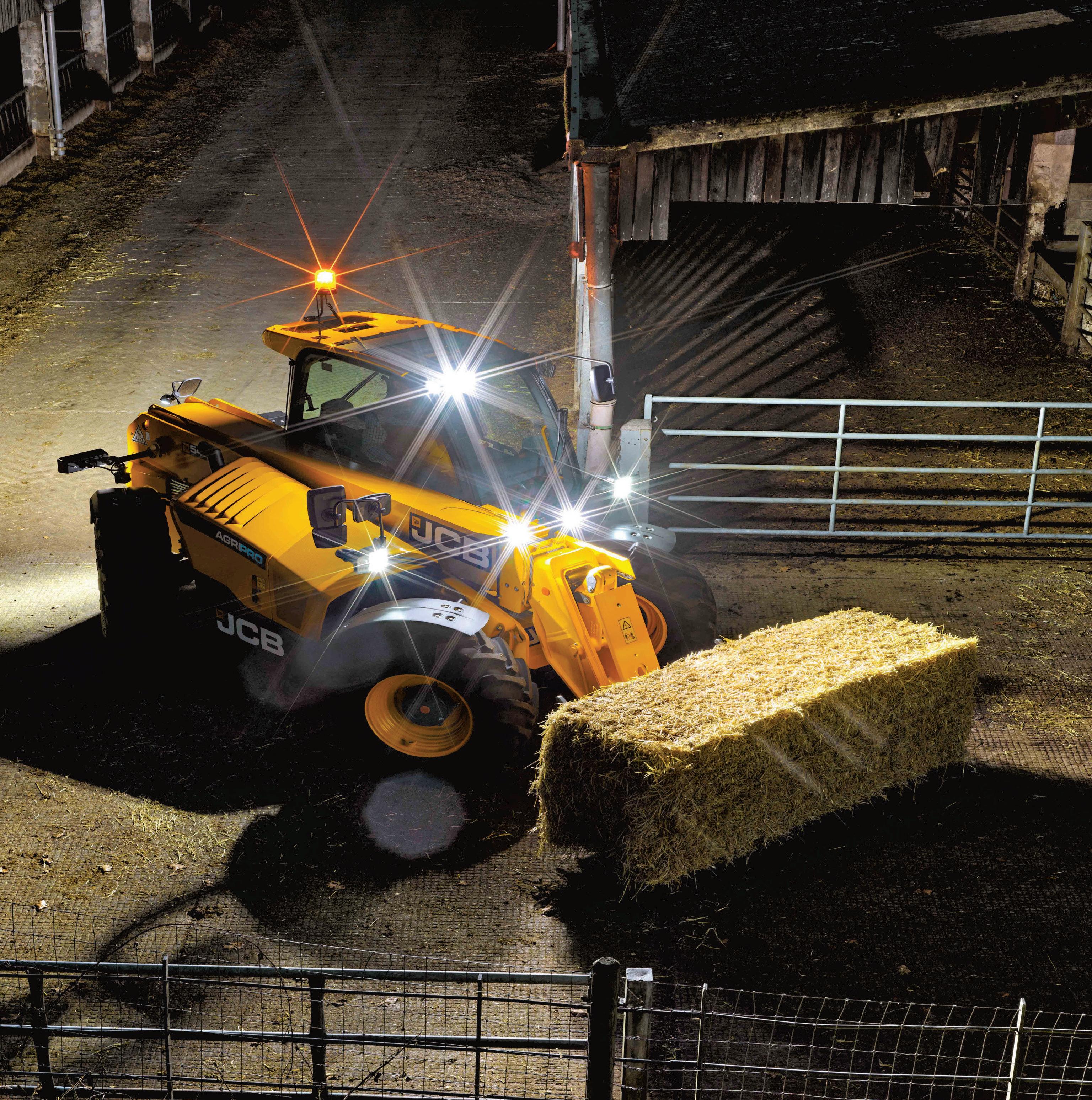

TEMPERAMENT,also known as docility, is deemed the most important bull selection criteriaand estimatedbreedingvalue by cattle producers, as reported in the 2024 Beef Breeding Insights Survey.
Angus Australia conducted producer surveys in 2019 and 2023 to assess changes in Australian beef producers’ knowledge and attitudes towards genetic technologies This was done through the “Enhancing Technology Adoption Across the Angus Genetic Improvement Pipeline” project, funded by the MLA Donor Company.
The 2019 survey established baseline data from 1023producers, whilethe 2023 follow-up with 977 participants provided updatedinsights. The surveys aimed to monitor shifts in producer understanding and adoption of genetic technologies, as well as the prevalence of Angus cattle in the industry over time.
As reported in 2020,post the original survey, temperament was viewed by beef producersasthe mostimportantbull selection criteria.
Results from the 2024 Insights survey revealed that not only is temperament highlighted as the most important bull selection criteria, but it is also considered one of the most important Estimated Breeding Value (EBV) and consideredasatop three reason producers select their respective breed.
Cattle producers in all states -both Angus and non-Angus -listed temperamentas the most important bull selection criteria.
Temperament refers to cattle behaviour in confinedspaces or unfamiliar situations, often manifesting as either fear or aggression. Temperament is an essential trait in beef herds, with favourable temperament greatly contributing to the profitability of abeef enterprise.
The benefitsofimproved temperament are widely recognised for their role in enhancing herdefficiency and profitability. The

advantages of good temperament,or docility, arewell-documentedand recognized throughout the industry.
Key benefits include: lower production costs; easier handling; reduced infrastructuredamage; minimised health and safety risks; enhanced feedlot performance and eating quality, and; decreased risk of dark cutting.
Docility EBV estimates of the genetic differences in temperamentbetweenAngus cattle can be assessed by the docility EBV provided by Trans-Tasman Angus Cattle Evaluation (TACE).
The docility EBV describes the expected
percentage of progeny with acceptable temperament based on docility scores collected through yardor crush assessment conducted at weaning.
Docility is amoderately heritable trait, with aheritability estimate of 0.21, making it possible to enhance docility through genetic selection.
Additionally,weak but positive genetic correlations between docilityscores and production traits suggest that selecting for improved temperament does not negatively impactgrowth, fat, muscle, or reproductive performance.
Angus Australia members havebeen
making considerable genetic progress over the past 20 years as they continue to select for improved docility.
By prioritising temperament in breeding strategies, producers can drive efficiency and profitability in the evolving beef industry.
For moreinsights from the survey, visit the Australia Beef Breeder Insight report, which provides adetailed summary of the survey findings.
-Angus Australia


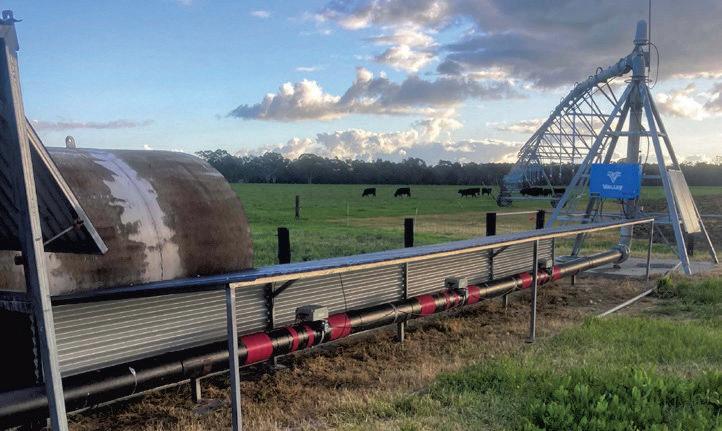

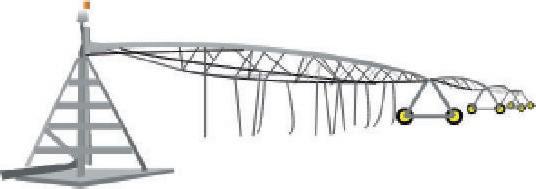





JamesNASON
ONE burning question hung in the air as analyst Simon Quilty strode onto the WagyuEdge conference stage on Thursday, April 10 -12months after he boldly predicted at the 2024 WagyuEdge conference that Australian cattle prices wereset to double by 2026.
With US PresidentDonald Trump rewriting tariff rules and throwing global trade arrangementsinto almost daily turmoil in recent weeks, wouldhestand by or walk back his daring forecast from one year ago? He didn’t back down. Instead, he doubled down.
“I said last year that we would see cattle prices double in 2026,” he said as he opened his address.
“I still believe that is the case.
“Andinactual fact, itwillbeOctober 2026, to really put anumber and adate on time on it.”
For context, prices for several key cattle categories areindeed up on this time last year:feeder steersare 26 percent above 12 months ago, heavy steers 41 per cent higher,cows 55 per cent higher,yearling heifers 36 per cent higher,and yearling steers 18 per cent higher
There’s still some way to go beforereaching Mr Quilty’s predicted 100 per cent increase by 2026, but, he outlined in detail why he believes a demand-driven market and tight global supply will trump Trump tariffs as the key driver of Australian cattle prices andpush them higher and higher into next year
“We’regoing from asupply-driven market of the last two years, Ithink to ademanddriven market,” Mr Quilty said.
Tariff regime outcomes likely to be favourable for Australia
THE night beforehis 2025 WagyuEdge conference address on April 10, Australia
woke to headlines that Trump haddecided to pause his sweeping new tariffintroductions on 75 countries for 90 days, with the exception of China -whereheupped the ante by increasing tariffs to 125 per cent.
To the extent that he sees tariffs having an effect,Mr Quilty believes they will be largely positive for Australia.
The 90-day tariffpause has brought many countries down to abaseline 10 per cent tariff, which he said eased earlier concerns of aglobal recession and fears that it could negatively affect demand for Australian beef in key customermarketssuchasJapan and Korea. Brazil has already filled its annual quota to the US -which happened in mid-January -and now incurs ahigher 36.4 per cent tariff.
“The clearmessageis that far less lean beef out of Brazil is nowgoing into America in the last 48–72 hours, and demand for Australian beef has jumped dramatically in thelast 72 hours,” Mr Quilty said.
The US' decision to introduce tariffs is “very inflationary” for the US itself and will lift domestic prices.
“So as aresult of that it lifts offerings into other markets around the world,” he said.
“Australia and America share92per cent of the Korean imported beef market If you lift prices into Korea out of America, that creates opportunities for us, because our prices can be lifted, but also I can tell you now less US beef will go into Korea, creating moreopportunities for us.
“The same holds for Japan, they too are seeinghigherofferingsout of America, because it is inflationary, and as aresult Australian beef into Japan is morecompetitive and we can put up prices and sell more volume.
“And the same story happens all over the world,but thosetwo markets in particular.”
US beef has beenlargelyshutout of
China,after China decided not to renew access for morethan 300 US export plants.
The US was shipping up to 2500 metric tonnes of beef to China per week and is now back to 50 tonnes per week.
“So right now, we arethe one player in town that can really fillthe void when it comes to grainfed beef into China,” Quilty said.
The earliest the US could regain access is June, but the increased 125 per cent tariffonChina could mean it is much later
“So now we have China, Korea,and Japan seeking Australian beef,” he added.
Currency movements have also improved Australia’scompetitiveness
DESPITE lifting by 200 points following Mr Trump’stariffpause, theAustralian dollarhas actually fallen in comparison with other currencies amidthe tariff chaos.
That meantAustralia was in the box seat, because customers such as Korea and Japan had morespending power, and Australian beef also had greater price competitivenesscomparedtoits export competitors.
AUS expert Mr Quilty follows closely is forecasting theAustraliandollar to be trading at 55 US cents in June and at US49c by next year
“Why? Because of China. Because of the deterioration in that market, iron ore, and our dependence on them will see that market and the Aussie fall with it.”
Herd rebuilding and global tight supply to drive prices higher
MR QUILTY said that tight supply globally would outweigh tariffeffects in the years ahead.
“Thelackof supply in thenorth and across Australia in the next few years will far outweighany impact of tariff in my mind.”
He felt herdrebuilding was imminent.
“I think arebuild is imminent,” he said.
“Wewill start to see it in July this year
“The worstofthe drought Ithink is over,” he added, noting the female kill ratio and price spreads between heifers and feeder steers was moving towardrebuild indicators.
US herding into herd rebuild mode
MR QUILTY said he “truly believes” the US has startedtheir herdrebuild, with key indicators including asubstantial spread between the pricesfor breedingheifers and slaughter heifers -now at aUS$1294 (AUD$2500) premium.
“Tomethis is avery strong indication they’remadly moving down the path of rebuild.
“The same thing happened in 2013, 2014, and 2015 when they wererebuilding last time.
“So Itruly believe they have started their rebuild which means their peak in pricing will be this year
“Next year will begood, but thisyearI think will see the peak in US domestic pricing, which we will benefit from.”
ANOTHER speaker who followed Mr Quilty,Erin Borror from the USMeat Export Federation, had adifferent view, suggesting an increase in US beef production is not likely until 2028 at the earliest.
US domestic beef prices, he noted, were already surging.
“That to meis thetruedefinition of a strongdemandmarket-increased sales or volume and increased pricing,” she said.
Australia playing apowerful “backfilling” role in global beef trade
“IF you look at Japan for the last few years, Australia’s exports wereup15per cent, America’s fell 22 per cent."
“Why? Because of their rebuild and their liquidation, they arefalling in numbers dramatically. Korea, we’reup24per cent


into that market. And America fell in three years in supply, 22 per cent.
“And the same with China, we’reup22 per cent, and America fell 25 per cent.
“Weare backfilling, meaning thatas America pulls away due to lack of supply, we’refilling the void.”
Cattle on feed and Wagyu outlook
BACKED by these trends, it was no surprise to see recordnumbers of cattle on feed in Australia, he said.
“I expect that to go to 1.5 million or 1.6 millionthis year,as we keep backfilling around the world.”
Commenting specifically on trends of relevance to Wagyu producers, Mr Quilty noted the effectthatJapan’shigh-end Wagyu exports is having on global markets.
“They export would you believe marble score9+.
“So they arethe real elite end of the market.”
Mr Quilty said Japan is currently sitting at recordproduction levels,with slaughter up 20 percent since 2017, and most of the surplus now being exported.
“They simply do not know what do with it, so they’regoing to export it,” he said.
“If youlookatthe overall volume, it doesn’t seem like alot: 10,000 metric tonnes versus
2700 metric tonnes back in 2017.
But itis up dramatically, and it floods that veryhighend score,9+, all overthe world,but in particular in NorthAmerica”
Structural change in Wagyu market
MR QUILTY said Australia and American Wagyu producers wereall aiming to upgrade marbling scores.
In America70per cent of marbling scoring for Wagyu was in the 3-4, 5-6 range, and only30 percent was in the7-8s and 9+ range.
“Well it hasn’t quite reversed but it has got close in America.Now 55 per cent arein those upper marbling scores 7-8, 9pluses. And only 45pc in those lower grades,”he said.
“And in Australia asimilarstory -the marketispushinghigheronmarbling score, whereonce upon atime 80 per centof our marbling scoring was in the 3-6 range, today it makes up 35 per cent and 75 per cent of the people Ideal with, 75 per cent of production is in the six and above range.
“Weare all heading in the same direction, both in America and Australia.”
Mr Quilty said the challenge was to not be caughtupinthe commodity end, but alsotobecareful of running into Japan at the eliteend of the markettoo when US consumers can pay apremium again, likely to be in 2027.
“So the hot spot is probably the 5-6, 6-7, 7-8 marble score.”
He predicts that 2027 will be the year wheninflationand wages moveback togetherand US consumers can start to affordtopay morefor Wagyu product again.
“By the end of this year and the start of nextyear, my expectationiswestartto get that premium back in the market, by the end of 2026 Wagyu will be back at 990 against an Angus of 775.
“2027 is wherewages and inflation come back together,where the consumercan start to affordit. It is an important year.”
-Beef Central



















Eric BARKER
COLES said it is actively working towards making a formal commitment to eliminate deforestationfromits supply chains,following Woolworths’ commitment last year.
The two supermarkets have signed up to an organisation called the Science Based Targets initiative (SBTi), which is pushing them to set “no deforestation” targets by 2025- with beefona list of “high-risk” commodities. Other big customers of the Australianbeefindustry, including McDonald’s, arepart of the group.
SBTiwas set up by agroup of environmental organisations, including the WWF (World Wide Fund for Nature) and the UN Global Compact. The WWF labelled Australia a“deforestation front” in 2021, puttingthe clearing of regrowthoncattle stations in the easternstates on the same level as chopping down the Amazon rainforest.
Woolworthsand McDonald’shave both locked in their commitments to “no deforestation”, with Coles being the last of Australian beef’s big customers to formalise the move.
As aresult of Coles' slower move to formalise the commitment, the company has copped the brunt of environmental groups campaigning to make surethey do it.
Groups like the Australian Conservation Foundation,the Wilderness Societyand Greenpeace have gone into overdrive to pressure the company.Theyhavebeen running onlinecampaigns superimposing pictures of koalas onmeatwrappers on Coles shelves and protesting at Coles’ annual meetings.
Asked why Coles has been quiet about its deforestation plans, aspokesperson said the formal commitment was in the works.

“Weare committed to working with our farmers, suppliers, and industry partners to reduce our impact on the environment,” the spokesperson said.
“Weare actively workingtowards releasing aformal no deforestationcommitment; however,this process is still underway.”
The SBTihas to approve commitments, withthe organisation giving companies likeColes acompleteguide aboutwhat they can and can’t say about their commitments. Neither Woolworths or Coles have given much detail as to how they plan to definedeforestation or whatitwill mean
for producers who supply them.
Cattle Australia (CA) last year developed a definition of deforestation in the Australian context, which concluded the deforestation wasthe illegalclearing of land that met forest thresholds. The environmental groups have their own definition.
It is unclear whether eitherofthe two supermarkets will use the Cattle Australia definition. Woolworthssays it plans to work with industry, and Coles last year said it was goingtocreatea“beef roadmap”to governand meet the commitment.
Cattle Australia Chief Executive, Dr Chris
Parker,said the organisation was actively working with the companies.
"Cattle Australia's Land Management Commitment Strategy spells out exactly how seriously we take this issue, and the incredible contribution cattle producers make to managing and enhancing our natural environment,” Dr Parker said.
“CA is now working proactively with the beef supply chain -includingColes -to embed key elements of the strategy within the IntegritySystems Company’sprocesses so that the industry is aligned to asingle set of recording and reporting standards for sustainability practices.
“Further,our producers areheld accountabletotheir commitmenttoresponsible land management by 136 different state, territory, and commonwealth laws relating to vegetation management activities.”
Asked whetherCAthoughtcompanies like Coles and Woolworths should be setting deforestation targets, Dr Parker said:
“Cattle Australia stronglybelieves that the Australian industry and the Australian legislative structures arethe most appropriate means for setting and enforcing land management standards -not ahodgepodge of vested interest groups and foreign governments, which do not have the detailed knowledge of the Australian environment and our cattle production systems pushing the deforestation agenda".
“If these groups wereserious about the Australian environment, they would recognise that invasive plants, pests and diseases arethe numberone issue impacting biodiversity loss in Australia, and that producers arespending $5.3 billion annually in managingthese threats, all while contributing to global food security through the export of protein.”
-Beef Central
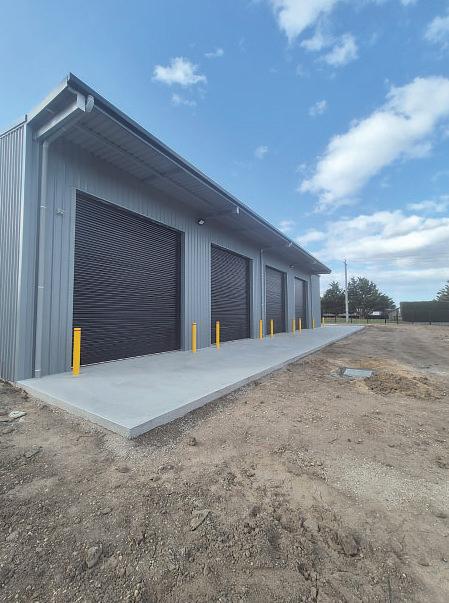
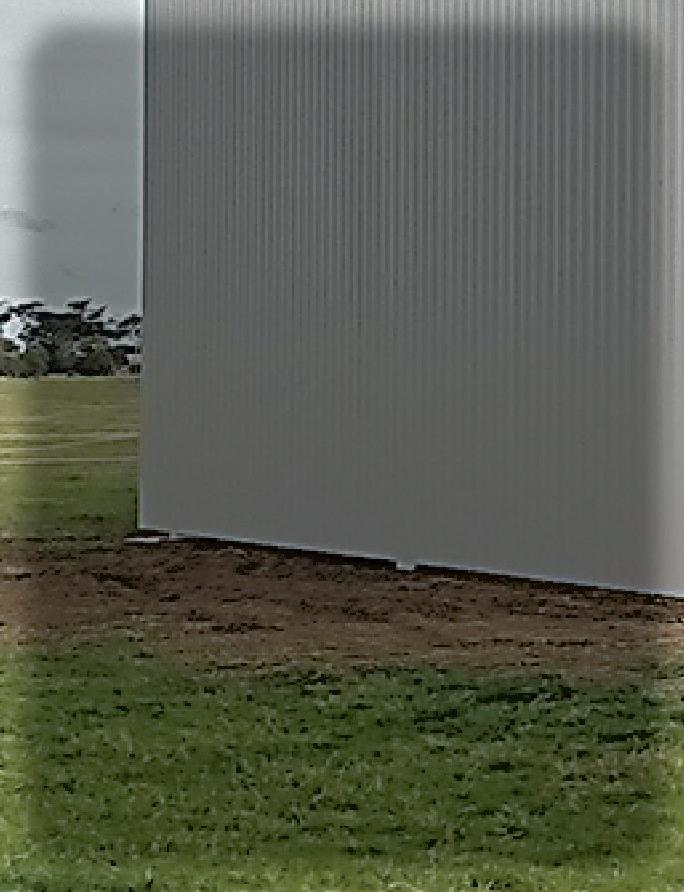





THE Nationals’ Member for EasternVictoria Region, Melina Bath used state parliament to call out the state government for frustrating delays to new CFAvolunteer recruitment training, in March this year
Ms Bath told parliament that the state government must expedite the ‘General Firefighter’ training course which is being delayed by many months in some areas.
“NewCFA recruitsbuild capacity in Victoria’s emergency services system and our regional communitiesdesperatelyneed them," she said.
“Delaying training by up to five months is unacceptable -itis hardenoughto attract new members, clearing volunteers
for operational roles must be faster than half ayear
“In easternVictoria, the landscape is incredibly dry and the bushfirerisk leading into easter remains high.
“TheAllan Government should not be delaying this critical training -itisessential new volunteers areupskilled to be on the firegroundnot cooling theirheels on the sidelines.
“The survival of our regional Victorian communities is intrinsically linked to our local CFAvolunteers who provide asurge capacity workforce."
Ms Bath said the state government has disrespected our CFAvolunteers.
NUMEROUS boresare sunk across Victoria every year Some can generate good quantities of water,but others produce small amounts of water or water that is high in salt or filled with other impurities.
AgricultureVictoriaLand Management Extension Officer,Clem Sturmfels said sinking aboreisexpensive,soit’s important landholders do their homework prior to engaging adrilling contractor
"Landholders shouldreview the depth, yield and quality of water in their area beforeapplying for agroundwater license from the relevant water authority," he said.
"Check out existing bores in your area to review the depth, yield and quality of water,oraccess the online interactive
map, Visualising Victoria'sGroundwater (VVG).
"This map allows the user to zoom in to their farmand turnonvarious coloured layers which indicate the likely depth, yield and quality of water in the area.
The map is based on drillers’ records of approximately 300,000 bores sunk over the last 130 years across Victoria.
Mr Sturmfels said while underground water exists across much of Victoria, it’s depth, quality and yield vary enormously.
"The highly complex natureofVictoria’s geology means the quantity, quality and yield of water can change within a very short distance," he said.
For furtherinformation, visit the DepartmentofEnergy, Environment and Climate Action (DEECA) website.
“Many local brigades arestruggling with not fit for purpose, substandardfacilities and outdated equipment including firefighting trucks that arewell past their used by date," she said.
“Labor must engage new trainers and offer morecourses to ensureour new recruits areactive in their local brigade ready to serve their community.”
THE fifth annual Erica Country Expo was held in March.
The expo welcomed around 80 people, who enjoyed local produce and met local businesses and groups. Children wereable to participateinpony rides, jumping castle and an animal pen.
Emergency services, such as the Erica CFA, brought alongtheir equipmentto sharewith those who came and to demonstrate how to use some of the tools.
Multiple rounds of the woodchop went ahead from noon onwards, with those handywith an axe chopping awayuntil 4pm.
The heatwasn't the onlythinggiving woodchoppersstrugglesasthe rounds went on and logs got thicker meaning methodshad to be adjusted. Starting


with the verticallog chops, all participants moved swiftly through the logs. Woodchoppers ranged from different ages, from the youngest (16-years-old) joining the moreexperienced ones on the block.
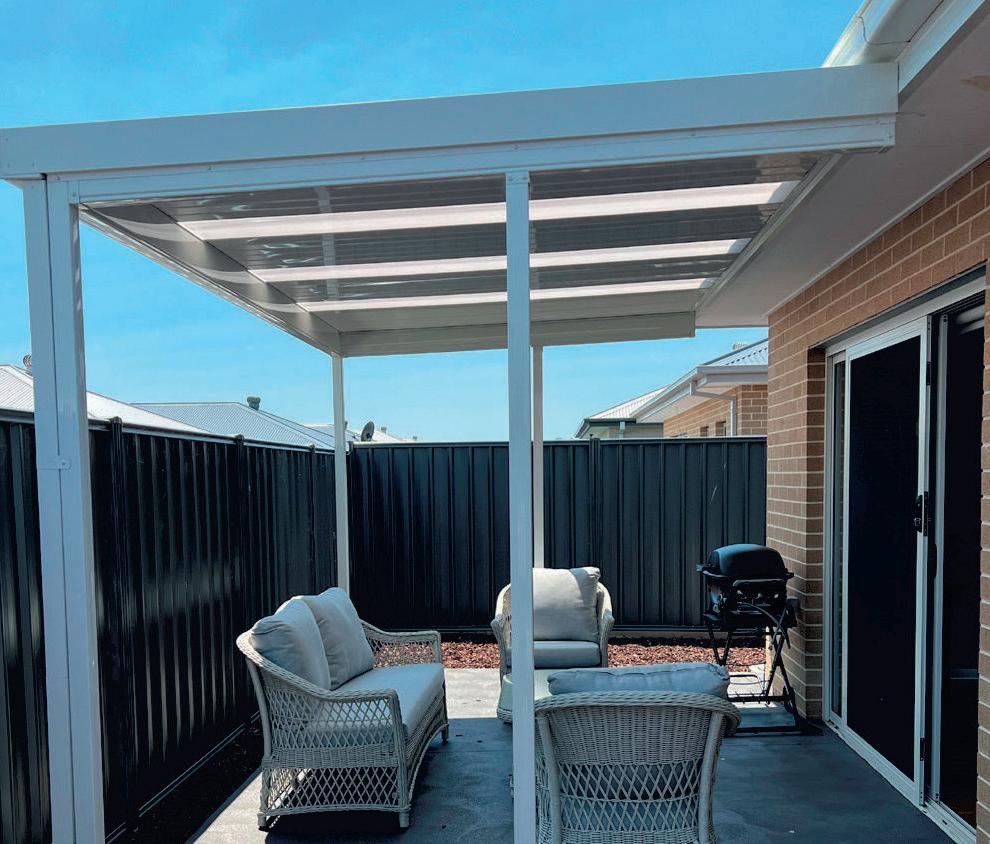


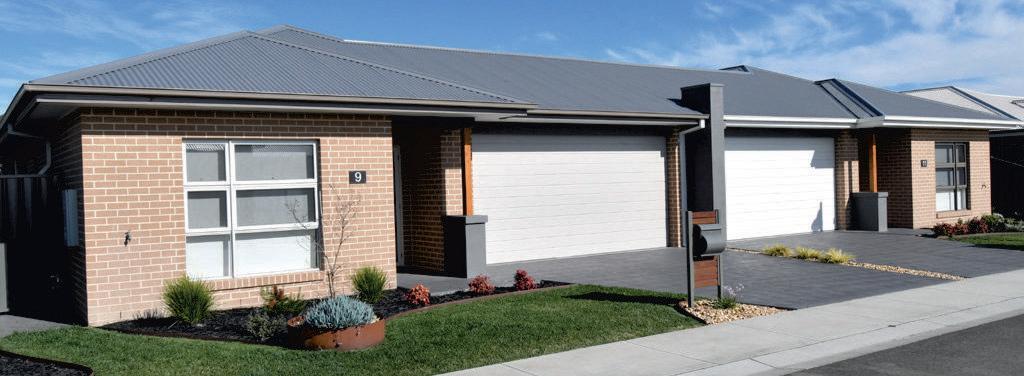


IT’S important toremember,ifyou arethe person in charge of an animal, it is your responsibility for its welfare.
Community valuesand expectationswill not accept anything less.
If youare in doubt about an animal’s suitability for transport, you can always ask your private veterinarian.
Furthermore,there is aMeatand Livestock Australia (MLA) guideline titled ‘Is the animal fit to load?’. This guideline can be viewed on MLA’s website.
In summary, an animal is not fit to load if it is:
Not able to walk normally or bear weight on all its legs. This may be due to arecent or old fracture, an injury, a deformity or an infection;
Not strong enough to make the journey;
Suffering from severedistress or injury;
In acondition that could cause it increased pain or distress during transport;
Blind in both eyes; and,
In late pregnancy.
If you identify an animal that is unfit to load you have afew options. Youcould treat the animal and transport it when it has recovered and is fit to load.
Naturally, this is not an option in cases that arenot readilytreatable. Alternatively, you could humanely destroy the animal. Aknackery serviceisavailableinmany areas to help with this option.
Finally, youcould consult aveterinarian and only transport under veterinary advice.
MLA’s Fit to load guidelines can be found on its website.
For further advice, get in touch with your local veterinarian or AgricultureVictoria veterinary or animal health officer

If you areincharge of an animal, then you areresponsible for
STOCK deaths occur periodically, and farmmanagers areresponsible for carcass disposal.
Methods of disposal include knackery, rendering services or suitably licensed landfills. If these arenot available, alternate biosecure options for use on-farm may include composting or burial.
If on-farm disposal is to be used,then forwardplanning with appropriate siting, infrastructureand management is critical to minimise any biosecurity,environmental or other risks.
Burying carcasses on the farmmay be the most appropriateoption depending on the circumstances.
Stringent guidelines apply to appropriate burial sites, so they don’t adversely affect the land, surface/ground waters or the air
Detailed information on setbackdistances and otherrequirements can be foundin the Victorian Environment Protection Authority(EPA) documentFarmwaste management.
The other on-farmoption is composting of carcasses. In line with EPAguidance, when the average number of mortalities doesn’t exceed one tonne per month, then acomposting pile is appropriate.
When mortalities exceed this threshold,
bin composting should be considered. Bin compostingrequires morededicated infrastructure.
Detailed information on pile and bin compostingcan befound inthe EPA’s Composting mortalities on farmguidance. It’s importanttorealise composting is an active process, not aset and forget method.
Failing to monitor and follow established composting techniqueswill result in an increased risk of harmtothe land or the environmentand asub-standardfinal product.
AgricultureVictoria can provide guidance to farmers about on-farmdisposal options in consultation with the EPA.
In the event of unusual signs or suspected cases of emergency animal disease, report them immediatelytothe EmergencyAnimal Disease Hotline on 1800 675 888. Early reporting increases thechance of effective control and eradication.
If an emergency animal disease outbreak is declared, AgricultureVictoria is responsible for the destruction and disposal of animal carcasses, including those that can be buried on-farm.
Further information on farmbiosecurity and animal diseaseisavailable on the Agriculture Victoria website at: agriculture vic.gov.au/biosecurity/animal-diseases
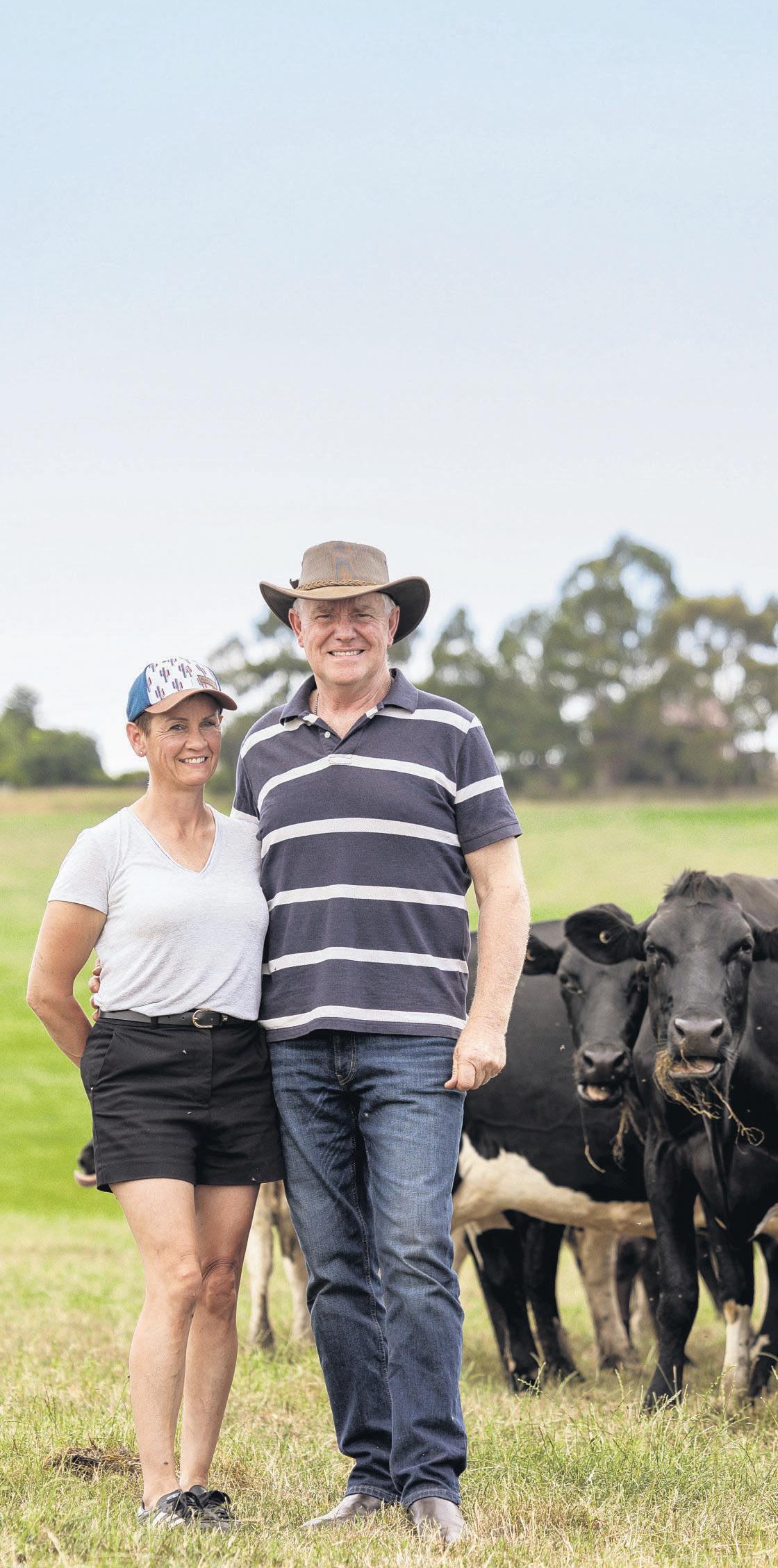
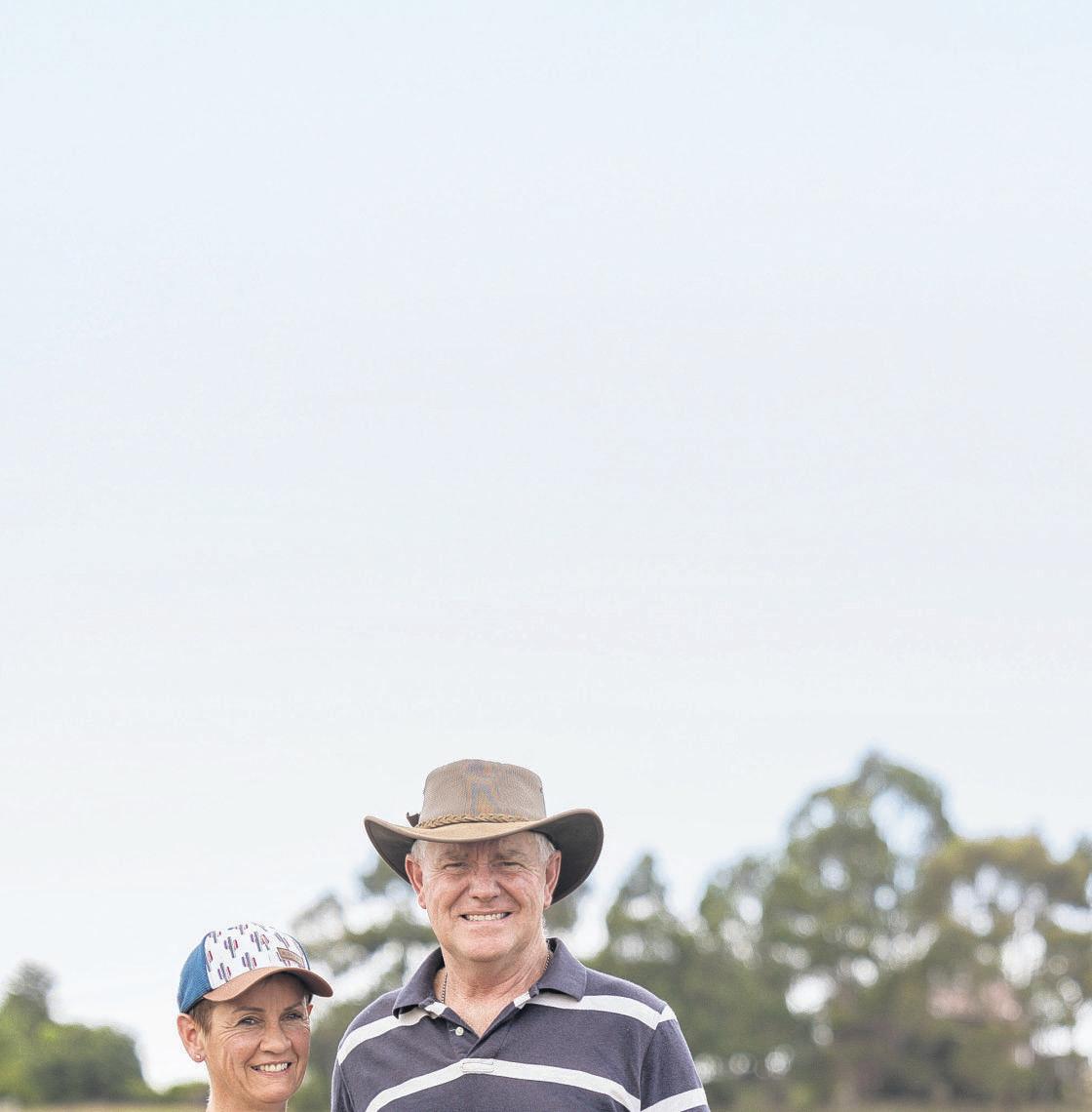
John CAMERON AND David PACKHAM
MELBOURNE risks acatastrophe because of Victoria’s poor firecontrol caused by human induced bad policy and practise, not human induced climate change. Blaming anthropogenic climate change is maskinghumanfailureon bushfire policy while exposingMelbourniansto unacceptable bushfirerisk.
Melbourne is at risk of adisaster much worse than Black Saturday, where450,000 hectares (ha) wereburnt, 173 people killed, and morethan 2000 homes destroyed at an economic cost of $4.4 billion (equivalent to $6.6 billion in 2024).
The KilmoreEastfirestartedatabout 11.45am on February7,2009. Melbourne’s northern suburbs were fortunately saved by a south-west wind change about 6pm. The fire burnt 100,000 ha in about eight hours, with 48,000 ha (about half) in just two hours after the wind changeturned the 55km north east flank fire into ahead fire. A similar fire starting at the wrong time, in the wrong place, with unfavourablewind speed and direction could create ascenario in Melbourne similar to Los Angeles in January 2025.
Houses well beyondthe firefront will ignite from ember attack, followed by house-tohouse ignitionindensely populatedareas. Firetravelling at up to 9km/hrinbush and 25km/hr in grass will cause chaotic congestion with evacuation. Cars arenot designed toprotect occupants from ‘burnover’ like firetrucks.
About 2million peopleand 800,000 homes in nine outer Melbourne local government areas (LGAs) areatrisk of destructionfrom ember attack, power outages and/or water restrictions for months (e.g. Canberra in 2003).
People in Wyndam, Melton, Hume, Whittlesea, Nillumbik, Yarra Ranges, Cardinia,Casey, and Mornington Peninsular LGAs, haveonly two choices-a bit of white smoke from mild fuel reduction in autumn/spring or risk their life from intense bushfires with black smoke in summer
Our National Parks arebeing degraded, and millions of native fauna arebeing killed by intense wildfires becauseofinsufficient use of low intensity firetoreduce the fine fuel load. Much of our forest carries afine fuel load(deadleaves, twigs and bark) of 20 to 40 tonnes per hectareand this ‘accelerant of the forest’ is the equivalent to 7000 to 14,000 litres per hectareofpetrol.
Wildfires develop in heavy fuels of 20-40 tonnes per hectare.Their fireintensity (the energy released) is up to 150,000 kilowatts per metreand they create their own chaotic weather storms, with unpredictable winds, pyrocumulonimbus clouds and lightning causing new ignitions. They areimpossible to suppress by any means, including with assistance from air tankers.

Fireintensity of about 4000 kWh/m is the upper limit for effective suppression, thus the need to reduce fuel load. Trydifferent dry fine fuel loads on your firepit.
The vast majority of buildings lost to bushfireare ignited by embers, not direct flame contact. Prescribed burning removes some of the bark shards and reduces fire intensity, both helping to reduces ember attack.
An analysisof12major Australian bushfires that impacted urban areas over 1967 to 2019-20,showedthat human deaths werecorrelated with fireintensity, but not Forest FireDanger Index (FFDI). Both fire intensity and FFDI take into account the impact of weather,but only fireintensity takes into account the forestfuelload. Forest fuel can be controlled, not so the weather
Tragic bushfiresinEasternAustralia are also associated with natural climatic and weather conditions that expose poor effort on bushfiremitigation (e.g. fuel reduction), alongwith poor firedetection and suppression, as evidenced in the 2019-20 Black summer fires.
Climate,weather and fire
BLACK Saturday in 2009was preceded by drought, with successive years of well below average rainfall. After the 2009 Black Saturday bushfire, a fire-behaviour scientist,DrMiguelCruzofthe CSIRO, offered the following comment on the fire day weather: The fireweather potential witnessed during Black Saturday and the associated level of fireintensity was not unprecedented in south-eastern Australia. The recurrence of large one-day fires, where most damageisdone within aperiod of less thaneighthours, isa relativelyfrequent event in thisregion.Undera synoptic situation typical of extreme fireweather potential in south-easternAustralia, the (2009) KilmoreEast fireexhibited rates of
firespread (9 km/hr)and intensity at thetop end of the firebehaviour spectrum (88,000 kilowatts/m).
It was impossible for many to escape given rates of spread of 30km/hr in grassland and spot fires starting up to 30km ahead of the head fireand chaotic wind associated with passage of the cold front.
Bushfires have been part of the Australian landscape for millions of years and our most damaging bushfires in south-eastern Australia have long been associated with the following:
-Drought leadingintoafireseason caused by naturalclimaticfactor, including anegative SouthernAnnular Mode (SAM), positive Indian Ocean Dipole (IOD), and El Niñodry phase of the El Niño/Southern Oscillation (ENSO), and;
-Hot windy fireweather on days of major fireruns, aregenerally associated with extreme ‘coldfronts'. They generate strong hot north westerly winds beforethe front, followed by arapid change in wind direction as the front passes. Cold fronts (induced by aphenomenon calledRoseby waves) cause flareups in fireintensity, increased rate of spread and difficulty of firesuppression. They have beenassociated with most largedamaging bushfires in south-eastern Australia including 2019-20.
Basically, fireneedsfuel, oxygen and a source of ignition. We cannot control the oxygen (wind), nor natural ignitions such as lightning, and have only limited control over other sources of ignition. We arepowerless to control climatic cycles(drought) and adverse fireday weather (hot winds), and climate change within arelevant timeframe. So, let’s focus on what we can fix -the fuel load.
Fire mitigation vs fire loss FORESTRYAustralia’sFireCommittee examined more than 50 public inquiries,

reviews and royal commissions since 1939, and have called for better fuel reduction. Theyconcluded: The increasingextent and occurrence of wildfiredisasters in the region indicatesthatcurrent firemanagement will not sustain the full range of ecosystem processes and biodiversity, nor reduce to an acceptable level the impact of wildfires on human lives and property. Thereis compelling evidence for the greater use of prescribed burning.
The south-west of WesternAustralia has aMediterranean climate with long dry summers, and the region has been under along and cyclical dry period with rainfall as low as last seen in the 1880s. However, through cost-effective and well-managed prescribed burning, theirwildfire lossis substantiallylower than in Victoria, where fuel reduction is inadequate.
Over about 60yearsinsouthwest WA, therehave been no megafires and only two bushfiredeaths.Overthe sameperiod, Victoria has had about six megafires and 312people have died (four megafiressince 2009). Over the past 25 years, Victoria has witnessed wildfirein72 percentofour 7.8 million hectaresofprimarily public nativeforest, including national parks, comparedtoonly 21per cent of the 2.5 million hectares in southwest WA
The excessively large bushfireloss is avoidable if we implement the Victorian BushfireRoyal Commission (VBRC) recommendation of fuel reduction on average at least five per cent of our publicnative forest eachyear.Over60years, Victoria’s fuel reduction has averaged below twoper cent, far less thanthe VBRC recommendation of at least five per cent (and experts calling for at least eight per cent) resulting in alarge proportion of wildfirearea.
Bad policy IN 2015 the Andrews Government ignored the 2009 Victorian BushfireRoyal

Commission (VBRC)recommendation to fuel reduce on average by at least five per cent ofthe forest eachyear,a target they werefailingtoachieve. Instead, the government introducedanew approach inappropriately called ‘Safer Together’. Under this new approach, fuel reduction has averaged only 1.6 per cent of the forest each year since 2015. Under the new policy, Victoria’s objective is to maintainthe state-wide average bushfirerisk at or below aresidual risk(nowcalled 'fuel-driven firerisk') of 70 per cent in the long-term. Residualrisk targets for some districts are as high as 85 per cent.
Leadingbushfirebehaviour and fireecology expert, Dr Neil Burrows, has suggested the risk targets should be 20 to 30 per cent -well below the government’s unsafe targets.
The fuel-driven firerisk target is expressed as the percentage of risk that remains after the area of both unplanned bushfire and planned fuel reduction are taken into account.
The intense unplanned bushfires (unlike the low intensity prescribed burns) are creating thick understory, exacerbating future fire hazard.Thetarget of 70 per cent ‘residual risk’ represents only a30 per cent reduction in bushfirerisk, relative to a‘time bomb’ forest with absolutely no fuel reduction.
As aresult, huge areas of Victorian forests carry fuel loads (dead leaves, twigs and bark) of 20 to 40 tonnes per hectare, equivalentto7000 to 14,000 litresper hectareofpetrol -no wonderthe forest fuels explode on ignition when tinder dry. Such forests, with no bushfiremitigation, see catastrophic wildfireseven under non-catastrophic climaticand weather conditions.
To ensureanadequate contractorforce to fight forest fires, the government undertook to provide firemitigation and suppression workstocontractorsafter theclosure of native timber harvesting last year.There has been aconsiderable reduction in this contract fire-mitigation work.
After introducingunsafefuel reduction targets, the government is nownot even meeting thosetargets. This includes in districts wherebushfires have had considerabledirectand indirect impact on Melbourne or other populated areas. Critical water and electricity infrastructure areatrisk. Over the last five years the government has failed to meet its fire-driven risktargets insomeofour mostdensely populated districts:
Yarra District has arisk of 86 per cent against atarget of 85 per cent. This peri-urban area was affected in the 1851 Black Thursday, 1926 Black Sunday, 1939 Black Friday, 1983 Ash Wednesday, and 2019 Bunyip bushfires, and;
Latrobe District has arisk of 86 per cent against atarget of 80 per cent. This district takes in Latrobe Valley and was badly impacted by the 1939 Black Saturday, and 1944 bushfires. Over the pasttwo years you would expect acatch-up effort’. Not so; the stategovernment completed only 67 per cent of its planned burns and amere26per cent of its priority planned burns.
Governmentadvertisements ask: “How well do you know fire?”
If the government ‘knewfirewell’itwould spend moreonbushfiremitigation.
Lastyear itsfireagency,ForestFire Management Victoria (FFMV), spent $656 million on bushfirecontrol, but only $36 million (5.5 per cent) on the direct cost of fuel reduction (the most vital component of mitigation).FFMVwere$225million over budget (52 per cent) because of extra spending on disaster recovery. Moreinvestment on mitigation, (particularly fuel reduction) and earlier detection and better initial attack, reduces the cost of suppression and disaster recovery. Do not rely on high-cost airtankers to suppress intense bushfires.
Black Summer POOR bushfiremitigation,firedetection and suppression wereevidenced in the 2019-20 Black summer bushfires. The following aresome facts associated with the Black Summer bushfireinEastGippsland:
Prescribed burning in the
region over four years beforethe 2019- bushfires averaged only 0.6 per cent (one ninth of the 5per cent recommended by the 2009 VBRC) and 80 per cent of the coupes weretoo small;
Therewas little fuel reduction across the landscape as recommended by expert Dr Neil Burrows and as aresult, hardly any fuel reduction close to the points of ignition in the 2019-20 fires;
The fires started from several lightning strikes on November 21, 2019 and the Forest FireDanger Index at 3pm remained below 30 for 18 dayslow enough to affect suppression;
Four of the lightning strikes that grew into significant bushfires, were not detected until five to 15 hours after daybreak the next day -anavoidable delay, given technological advances;
Initial attack was delayed. Two
Tambo ignitions werenot attacked until day two and day three after ignition. They became the TamboSnowy Complex fires that went on to burn989,000 ha, and;
Suppression was undertaken with insufficient force -fewer than 50 firefighters for the first 21 days.
Unfortunately, the 2019-20 firehit Mallacoota,where123 homes werelost. Abushfireexpert, the late Kevin Tolhurst, indicated that with appropriate prescribed burning Mallacoota would not have burned.
The importance of fuel reduction is best explained by Dr Neil Burrows, who lists these reasons for stepped- up fuel reduction: .bushfires draw their energy and ‘killingpower’ fromthe fuel.Investment in adequatefuelhazardmitigationinthe broader landscape and at the rural-urban interface is essential.
Prescribed burning at appropriate spatial
and temporal scales is not apanacea, but it is the cornerstone to mitigating the wildfire threat.
John Cameron has an MBA and has worked in forest research, corporate development, general management and forest consulting.Heserved as amemberofaCFA IndustryBrigade for many years and on the Board of two forest-related CRCs. David Packham OOM has aMaster of Applied Science andhas worked on fire behaviour for CSIRO,universitiesand Bureau of Meteorology. He co-developed aerial ignitionfor prescribed burning, was Director of the National Centre forRural Fire Research and is arecipient of the Philip J. DiNenno Prize for technical developments that impact public safety.
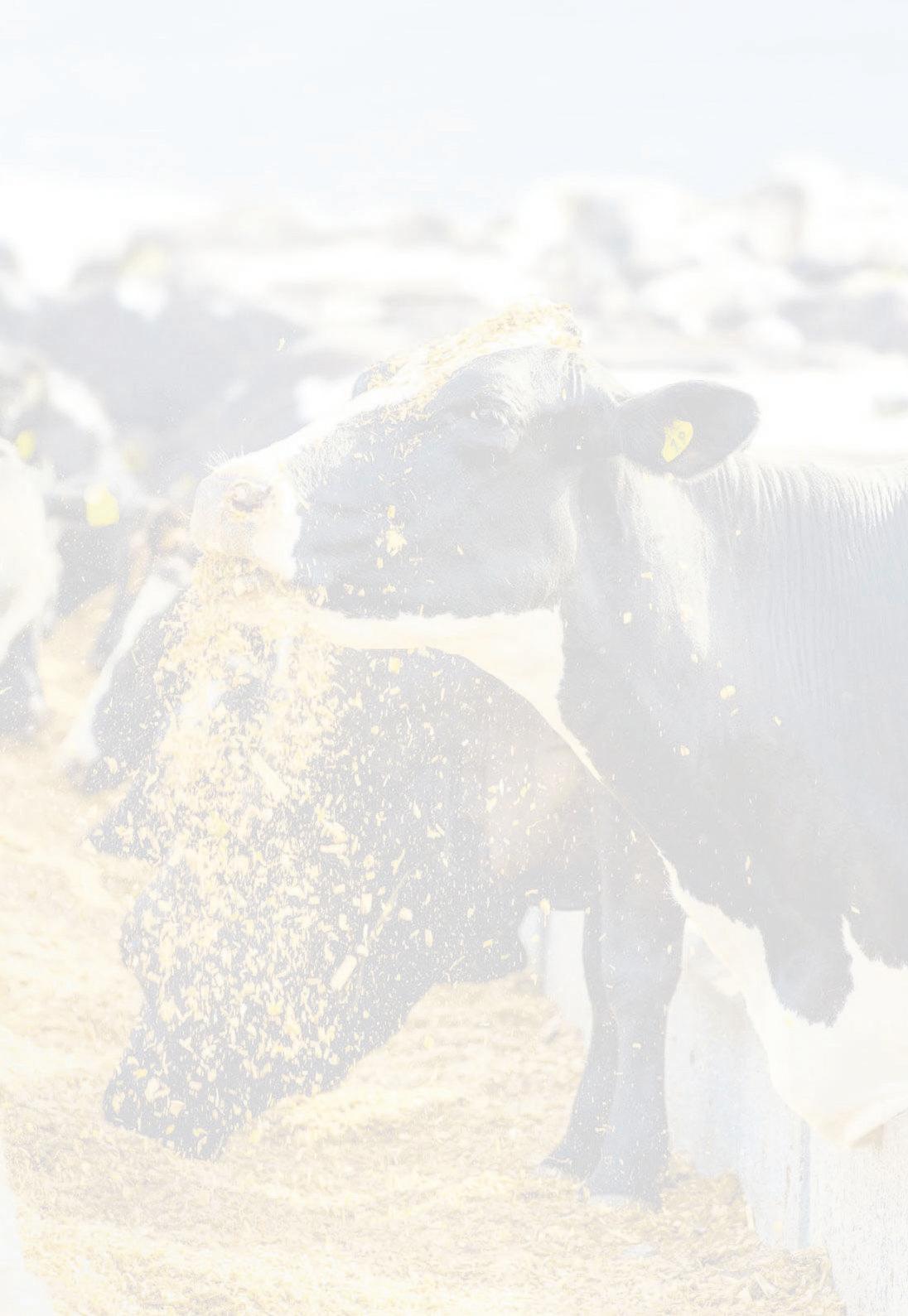


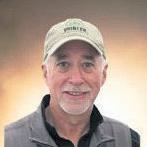
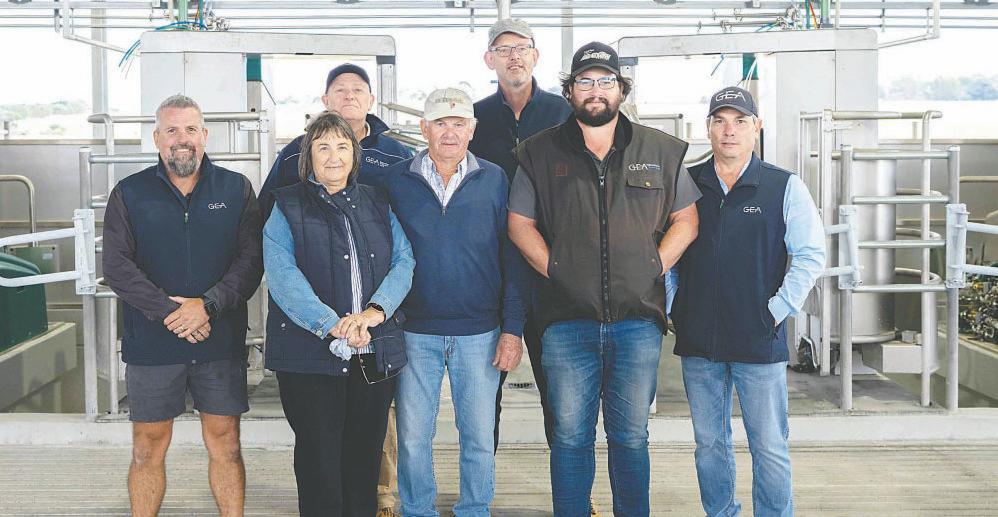
On April4th, 2025,the South Gippsland Robotic DairyOpenDay brought together over 150participants, including farmers, mediarepresentatives,and service providers, to explorethe future of dairyfarming.
Hostedbythe Vagg family in South Gippsland,Victoria, whohave been farmingfor three generations, theevent showcased the latestadvancements in robotic milking systemsand other innovativetechnologies.
The Vagg familygenerouslyopenedtheir farmtoattendees, providing awarmand insightful experience. Their dedicationtofarming and willingness to sharetheir journey withnew technologieswas evident throughout the day Participantshad the opportunitytosee firsthand theequipment andsystems that havetransformed theVagg family’s operations.
Supplied by GEA, installedand serviced by localdealershipGippslandDairy Professionals, the farm highlighted severalcutting-edge technologies: • 8brand-newGEA DairyRobot
R9500s: FeaturingIn-Liner Everything® technology,theserobots performevery stepofthe milking process withina single attachment, ensuring highmilk quality and hygiene.
• Auto Select MI Gate: This system allows forefficient cow management and selection.
• CowScoutHeatDetection andHealth Monitoring: Advanced monitoring systemsthathelp farmers keep track of cowhealthand reproductivestatus
• CattleEye AI Solution: Autonomous livestock monitoring using AI to enhance farm management.
• EffluentManagement System: An intensivesystemdesigned,usingHog Pump,Electromix Agitator,FlushPump on Pontoon, FlushValves, SlopeScreen and SW SeriesCableScraperstomanage farm waste efficientlyand sustainably
Gippsland DairyProfessionals, ateamof highly skilled and qualified experts in the dairy industry, arededicated to providing top-quality products and services to the dairy farms of Gippsland
Founded by Dale Brew,who has over 30 years of experience withinthe dairy industry, GippslandDairy Professionals

manage projectsand offer turnkey solutions, alleviating the stressofnew builds for clients.
TheVaggproject is aprime example of their professional standardsand the high level of clientsatisfaction they achieve.
GEA FarmTechnologies,withastrong presence in Gippsland, delivers valuable insightsand supporttolocal farmers.
With four dedicated dealerships and over60years of combined experience, GEA’s team providesexpert advice on optimisingfarmoperations.
Their diverse product rangeand customisable AMSplatforms cater to farmsofall sizes, ensuring each farmer canfind solutionsthatmeettheir needs.
GEA is proud to partnerwith service providers like Gippsland Dairy Professionals
These partners notonlyselland install GEA Farm Technologies equipment butalso service and support theirclient base, fostering long-termrelationships
Throughout theday,attendees engaged with experts and learned aboutthe benefits of roboticmilking systems
The sessions coveredtopicssuchas energy efficiency,ergonomicpit design, and theadvantages of advanced
Germanengineering
Farmers shared their experiences and success stories, providingpractical insights into theintegration of technology in dairyfarming.
TheSouth Gippsland Robotic Dairy OpenDay was aresoundingsuccess, offeringaglimpse intothe futureofdairy farming.
The Vagg family’shospitality and the innovativetechnologiesondisplay left a lasting impressiononall participants.
As the dairyindustrycontinues to evolve, events like this play acrucial role in fostering knowledge sharing and collaboration amongfarmers,service providers, and industry experts
Getintouch with local GEA dealerships:
GippslandDairy Professional Korumburra Tel: 5658 1119
GippslandDairy Professional Foster Tel: 0417 346538
WestfaliaWarragul
Tel: 5634 2065
FutureDairies Gippsland Tel: 5147 2571

FOUNDRY, anon-profit artist collective based in Bairnsdale, won firstplace in the Balcony Garden category at theprestigious Melbourne International Flower and Garden Show.
The captivating balcony garden, designed by CLeed (Callie Whelan Leed), seamlessly blendssustainability,innovative design, and local artistry, showcasingagrowing trend in landscaping that emphasises ecoconscious practices, resourcefulness, and creativity.
The garden’sdesign features sustainable elements crafted from reclaimed materials including apergola made from Australian cypress timber milled by alocalfarmer, industrial steel screens made from offcuts at alocal engineering firm, and atimber wallconstructed fromdecking timber offcuts by Dean Wade of SquaredAway Carpentry. The decking itself is made from recycled plastic milk containers and pine waste,produced byModWood in Melbourne.
“The garden is acelebration of how nature and art can coexist,” CLeed said.
“Wewanted to elevate the space using works that reflect creativity andasustainable lifestyle, while highlighting the beauty of locally sourced materials.”
The judges wereparticularly impressed by the inventive use of repurposed materials, such as the rusty metal planters and the rippled bark drums sourced from Bairnsdale Scrap Metal, as well as the old copper transformed into aunique lampshade.
The garden also introduces plant hybrids like the vibrantMangave, across between Agave and Manfreda, known for their bold colours and striking forms. Many of the plants weresourced from local collectors, as they aredifficult to find in larger sizes.
Designed around axeriscape planting, which requires minimal water,the garden aligns perfectly with its sustainable ethos.
What sets this garden apart is its role as an immersive outdoor gallery, celebrating the work of local artists from the Foundry Collective.
The artists’ works complement the garden’s theme of sustainability and creativity, using reclaimed materials in unique and innovativeways. CLeed’s own enamels, which reflect the forms, patterns, and textures of the plants in the garden, weremade from offcuts of whiteboardmanufacturing.
FellowFoundrymember,KateShone’s repousse copper works explore undersea
forms and werecreated using copper salvaged from alocal boat builder
Artists activated the space sittingat SamThomas’ timbertable andchairs made from hardwooddecking offcuts and audiences werereally intrigued by a Ren Crunden-Smith’s prototype Babylon garden -a hanging planter with rhipsalis plants trailing down.
The garden also features stunning artwork that supports urban habitats for birds and insects.
Jill Hermans’ shibuichi houses, crafted from recycled copperand silver,provide shelter for Pison Spinolae ‘mud wasps.’
Cindy Tong’sbirdbath, made from reclaimed marbled clays, offers aspace for birds and insects to bathe and hydrate.
Elisabeth Scott’slarge panel wall features acollageofcopperplate etchings and monoprints on Japanese rice paper, reflecting the colours and local wildlife of the garden.
The garden also includes smaller,intricate works, suchasAndrea Hall’s kelp-inspired sgraffito pots, Pauline Crunden’s mini oil landscapes depicting localscenes,and Deanne Howlett’s ‘Beachcombings’- luminescent, tactile coral-like pieces from her MarineDebriscollection. Wendy Reeve’s collection of seedpodsinvites visitors to appreciate the smaller details in nature, adding further layers of depth to the garden.
Supported by the generous contributions of local businesses, individuals, and communityefforts, including the GoFundMe campaign and the Rotary Sunday Market FoundryStall on Australia Day, the garden became areality with the help of sponsors Modwood and Modaprax. Modaprax’s elegant pergola brackets beautifully framed the garden’s artwork and timber features.
The Artist’s Garden continues to captivate thecrowd, serving not only as a stunning landscape but as atestament to theimportance ofsustainabilityand community in art and design. All artwork featured in the garden is available for sale and can be viewed on the Foundry website at: ifoundthefoundry.com/shop
This garden and its fusionof art, nature, andsustainable design won the admiration of morethan100,000attendees at the Melbourne International Flower and Garden Show, highlighting the value of local artistry and eco-conscious landscaping.









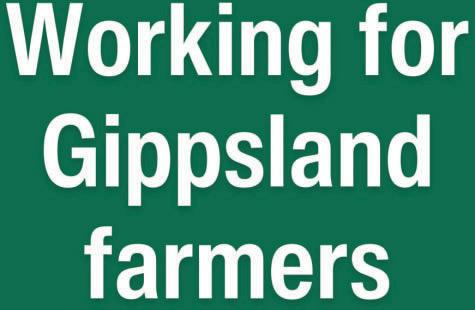
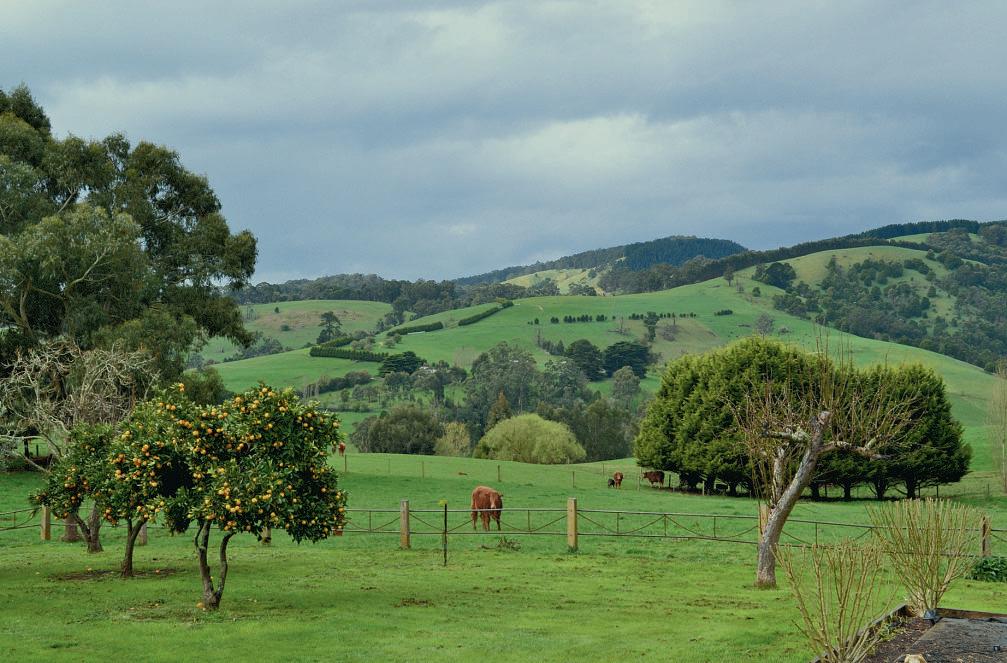
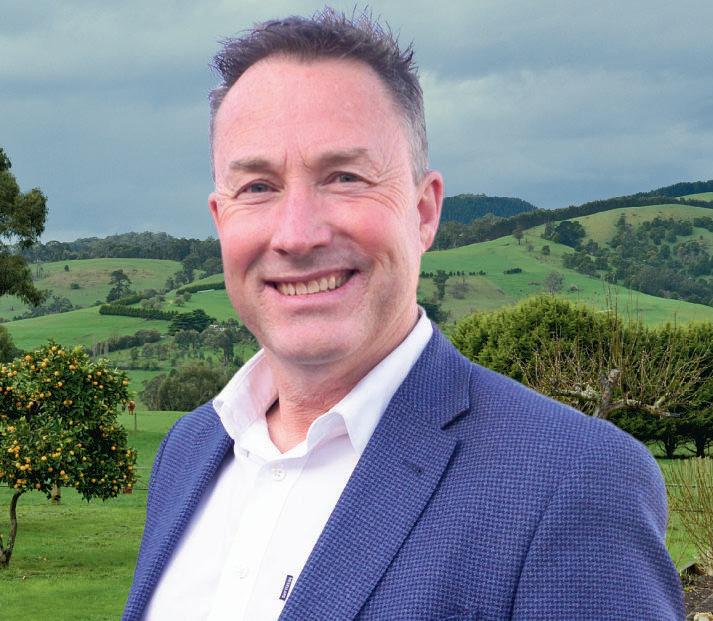
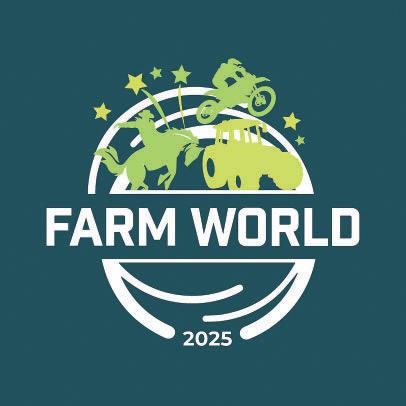

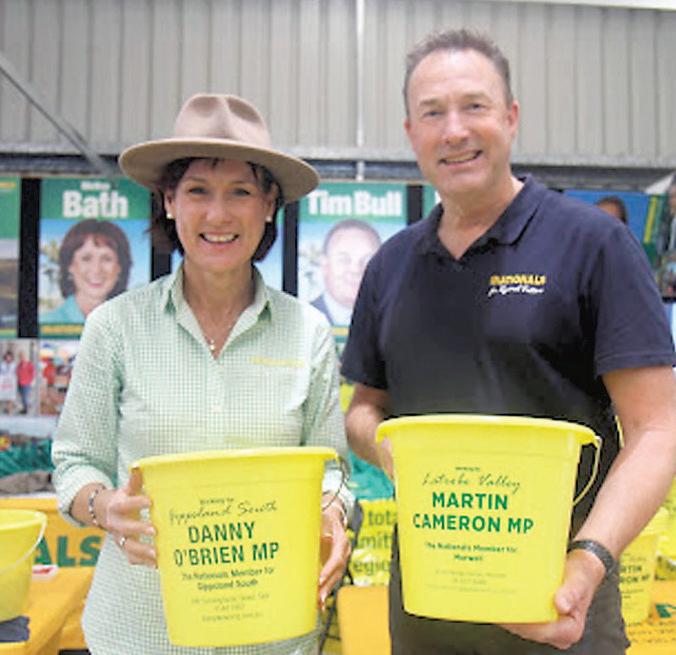





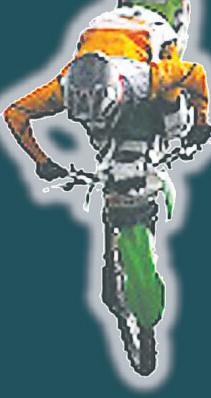



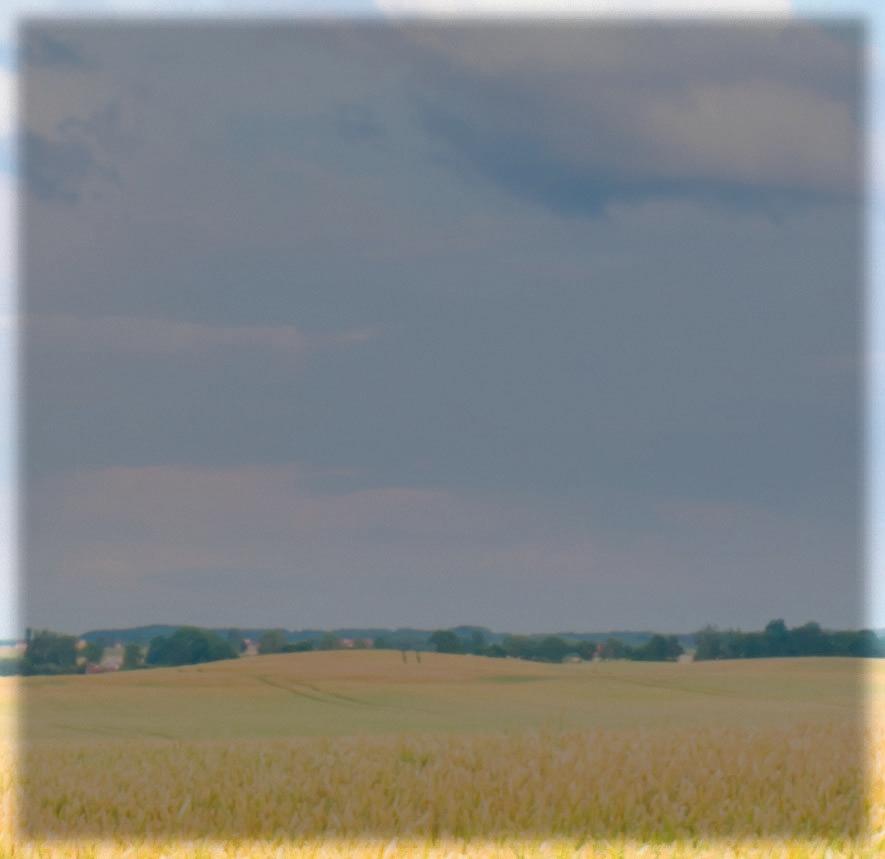



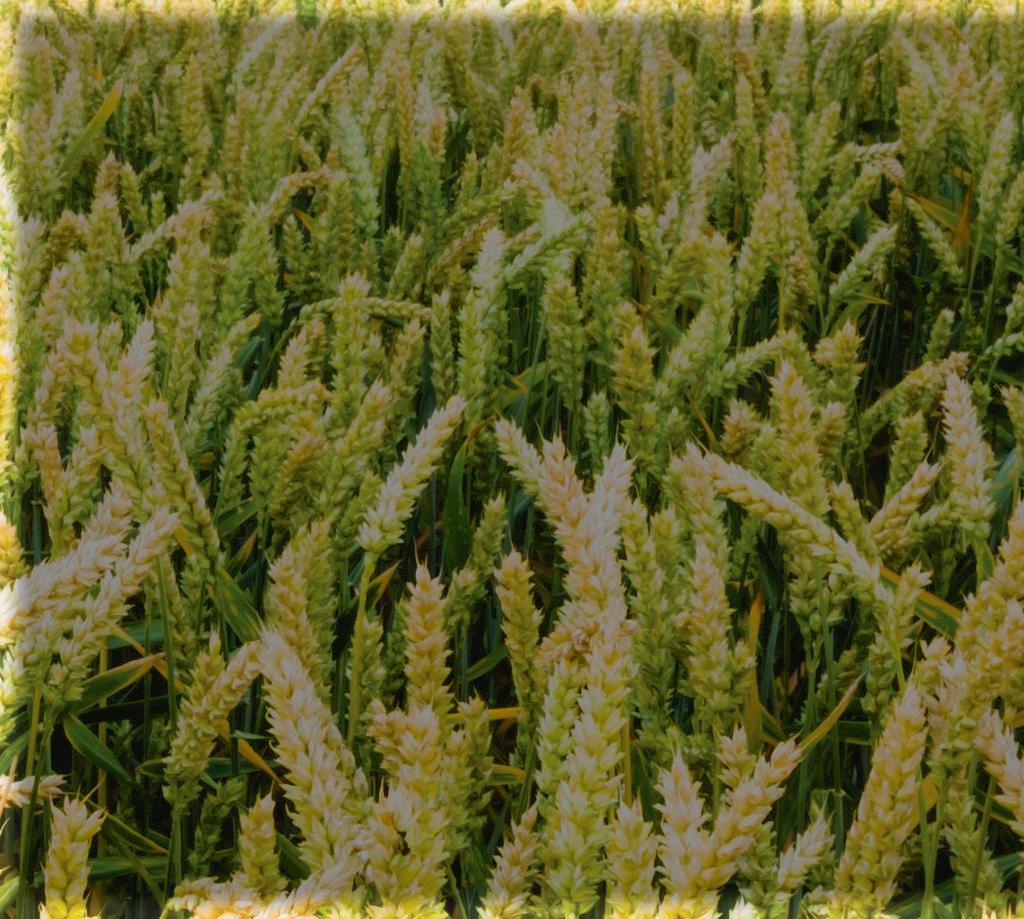
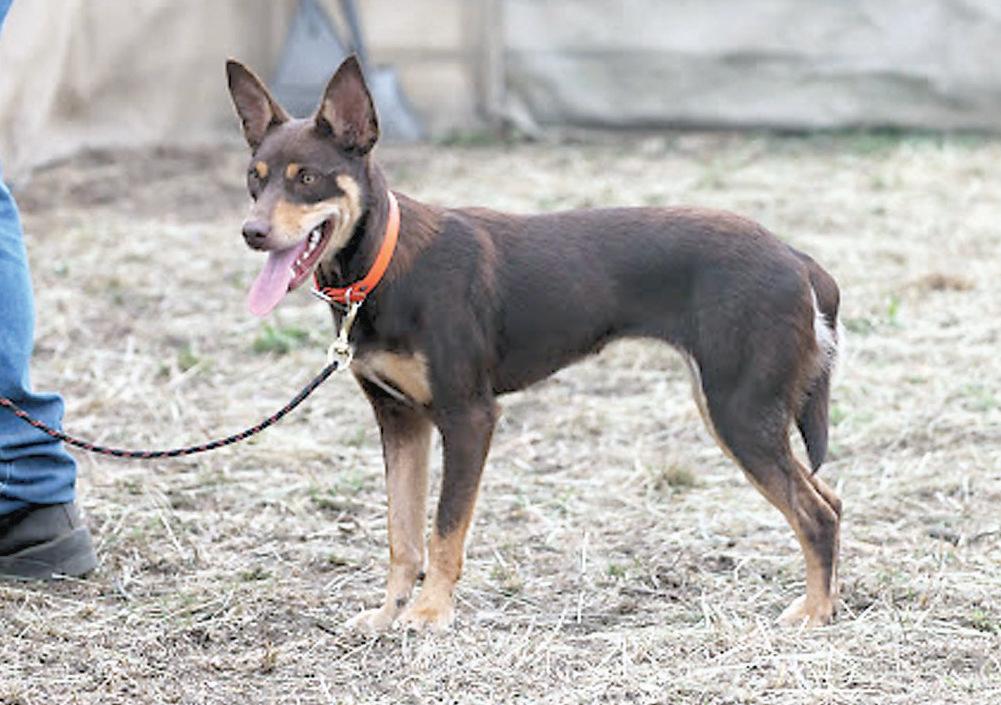


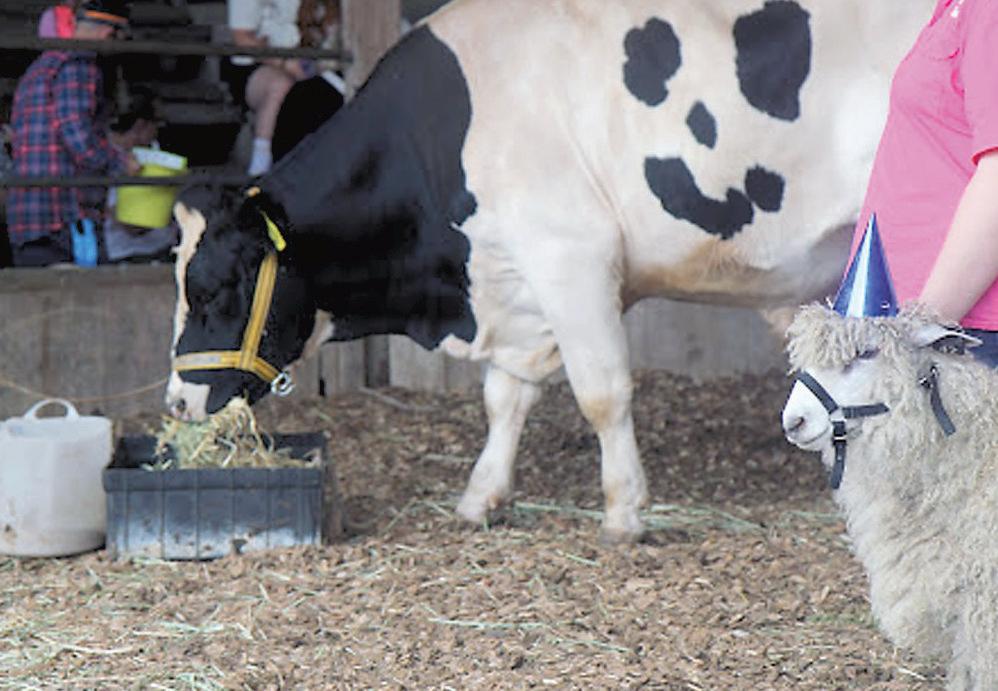

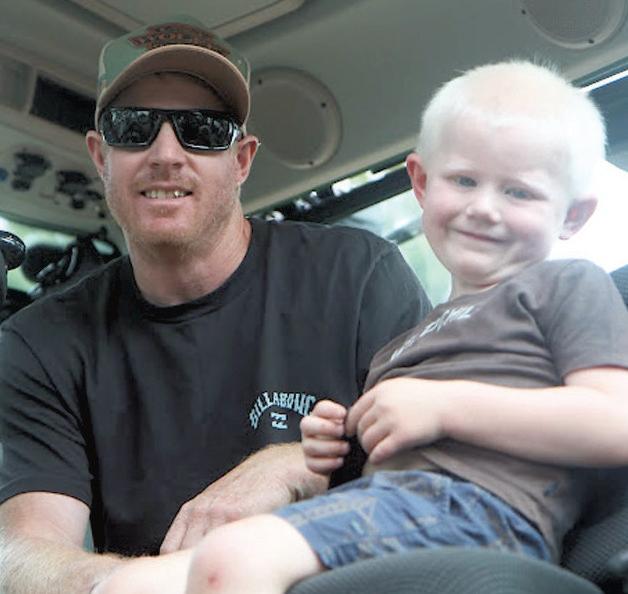




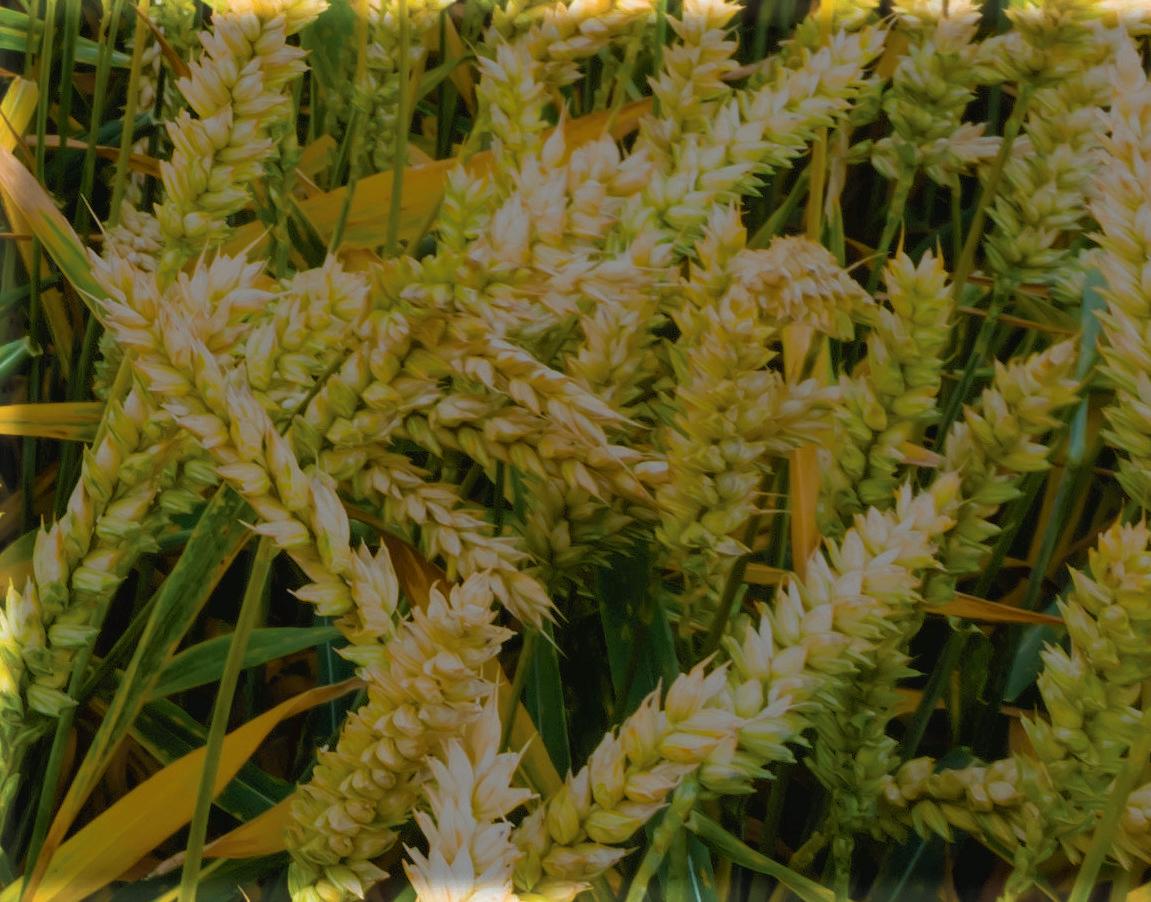
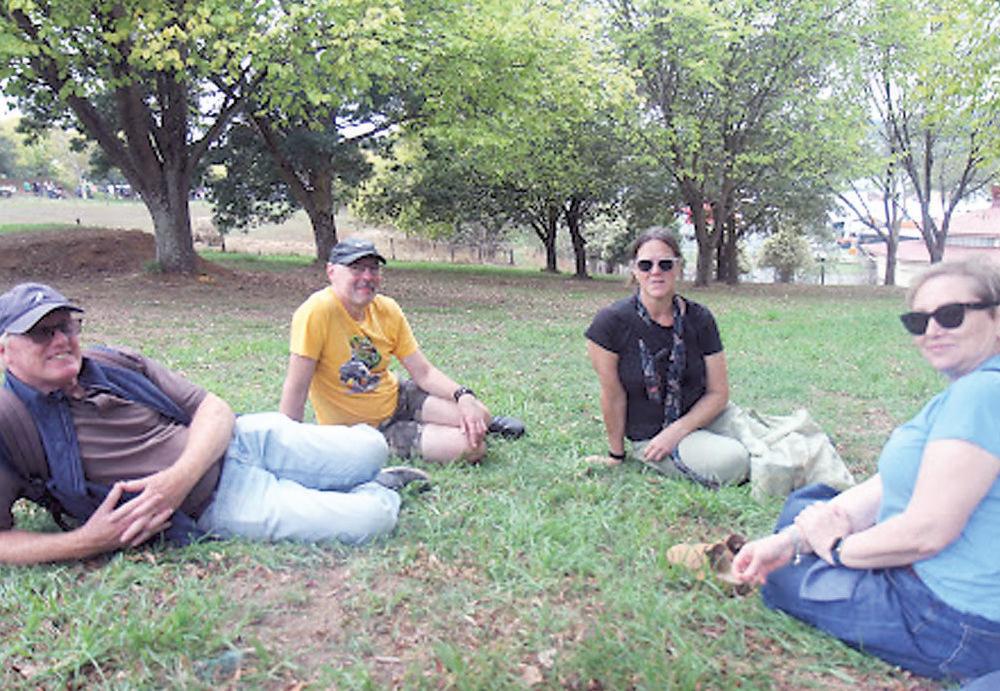

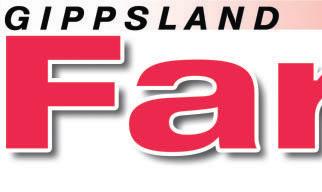



ACROSS
Practices(6)
Breakfastfavourite (5)
Divideintoparts (9)
Jolly(6)
Squirm (7) 14 Ways of speaking (8)
CapitalofCzech Republic (6)
Bring intobeing (6)
Haughty(8)
Sloping type (7)
Unfold (6)
Bewitch (9)
Whinny(5)
Lengthylist(6)
LANnetwork (8)








The Gippsland Farmer newspaper has played apivotal role in the success of TTMI across Gippsland. As atrusted dealer of tractors and farm machinery, we have come to rely on the newspaper’s extensive reach, professional services, and exceptional customer careto effectively promote our products and connect with the Gippsland farming community.
The Gippsland Farmer hasbeeninstrumental in helping us showcase ourofferingsinto our key market demographic. With their comprehensive coverage of all things agricultural, the newspaperhas provided us with apowerful platform to reach farmers, growers, and industry professionals throughout the region. Their commitment to delivering high-qualitycontent and relevantnews has created areceptive and informed readership, giving our advertising efforts even more impact
Paula, our advertising consultant and remarkable member of The Gippsland Farmer team, has been an invaluable asset in our advertising journey.Paula’s exceptional professionalism, attention to detail, and regular reminders about advertising deadlineshave ensured all our promotional campaigns run seamlessly.Her dedication to providing a personalised experience and exceptional customer service has made everyinteraction with The Gippsland Farmer an absolute pleasure
Today’sAim:
words: Very good 31 words: Excellent



Moreover,I am grateful for Paula’s consideration of TTMI for special advertising features and promotions. Shehas gone aboveand beyond to provide us with opportunities to highlight our business and offerings in unique and creative ways. Her keen understanding of ourindustry and unwaveringsupport have truly made a difference in the visibilityand success of our advertising efforts.
Iwould highly recommend The Gippsland Farmer newspaper to any business in the agricultural sector seeking effective advertising solutions. The newspaper’s wide readership, informative content,and exceptional customer caremakeitanideal platform to connect with the farming communitythroughout Gippsland.
We look forwardtoacontinued partnership p p with The Gippsland Farmer,confident in the knowledge that our advertising needsare in the best of hands.



































DOWN 1 Frenchabb (4) 2 Alaska’s largestcity(9) 3 Boredom or lethargy(5) 4 Rude (8) 6 Moreirridescent(7) 7 Current(5) 8 Mostheartfelt(9) 9 Sketch (4)
Dishonest (9)



Subtle changebydegrees (9)
Debate(8)
Coaching (7)
Ausefulquality(5)
Wound-mark (4)
Flinch(5)
Informal conversation(4)
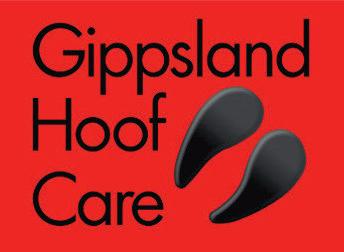




James NASON
MORE than 170 companiesare now in the racetoproduce commercially viable, publicly-palatablecultured meat products, attractingmorethan $4.7 billion in investments since 2019.
The culturedmeat (CM) industry owes muchofits growth to claims itis environmentallybeneficial, alleviates animal welfareconcerns, and is equally as nutritious and acceptable as conventional meat.
However,a newly published study has examined existing research on CM and has found that many of the industry’s claimed sustainability and nutritional benefits “are overly ambitious and not supported by evidence”.
The scientific review, titled 'Reassessing the sustainability promise of cultured meat: acritical review with new data perspectives', was published in Critical Reviews in Food Science and Nutrition on February 21
“Highly energy intensive; gaps in knowledge”
FINDINGSincludethatenvironmental assessments have revealedthatCMis highly energy intensiveand its environmentalfootprint can onlybeimproved if renewable energy sources areused.
It adds thereare many unknowns and gapsinthe knowledgeonthe nutritional quality of cultured meats that require further investigation.
Further,itnotedthatthescalabilityandtechnical challenges facing CM are“significant”.
The case for CM
THE study points outthat development of “novel food products” such as cultured meatshave garneredsubstantial attention and investment in recent years as an avenuetomitigatefood-related environmental impacts.
CM, also referred to as ‘lab-grown meat’ or ‘cell-based meat’, is produced by taking asmall sample of animal cells and growing them in media that supplies essential nutrients for cell proliferation.
Cultivated cells arekept in isolation in a controlled environment, such as abioreactor,togrowinto acell mass that is then harvested and processed into meat products.
First CM on track to be approved for Australia
SINCE the production of the first cell-based burger at acostofUS$325,000 in 2013, therehas been significant commercial investment in the technology.
The world’s first commercial sale of cell-cultured meat occurred in December 2020 at Singaporean restaurant '1880', wherecultured chicken manufactured by aSingaporean CMOfor UnitedStatesfirm EatJust was sold.
Australianswillsoonalsobe able to eat laboratory-grown meat, with Food Standards Australia and New Zealand expected to approve the first cell-cultured meat produced in Australia -alab grown culturefromquail cells manufactured by Sydney-based VowGroup -byJuly Hurdles to becomeaviable optionfor consumption at scale.
However, the research review notes there area range of nutritional, environmental, technical, economic, and consumer challenges that CM must overcome if to become aviable option for consumption at scale.
Celllinesforawidevarietyofanimalspecies have been created and grown in specialised media at laboratory scale, but moving to production scale has been challenging, it said.
Major technical challenges
THE paper explains that the original concept of growing muscle cells in single cell suspensionsand then inducingthem to differentiate to formmuscle fibres has shifted to the productionofacellpaste, which is blended with plant-based material to formhybrid products like burgers, sausages and dumplings.
The majortechnical challengewithCM is to scale up manufacturing from bench


scale to thousands of litres, at acost that will allow the products to compete with conventional meat products.
CM production at scale will requirelong continuous sterile cultureperiods, as any contaminating bacteria or fungi would quickly overgrow the mammalian or avian cells, which have adoubling time of around 24 hours.
In variousparts of the cell production cycle, bovine serum is used to promote cell viability and growth. However, many CM companiesaim toremove bovine serum as it is clearly desirable from amarketing perspective to claim that no animals were slaughtered as part of the manufacturing process.
Bovine serum is expensive, but serum free alternatives available on the market have shown suboptimal performance and may not be compatible with all cell lines.
‘Far from competitive with conventional meat for foreseeable future’
THE studysaidthe costofthe culture media, whichiscurrently viewed as one ofthe major costs for production of CM, will need to be less than US$1/L to manage costs.
“It is unclear when aviable, cost-effective alternative to bovine serum will be available; nor is the extent towhich pharmaceutical (and moreexpensive) practices will needtobeadopted to maintainproduct quality. Thesechallenges come with significantassociated costs, which leave the production of CM far from competitive with conventional meat production for the foreseeable future.”
The downturn in the marketfor alternative meat products has also raised questions about the size of the market for CM.
Additionally, recent life cycle assessment (LCA) studies havedemonstratedthat CM willbe an energy intensive industry
Regulatory challenges and labelling
THE lengthy and costly regulatory processesare aconcern for thenew food sector, and labelling of CM has been controversial, withItaly, France, and the US states of Florida, Arizona, and Alabama moving to ban the products due to concerns around the use of the term“meat”.
With the majority of CM products being hybrid products, meaning that cultured cells areblendedwith plant-based material in the final product,therewill also be aquestion around what percentage of culturedcellswilldetermine useofthe term“meat” on the label.
Whilethese challenges aremore
surmountable than the technical and scalability challenges, they areexpected to cause delays or even prevent the commercial availabilityofCMinmany parts of the world.
Environmental impact of CM production
SEVEN peer-reviewed Life Cycle Assessment studies have been completedonCMtodate.
THE review notes that most studies did not consider the environmental impact associated withbuilding facilities orthe downstream processessuch as packaging, thus the results of these studies should be seen as indicative of ‘process-only impacts’.
Based on these studies, the most notable environmental impacts of CM arethe energy requirements and the greenhouse gas emissions (largely aresult of energy demand), with water use also of concern in some studies.
It said a“clearupwards trend” was notable in the footprint estimates over time.
Estimated greenhouse gas emissions and energy use per kilogram of culturemeats rose notably in “morerecent publications”, for which increased understanding of and availability of data on CM production was available.
Studies also note that the footprints of conventionally produced meat can vary substantially between productionsystems, and caremust be taken when comparing estimates, both between CM and conventionally produced meat, and between CM estimates themselves, as these estimates can vary “based on the underlying data used and the assumptions made”.
For theenvironmental impacts beyond energy use, greenhousegas emissions, and water use, generally, publications found that CM has alower footprint than conventionally produced meat.
It also emphasises that since thereisno large-scaleCM facilities, all the environmental assessments available to date are based on projections and assumptions.
Nutritional challenges facing the CM industry
AKEY tenet in the CM industry is the potentialfor their products to deliver anutrientprofile comparable to that of conventional meat.
The study notes that thereare no publicly available nutritional profilefor cultured meats,but what was evident from its review was that the nutritional composition of cultured meats will not inherently be identical to the conventionalproducts without fortification.
For example, vitamin B12, which is known to be predominantly found in meat and dairy, will not be present in thecultured products, unlessaddedtothe culture


medium or to the final CM product.
This also raised questions about the degree to which the absorbed B12 in fortified CM products would be bioavailable to consumers. Another important aspect in assessing nutritional value of CM is protein quality.
AlthoughCMisassumed to mimic animal-derived protein, the protein quality of the products hasnot yet been thoroughly studied, thereviewsaid.
Consumer acceptability
IF the technical hurdles of scaling up CM production aresurmounted, the market success of CM will still rely on consumer willingness to integrate these products into their diets.
It found that there is aneed for future studies involvingactual CMproducts to explorefactorsinfluencing consumer preferences and how thesepreferences change over time, as well as how these preferences convert topurchasingdecisions.
‘Critical time’ for CM sector
THE studysaidthe nextfew years will be ‘a critical time’ for the CM sector with morelicensed products entering the market,while the funding available to these companies has recently contracted.
Understanding of the CM industry’s environmental impact would remain limited until the industry has scaled up.
CM to focus on competing with higher value meats
THE study authors said the economic sustainability of the CM industry has not yet been proven,regardlessofwhether reaching price parity was the aim of CM producers.
“The cost of production of chicken meat is alsothe cheapest of all the traditional meats and thereforewill be the hardest to compete with on price, again suggesting a move to higher value meats will be in the best interests of CM companies."
The need for afood system that is more sustainable across environmental, economic, and human dimensions is clear
“It is still too early to determine the role that CM should play in this system, but the current challenges imply that several great changes -technological, regulatory, environmentally, nutritionally, and in the mindofconsumers -will be necessary beforeCMcan achieve global integration.”
-Beef Central
AGRICULTURE Victoriaisencouraging livestock producers to consider effective stock containment strategies to help maintain coreherdorflock numbersand support pasturerecovery.
AgricultureVictoria’s Land Management Extension Officer,Kerri Goschnick said dry seasonalconditions and limited rainfall continue to place pressureongrazing operations,impactingpasturegrowth and causing baregroundacross many paddocks.
“Stock containment refers to confining
livestock in designated areas, wherefarmers can effectively manage feed, water and shelter,” she said.
“This allows farmpaddockstorest until an autumn break causes pastures to recover and withstand livestock grazing.
“Stock containment doesn’t necessarily requireacomplicated system; it can be as simple as asacrifice paddock with good quality water and access for feeding.
‘“Farmersshouldbeawarethat thereisa higher risk of weed infestation when importing feed to supplementary feed livestock.
“Establishing astockcontainment area to use supplementary feed will contain the weed seeds to amanageable area.
“Weeds to look out for include parthenium weed, particularly in fodder sourced from parts of QLD and NSW
“It is important that animals in containmenthavetheir nutritional,water and shelter needs met.”
Agriculture Victoria can assist in planning feed budgets and stock containment area design and management.
Further information can be found by
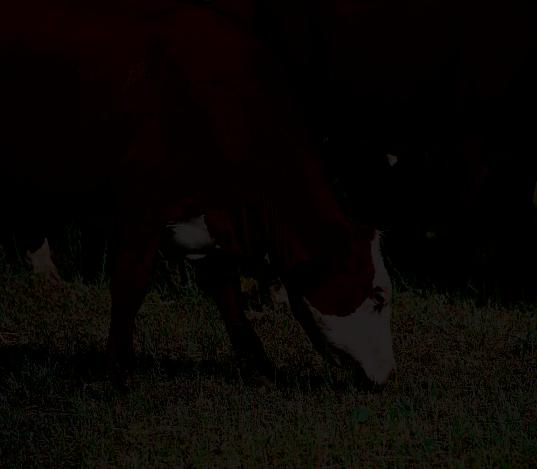
searching for these items on the Agriculture Victoria website. For moreinformation about drought and dry seasonal conditions support, head to: agriculture.vic.gov.au/dryseasons

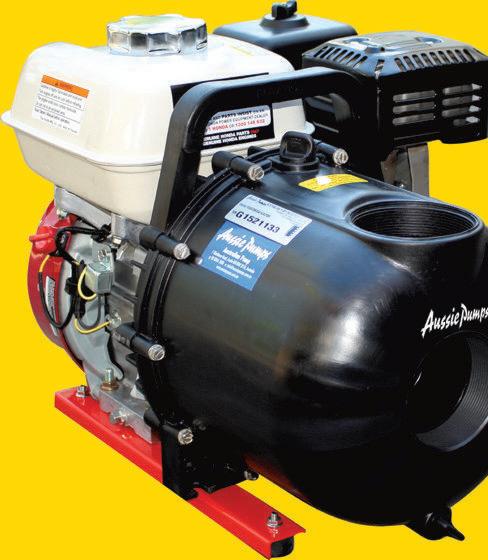



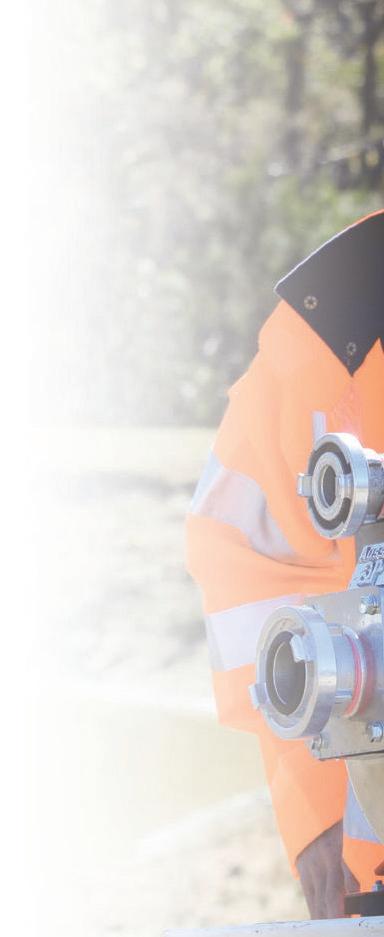





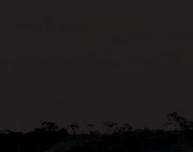



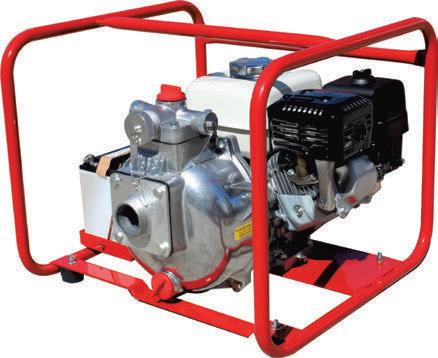


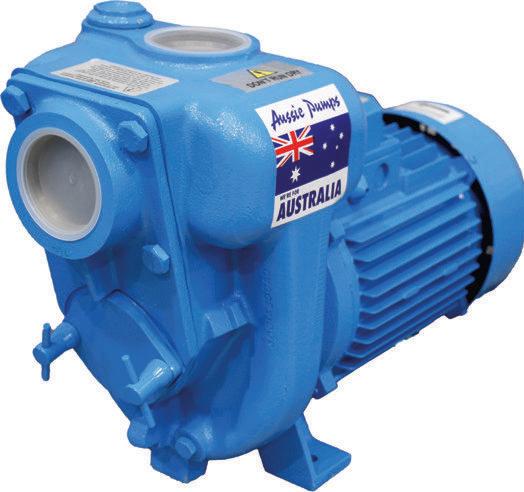





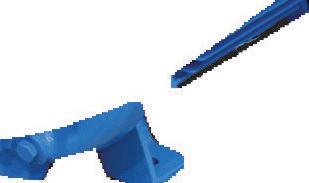

EIGHT students from Victorian dairy regions, commencing their first year of tertiary study in 2025, have been honoured with scholarshipsfromthe Gardiner Foundation.
After receiving arecordnumberofapplicants, the Gardiner Foundation has awarded an extra scholarship this year
The 2025 Gardiner Foundation Tertiary Scholars are: Chris Dwyer, of Newry (who won the Bill Pyle scholarship); Scarlett Southern, Leitchville (Shirley Harlock scholarship); Sage Anderson, Fish Creek (Doug Weir scholarship), and Anna Dickson, Garvoc (Jakob Malmo scholarship).
The 2025 Niel Black scholars areShaye Brown (Kongwak), Ryan Smith (Tongala), Georgia Anderson (Denison) and Ella Harwood (Colac).
Each scholar will receive $10,000 annually for three years to support costs associated with their studies. These scholarships aregranted to students accepted into courses that will benefit the Victorian dairy industry or dairy communities.
GardinerFoundation Chief Executive,Allan Cameron said the program encourages students to returntoVictoria’s dairy regions upon graduation or after gaining work experience. This ensures a diverse range of essential skills within these regions.
“For25years, Gardiner Foundation has been committed to building astrong futurefor Victoriandairy. Our tertiary scholarships empower young people with the skills and knowledge to
driveinnovation,sustainability, and prosperity in their communities,” he said.
“Gardineris proud to provide students with the opportunity to gain their tertiary qualifications withoutsomeofthe financial constraints that can often exist for students from the country.”
Thereisno preferredfield of study, with past students enrolling in avariety of courses, including agriculturescience, nursing,medicine,engineering, journalism and commerce.
Since the launch of its Tertiary Scholarship Program in 2008, Gardiner Foundation has awarded 90 scholarshipswith a total investment exceeding $2.1 million.
“Thesescholarships are more than an investment in education -they are an investmentinthe futureofour dairy regions. By supporting thebest and brightest young minds,we arestrengtheningthe communities and industriesthatmakeVictorian dairy thrive,” Mr Cameron said.
The scholarships arenamed in honour of industry giants: Niel Black, Shirley Harlock, Jakob Malmo, Bill Pyle, and Doug Weir
These individuals epitomise dedication, innovation and leadership in the dairy sector
For moreinformation, visit: gardinerfoundation.com.au/ts
Sage Anderson, Doug Weir Scholarship SAGE, from Fish Creek,isset to begin aBachelorofScience
at MonashUniversity, with aspirations to pursue veterinary medicine. After spending her gap year working at Burra Foods, she is passionateaboutbecoming a mixed-practice vet,supporting both companion animals and livestock to strengthen her local dairy community.
Georgia Anderson, Niel Black Scholarship GEORGIA,fromDenison,isset to completean Advanced Diploma of Agribusinessand Applied Agronomy at Longerenong Ag College. With hands-on experience working on alocal dairy farm, she plans to further her studies in farmbusiness management and build acareer in managing dairy farms, aligning with the growing presence of corporate farming in her region.
Chris Dwyer, BillPyle Scholarship CHRIS, from Newry,isset to study aBachelor of Engineering at MonashUniversity, inspired by his interest in irrigation infrastructureand cattleunderpasses on his family farm. He is eager to returntoEast Gippsland once he finishes study, using his skills in engineering andtown planning to support and strengthen his local community.
Shaye Brown, Niel Black Scholarship SHAYE, who grew up on adairy farminKongwak, is set to study aBachelor of Biomedical and Exercise ScienceatVictoria University, with hopes of becoming aphysiotherapist. Inspired by her own injury and the challenges of accessing healthcareinregional areas,she is passionateabout returningtoher community to

support and treat the manyhardworking dairy farmers in need of care.
Scarlett Southern,Shirley Harlock Scholarship SCARLETT grewuponadairy farm in Leitchville, NorthernVictoria, and attended highschool at St Joseph’s College in Echuca. She will study aBachelor of Exercise and Sport Science and Nutrition ScienceatDeakin University in Warrnambool/Geelong, with aspirations to educate farmers about the importance of nutrition and exercise in their wellbeing and inspire positivechange in her community through practical strategies.
AnnaDickson,Jakob Malmo Scholarship
ANNAgrewupon adairy farm in Garvoc, South West Victoria, and completed Year 12 in 2024 at Emmanuel College in Warrnambool.She is offto study aBachelorofAnimaland VetBioScience at La Trobe in Bundoora, with apassion for bovine nutrition and aspirations to work in animal nutrition or returntorun her own dairy farm.
She also recently won the junior championship with her Illawarra Red at International Dairy Week. RyanSmith, NielBlack Scholarship
RYAN, from Tongala in Northern Victoria, is set to study aBachelor of Sport and Exercise Science at La Trobe University in Bundoora, withambitions ofbecominga physiotherapist. Passionateabout supporting his local community, he hopes to one day open his own practice to improve access to treatmentand educatedairy farmers on injury prevention and safework practices.
Ella Harwood, NielBlack Scholarship
ELLA grew up in Irrewarra, near Colac in South West Victoria, and completed Year 12 at Colac Secondary College. Having grown up on afarmwith apassion for animals,she will spend the next six to seven years studying a Bachelor of Animal Science at CharlesSturtUniversity, with plans to specialise in large animals,specifically dairy and beef cattle,and pursue acareer as a vet.
THE state government’sdecision to allocate additional water to irrigators, the environment and traditional ownersonthe Latrobe River is better late than never,according to The Nationals Member for Gippsland South, Danny O’Brien.
Mr O'Brien said he has been campaigning for years to have the unused water allocated to boost irrigation and food production in central Gippsland.
The stategovernment has recentlyagreed that 16,000ML of water will be carved up equally between the three user groups.
“Thisisadecisionthatislongoverdue and itbeggars belief that it'staken the government nearlytwo-and-a-halfyears to make adecision that could have been made on the spot,” Mr O’Brien said.

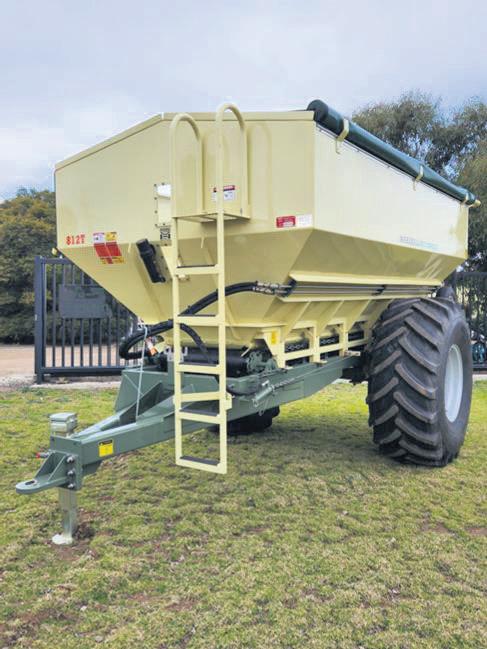
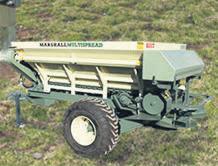
“It was2022whenthe government’s Central and Gippsland Region Sustainable Water Strategyagreed to allocate 16,000ML of unused waterinBlue RockLake, but insteadofsimplymaking adecision on how much water would be allocated between the threerecipients, thegovernmenthas wasted two-and-a-half years dithering.
“Thiswatercan deliverboth important environmentaland economic benefits for the Latrobe River region, and Iknow there aremany farmers eagerly anticipating the opportunity to access additional water
“This water will help grow our local agricultural economyand deliver long-term sustainable jobs in our region.”
Mr O'Briensaid thestate government should also have announced a process as


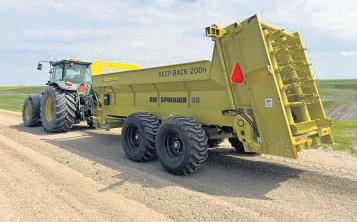
to how it will allocatethis watersothat farmers can begin to plan.
“Whilethe additional5000orso megalitres of water will be eagerly snapped up by farmers, the government has given no indicationofhow this process will occur -whether it will be an auction, atender or areallocation across existing licences.
“The government should have spent the last two-and-a-half years working out this process and should now be able to tell farmers how it will happen.
“With Labor's closureofthe timber industry and the winding down of coal fired power in the Latrobe Valley, irrigated agriculture has an important role to play in long-term economic sustainability for our region and Iencourage the government to move swiftly to further develop these water resources.”


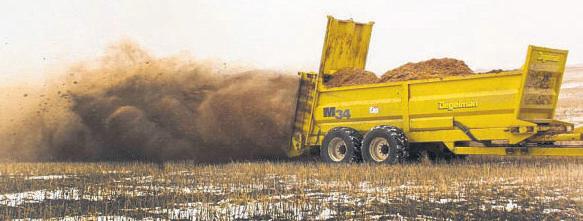



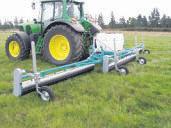

ACCLAIMED Gippsland beef cattle breeders Mawarra Genetics receivedsponsorship to attend an international trade fair in Denmark earlier this year,inrecognition of their achievement at this year’s Gippsland Food and FibreAwards.
Three membersof theSykes family attended NorthernEurope’s largest agricultural trade fair,Agromek 2024, in the Danish town of Herning.
Mawarra Genetics’ studytourwas sponsored by Food &FibreGippsland in partnership with the Trade Council of Denmark in Australia and New Zealand.
Food &FibreGippsland Chief Executive, Ben Gebert,said the tour activities will strengthen and support valuable partnershipsbetween Gippsland and Denmark, facilitating knowledgetransferinenergy efficiency measures and sustainable farming methods.
“Insights from the Danish experience of agribusiness innovation and the transition towards green energy arehighly relevant for adaption within our region,” Mr Gebert said.
“We’redelighted to be sponsoring Mawarra Genetics for their attendance at Agromek 2024.”
Mawarra exports genetics to New Zealand, the Americas and Europe and has been atrusted name in Hereford breedingfor morethan 60 years.
Recognised by apanel of judges for their commitment to innovation and excellence spanning genetics, livestock, property and businessmanagement, the Sykes family claimed the category awardfor Innovation before being announcedGippsland Agribusiness of the Year at acelebratory evening in May.
Peter,Deanne and son Logan Sykes travelled to Finland for the trade fair,visiting farmsofclients who areraising progeny of Mawarra bulls.
The planned trip has seen European linkages and opportunities continueto emergefor the Longford family’s agriculturalbusiness, with expanding overseas interest in the Mawarra brand.
Denmark is one of the world’s leading nations when it comes to innovative agricultural practices, waste management, and biogas value chain solutions.
Food &FibreGippsland is anon-profit, industry-led organisation that hasan established partnership with the Danish Trade Council of Denmark in Australia and NewZealandthatfacilitates knowledge transfer and actively explores energy efficiency measures in water,food and agriculture.
Biogas makes up nearly 40 per cent of Denmark’s natural gas consumption and the valuechain is set to strengthen further in the coming years, with the Danish government’s commitment to a100 per cent biomethane gas grid by 2030.

Combined withaninnovative food and agricultural sector,this makes the Danish food cluster among the most energy efficient and sustainable in the world.
The Agromek 2024 study tour,awarded to Mawarra Genetics as Gippsland Agribusiness of the Year,aimed to share the learnings of theDanesintheir journey towards amoreenvironmental and sustainable economy and engage in conversations about how these experiences can be adapted and implemented in Australia. With site visits and activities spread over multiple days, the study tour program covered key topics in relation to the Danish biogasmodel,sustainabilityinthe agrifood sector,and innovative bio-energy solutions. This unique program has abroad focus across the food andfibresupply chain, recognising businessesthathave demonstrated exceptional business practices that maximise productivity and profitability while shaping the food and fibrefutureof Gippsland.
The competitionadopts atwo-tiered approach, with three premier awards and five category awards that arerepresentative of the food and fibresupply chain.
The 2024 Gippsland Food and Fibre Awards attracteda strongfield ofapplicants, from which 17 businesses were shortlisted as finalists.
During acelebratory evening of recognition and rewardonFriday, May 31, 2024 winners for the awards program were announced.
The centrepieceand highest accolade of the awards program isGippsland Agribusiness of the Year
Alleligible entries areconsideredfor this prestigiousaward.
In acknowledging Mawarra Genetics’ outstandingentry, the independent judging panel noted theSykes family’s unparalleledsuccessatthe HerefordsAustralia NationalShow and Sale, including top price honours,numerousdivisionaccolades, and multiple Grand Champion and Most Successful Exhibitor awards.
Mawarra sells 100 to 120 bulls annually between theiron-propertysale,private sales and nationally-recognisedbeef industry sales events.
The Longfordcattle breeding business is renowned forproducing industryleading genetics that meet marketdemands throughout the beef production chain.
Establishment of an Angus herdin 2018 has also been well received throughout the agricultural sector
Mawarracurrently run 550 breeding cows (a thirdeach Horned Hereford, Polled Herefordand Angus), across 945 hectares on twoproperties at Longford and Traralgon in Gippsland.
With strong values around family and positivestakeholderrelationships, the Sykes familysee the success of their clients asthe most rewardingaspectof their business.
See Mawarra Genetics to attend Danish studytourasGippsland Agribusiness of the Year for quotes from Deanne and Peter Sykes.
Eric BARKER
AUSTRALIANCarbonCreditUnits have startedthisyearbydroppingtoa fourmonth low, as akey industry benchmark opened at $35.65.
The Jardenindicator has dropped a further $1, closingat$34.80 at the end of January 22.
The softening of the market has ACCUs back around the same price they were hovering through most of last year,before aspike in October/November sentthe indicatorabove $40for the first time in three years.
Many reasons weregiven for the spike in prices last year,with big emitting companies coming to market at the same time to meet their compliance requirements -under the federal government’s safeguard mechanism.
Generating ACCUs has become atough task in recent years,withmorescrutiny
on carbon farming methodologies and compliance requirements.
The federal government has been working on some methodologies for years now and others have been cancelled –like the beef herdmethodology.
Competition for land that can produce ACCUs has also increased. The situation had pushedmanycompaniesneeding credits to stock up on ACCUs while it was cheaper to buy them than produce them.
Some have suggested that the carbon market hasnow goneinto aslight holding patternwhile companieswait for some key events to pass -mainly the federal election this year
The safeguardmechanism was apolicy under the previousCoalition Government however,itwas not as strict on the companies it covered.
While the Opposition Leader Peter Dutton has indicated that he will change climate targets if elected, he has not mentioned
MORE than 50 pieces of legislation governing morethan 110 agricultural levies and charges -across 75 commodities and 18 bodies that receive levies -have been streamlined into five Acts andsubordinatelegislation under new agricultural levies legislation now in place.
The DeputySecretaryfor Agriculture, Fisheries and Forestry Policy, Matt Lowe, said the new legislation would make life simpler for those interacting with it.
“From the start of 2025, the new legislation will make obligations clearer forlevy payers, collection agentsand bodies that receive levies, and better support industriesseeking topursue new orchange existing levies,” Mr Lowe said.
“Moreflexible and consistent, it will benefit current and future levy system participants and helpindustry to get the most out of the levy system. The streamlined legislation will allow primary industries to continueto invest collectively in research and development, marketing, biosecurity activities and responses, and residue testing.”
Mr Lowe said our agricultural levy system was along-standing, successful partnershipbetweenindustry and government to facilitate industry investment in strategic activities.
“The new frameworkwill make it stronger and moreeffective,” he said. Research and Development Corporationswill also have increased funding certaintyunder the new legislation, the DepartmentofAgriculture, Fisheries and Forestry says.
“The new frameworkwill reduce administrativecosts and complexities, and provide asolid foundation for continual improvement,” Mr Lowe said.
The changes followareview that found existing legislation was no longerfit for purposeafter growing in an ad hoc fashion overthe past 30 years.
The Department of Agriculture, Fisheries andForestry said it consulted extensively on the proposed legislation with industry groups, levy payers, collection agents and bodies that receive levies.
much about the safeguardmechanism. Thereissome pressurefromwithin the party to ditch climate targets, which will no doubt be ramped up with the termof the newly-elected UnitedStatesPresident, Donald Trump officially starting in office.
One of thePresident sfirst ordersof business was take America offthe Paris Agreement, aglobal effort to limit climate change.
His announcement was followed up by NationalsMPMatt Canavan calling on Australia to do the same and ditch its net zeroby2050 target.
Another prospect is aLabor government with moreGreens influence, which will likely put morepressureon safeguard companies to secureACCUs.
Companies and banks moving away from voluntary net zero targets is also bubbling away in the background.
-Beef Central
Key features of the levy system will remain the same, such as rates and the purpose for which levies can be used, but participants may experiencesomeadministrative changes, like updateddue dates and new forms.
Levies arecollected from farmers, producers, processors and exporters, with any proposal for new, or changes to existing, levies requiring majority agreement among levy payers.
In 2023-24, the Research and Development Corporations, Animal Health Australia, Plant Health Australia and the National Residue Survey received just over $600 million in levy payments.
The federal government contributed an additional $470million in matchingfunding for researchand development activities.
- Department of Agriculture, Fisheries and Forestry
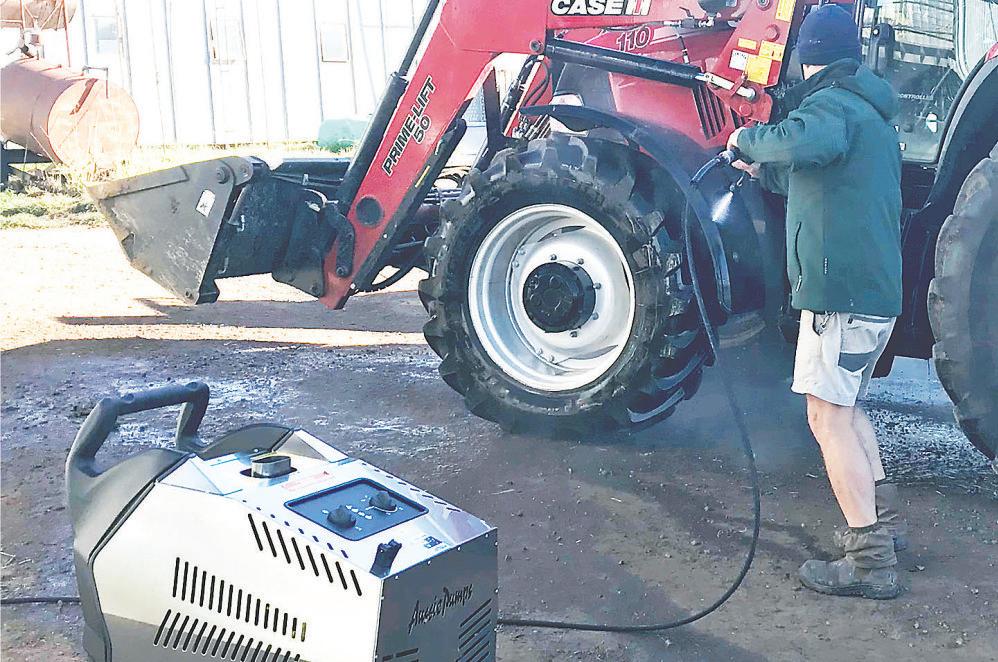
As atribute to thework that Gippsland dairyfarmers do to producesome of the best milk andtop-quality processed products, Australian Pump Industries offersa great rangeofhigh-pressurehot wash and steam cleaners.
“We’ve got the biggestrange of the business, with steam cleaners to suit all applications.
Thatrange includes electric drive steam cleaners andHonda petrol engine drive units that go mobile”, said Aussie’s Product Manager, Sam Loria.
From now until the30thofJune2025, Aussieis offering the opportunity for dairyfarmers andco-ops to buy directly from theAussie factoryand getserious wholesaleprices.
Aussie’sSizzler is
The product rangeinsingle phase starts withthe AussieSizzlerhot wash.
Thisisamighty machine designed specifically forAustralianconditions
You’ll finditinhirecompaniesaround the countrywith its stainless steel welded frame for protectionintough environments.
With aheavy-duty high efficiency triplex pump with brass headand independent brassunloader,the pump features solid ceramicpistonsand has an adjustable
temperaturefromambient to 80 degrees celcius
Themotor powercomes from a4-pole slow speed air-cooledmotor,with thermal cutout,and acablefitted with a 10-amp plug (240 V, 50 Hz)
Thelow maintenance stainlesssteel boilerhas alow fuel consumption–only 2.3kgper hour at full temperature.
Thestainlesssteel cover lifts offeasily for maintenance and service whilethe steel chassis with 4largewheels,makes it easy to move around andprovidesa robustplatform.
The dieselfueltank is 18 litrescapacity, and theprotection equipmentsupplied is excellent.
TheMulti-Function SafetyControl Kit consists of:
1. Delayed total stop –stops themachine 30 seconds afterthe guntriggercloses which saves fuel.
2. Micro-leak detection– stops the machineincase of leaks in the hydraulic circuit
3. Nozzleclogcontrol –stops the machine if the nozzle at the end of the lance is blocked
4. Floodingprevention system –protects fuel system.
5. Intelligentauto switch-off –switches offthe machineafter 20 minutes of non-use
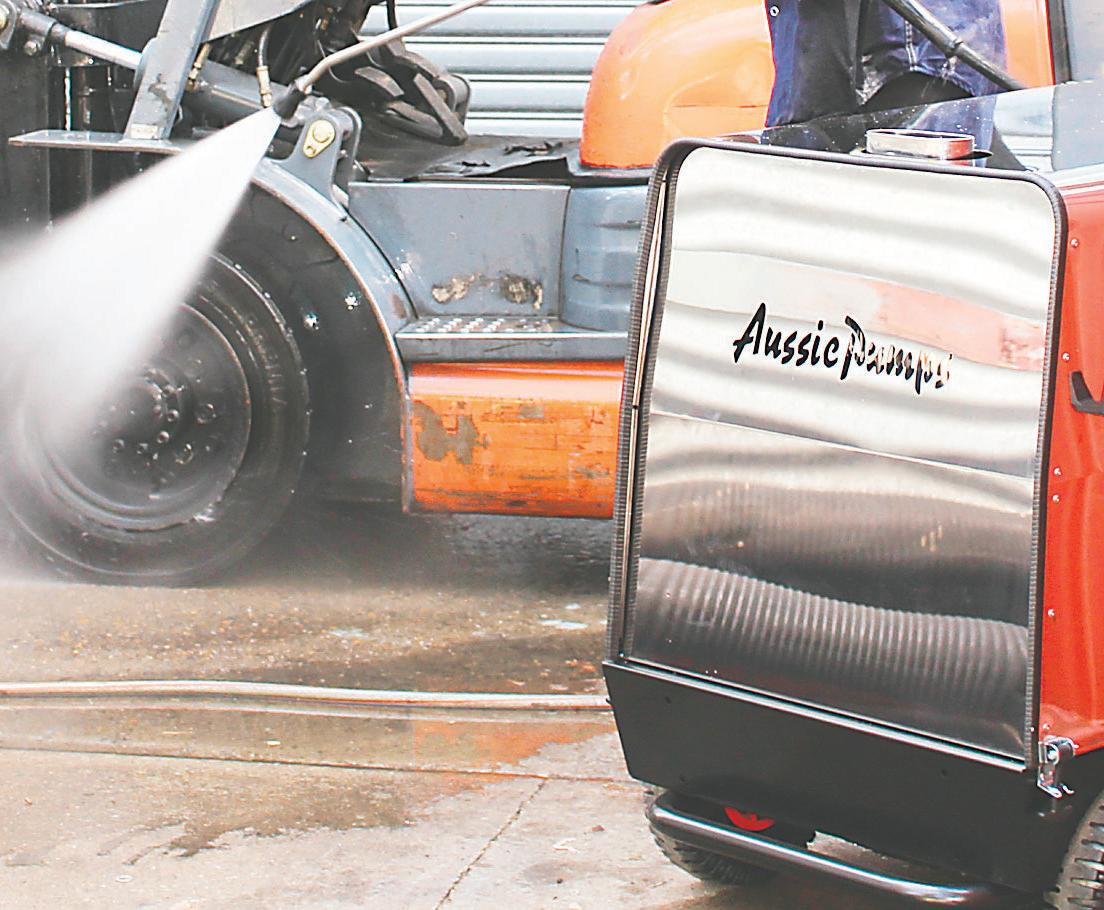

6. Dryrunning protection–stopsthe machinewhennowater is supplied.
7. Ignition boilerdelay –ensureslow fume emissionswhenthe boiler starts.
“The machines aremadeinNorthern Italy to ourdesign,” saidLoria “Weknewthat there was areal requirement in Australiafor atop quality product loaded withfeatures for dairy applications.”
SuperIndy’sare available in both 240 V and 415 V.
They feature similar protectionequipmentas “The Sizzler” but have heavy dutyslowspeed triplex pumps and offer astainless steel coil with a3-yearcoil warranty.
“That’s abig thing in applications involving corrosive liquids It canbehandy and certainly extends coil life,” said Loria.
Themachine also offers detergent injectionassystembuilt in,and themotor and heavyduty triplex pump have the feature of flexible coupling that provides both pump andmotor witha smoother, coolerdrive.
All theusualAussieprotectiongearis incorporated including low water cut out, lowfuelsensor,timetable stop, micro
leakdetection,and even a15amp plug, fitted to allsinglephase units.
The machines offer pressures up to 3,000 psi for the3-phaseversion and 1,500 psi for thesingle phase
The company also produces agreat rangeofhigh pressurestainless steel hose reels.
The reels can come with either30or40 metresofhigh pressurehose.
“Weknow thatdairyfarmershatethe idea of havingtomove themachine numeroustimes duringthe bales clean up.
Depending on thesizeofthe bales, the stainless steel hosereel is very handy said Loria.
The stainless steel reelscan be mounted on thewall adjacent to the machine or in anyother convenientlocationfor the user.
“This is abrand newinitiativefor Australian Pump.
We saw asense of uncertainty with people beingconfused by theelection promises!
Aussie dairyfarmersbuy direct It’sour gift forthe great worktheydo.”
Formoreinformation,pleasevisit aussiepumps.com.au

AN East Gippsland agricultural company has received a$50,000 grant under the state government's Forestry Transition Fund.
The Minister for Agriculture, Ros Spence, announced $50,000 for Four Peaks Pastoral Pty Ltdtoexpand its business and employ former forestry workers as part ofRound 1ofthe fund.
The business utilises the local skilled workforce to provide farmers and producers around Omeo, Swifts Creek and surrounding district with agricultural services, including fencing, shearing,pest control and harvest support.
Four Peaks providesarange of agricultural services, and the grant will enable Four Peaks to buy equipment including tool kits, portable livestock handlingequipment and avehicle mounted spray system.
The business will employ full-time farm support workers with general skill sets for the initial start-up phase, withapreference to employ workers previously employed in the native timber industry.
NLIS help
INTEGRITY Systems Company (ISC) is the recipient of a$3.9m (excl. GST) grant from the federal government tosupport existing softwareintegrators transitiontothe uplifted National LivestockIdentification System (NLIS) database. This funding will support the phased rollout of an uplifted NLIS database that willbedelivered by June 30, 2026.
Abig project is underway to upliftthe current NLIS database to ensureAustralia has afit-for-purpose and user-friendly livestock traceability platformthatoffersflexibility and scalability to track all livestock movements for decades to come.
Stink bug warning
AGRICULTURE Victoria is encouraging all Victorians to keep alook out for Brown marmorated stink bug (BMSB) to help respond to detections near the international ports and ensurethe pest does not establish.
BMSB is ahitchhiker pestthat tries to cross borders by hiding inside imported shipping containers, machinery, goods and packaging -especially between September and April.
Throughout this period,Agriculture Victoria staffconduct visual surveillance and deploy traps around detection points to ensure nothing has escaped and established in the environment. This work is undertaken in collaboration with the federal government.
In places wherethe pest is established overseas, BMSB seeks shelter in buildings and equipment during the winter monthsand has afoul-smelling odour when crushed or disturbed, making it a significant nuisance pest.
BMSB is an economically damaging pest that attacks up to 300 fruit and vegetable crops, and ornamental trees.
If you think you have found an unusual pest, notify AgricultureVictoria immediately online or via the Exotic Plant Pest Hotline on 1800 084 881.
Mobile abattoir
ACLEARand practical eGuide thatoutlines the necessary steps for people to pursue their own abattoir proposal is now available online.
The eGuide, 'Small Scale Fixed and Mobile Abattoir guideline', has been developed to assist farmers, consultants, and planners in navigating the approvals process for establishing on-farm, small scale fixed and mobile abattoirs.
The eGuide is designed to help proponents, consultants and planners understand the approvals required to develop an on-farm small scale fixed or mobile abattoir,and develop an understanding of the regulatory pathways and requirements.
New food safety standards
WANTING to know moreabout the new food safety standards for berries, melons and leafy vegetable growers? Come and have achat with AgricultureVictoria in Korumburra or Lindenow and take home some resources to helpyou navigate the new food safetystandardsfor your

business.
The new standards came into effect on February12, and applyto businesses of any size that grow or complete primary or 'early-stage' processing of berries, leafy vegetables or melons.
The factsheet covers everything businesses need to know about the standards in Victoria including which businesses they affect, the different registration pathways, whereand how to register,the cost and frequently asked questions.
Head to the foodsafetyfor horticulture producers webpage on the Agriculture Victoria website to view thefactsheet and find out moreabout the Food Safety Standards.
Finance counselling
THE Rural Financial Counselling Service provides afreeand confidentialfinancial counselling service to eligible farmers and small related enterprises who areexperiencing, or at risk of, financial hardship.
They can help you access available support, analyse your businesssituation, negotiate with lenders and develop strategies to improve your financial position.
To find your closestservice, visit the website or call 1300 771 741.
Free-range farms
THERE is stillastrong demand forinformation about setting up free-range farms.
An eBook on how to set up asustainable free-range farmisavailable from Freeranger Eggs at Grantville.
Detailedinformation is available on the Freeranger Club downloads page about things like shed requirements, food safety, egg packaging and labelling.
When deciding to set up afreerange egg farm, take the time to plan it properly. Find out the zoning of the land and talk to your localcouncil planning departmentabout their requirements.
It’salsoworthreaching the state Department of Agriculture. Youcan find online resources in most states.
Once that is sorted, talk to your council Environmental Health Department about any specific requirements they have before you get underway.Moredetailscan be found at: freeranger.com.au
Mental health help
ARE you feeling overwhelmed, unusually frustrated or angry? Areyou struggling to makedecisions,losing concentration or avoiding family and friends? Areyou feeling tired all the time, physically run down or stuck in arut?
Back On Track is an innovative,peerguided mental health initiative designed to support farming communities.
Funded by the Gardiner Foundation and led by the National Centrefor Farmer Health, this program focuses on improving mentalhealthoutcomesfor farmersby providing practical, culturally appropriate support delivered by those trusted in their




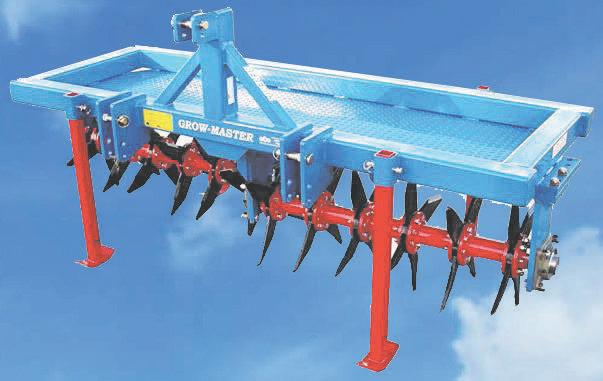







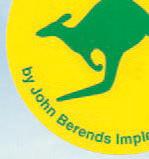





Katrina BRANDON
WALKING through FarmWorld, you ask yourself wheretogofirst.
An extravaganza is what it is. As you look one way, thereare massive tractors, and on the other,you see food,animals, or something else in its entirety.
Three days of Farm World aremuch needed, with afourthday possibly even required to deal with the whole space of the event. Even walking around the entire day and looking at everything possible is why two-day passes areavailable.
Morethan 42,000 peopleattended this year’sevent, which featuredover100 vendors and events on 100 acres.
People who got in around lunch time were late. Driving into Lardner Park, you would already be placed in the 67th rowofcars in a50to70 rowlength in warmweather for the first two days, or pushed into the secondaryparking lot at 10am, and that was beforethe hike to the gates.
Therewas much to see throughout the event,whether checkingout businesses, demonstrations of all kinds, or even attending exclusive sessions.
Exclusivesessionssuch as the Telstra Women in Ag Lunch, the CommBank Breakfast Discussion event, or Latrobe Health Services' health and wellbeing chat with former AFL player and coach Nathan Buckley werefilled with excitement, with the three attracting at least 100 people per event.
The Telstra Women in Ag luncheon opened on the firstday with two speakers who have afarming backgroundand have used innovative thinking and experiences to create their businesses. Dani Pearce, founder of Merry People, andStephanie Trethewey, creator of Motherland, werethe main speakers.Telstra’slegal and cultural communications representative, Katheryn VanDer Merwe, also spoke throughout the luncheon, helping to open the session.
Thesessionallowedattendeestobecome familiar with others in the room and the struggles other women in agriculturehave been through as farmers, mothers and business owners.
Next door,String and Salt Cleaver Salumi
Cabinets hosted demonstrations on the secret to aperfect kranksy. String and Salt was one of many businesses that hosted demonstrations of their products,manyof whichalso included taste testers.
Taking another hike towardthe top end of Lardner Park’shill, equestrians riders held continuous fascination at the Imperial Floats Gippsland FarmWorld Equestrian Festival.Manyvisitors stopped to watch the intensity of the showjumping. A slight miscount of steps led some riders to knock or knockover planks, leading to penalties.
While the competition was fierce, each rider welcomed the chance to performata local level against other showjumpers who wanted to try FarmWorld’s challenge, some even coming from New Zealand.
Countingupinternational numbers, the FarmWorld 2025 Rodeo and PBR Pro Touring Division also brought riders from acrossthe countryand overseas. While the rodeo didn’t start until 6pm on the Saturday, gates werebursting at the latches from 4.30pm onwards as the main Farm World event closed.
If youthought it wouldbeeasierwhen the gates opened, think again.
Therewas no room to move throughout the rodeo, and the best spots wereuptothe early birds. Lots of excitement came from the rodeo event, with dust flying alongside bulls, steers and riders during the bull ridingsessions and dust alongside the horses and riders in the barrel racing divisions.
The true showwas watchingthe rodeo clowns’ or bull fighters play with the bulls to get them back into pens and participants to safety.
Local businesses also linedupin categories, Happy the Cow celebrating his second birthday, Joe Spicer's kelpie demonstrations, Freestyle Kings Motocross Spectacularshows, camel rides, horse rides, and tractor shows.
More Farm World 2025 stories are coming in later editions.
More Farm World -Page 35 -38
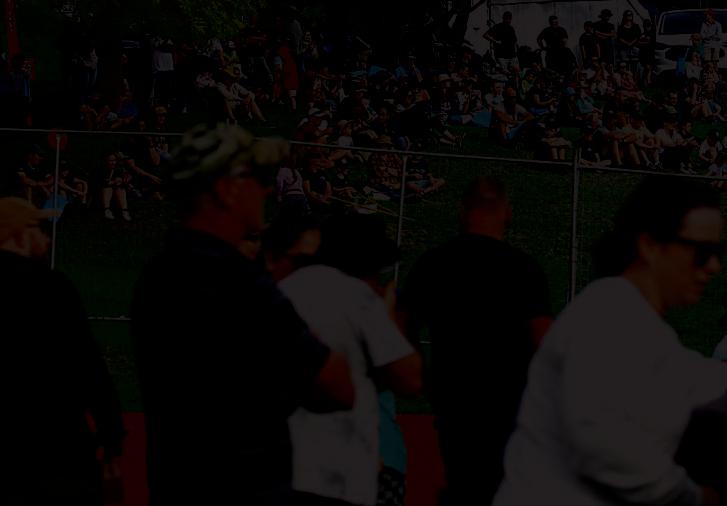





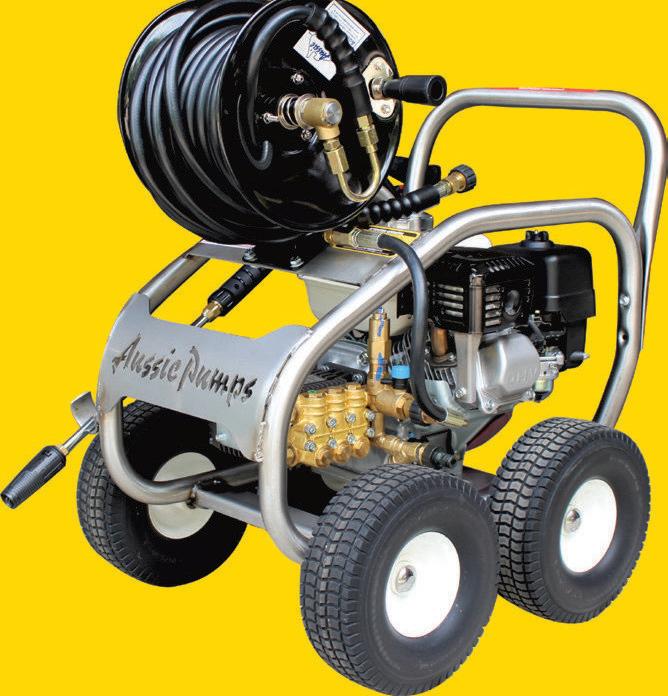






Katrina BRANDON
JUMPING into action, Farm World 2025EquestrianExpo
(also known as the Imperial Floats Gippsland FarmWorld Equestrian Festival) featured both local and international riders in the arena.
Bright and early, riders warmed up their horses and got to work in theircategories. Beating the heat, the equestrians soared through the first day. While waiting for each section to start, riders and theircompanions could be seen riding outside the arena, inside a sectioned-off bitthroughout the day.
If participants weren’t riding yet, they werevisiting the equestrian market, whichfeatured horse rugs, clothes, boots, and more.
From dressage to show jumping, visitors wereexcitedtosee the talented riders up close.
The Expo welcomed riders from

all over,even some coming from out of the country to showcase their talents in the Australian waters.
“FarmWorldEquestrian Expo is

an excellent opportunity for local riderstoride alongside riders from all over the state and even other places,” Loch’s Emily Hill said.
The equestrian event welcomed
all,withFarmWorld visitors spending quality bale time watching the riders. While some watchers werefans and family of the equestrian sport, newcomers to the sport even took the time to watch as the event played out.
The expo gave locals and other visitorsa chance to learn about show jumping rules and particularities by watching along.
While watching the intensity of the event,riders focused hard on thepattern theyhad tofollowand countedout thesteps they needed to taketosucceed.
Unfortunatelyfor some riders, some jumpswerereally challenging, leading to quite afew knocking over posts and deduction of points in specific rounds.
Some classes (or rounds) were speed-focused, and others were geared around accuracy and skill of getting over and not knocking

over poles on each jump. Intensity also rangedbetween each section as newer riders participatedin lower jumps and moreexperienced riderstookmorechallenging levels.
The highest jumps wereplaced at 1.2 metres, with New Zealand rider Katie Meredithriding Bloomfield SSNZ taking the section on the thirdday. Foster’s Chloe Fulkerson riding Vienne and Gippsland local Kate Joyce riding Wade Equine Oki Doki placednot too farbehind. The lowest jumping classwas at 70 centimetres.
For results of the Imperial Floats Gippsland FarmWorld EquestrianFestival,gotoFarm World Equestrian on Facebook, or the Cora Lynn/ Peninsula Show Jump Club Facebook page.
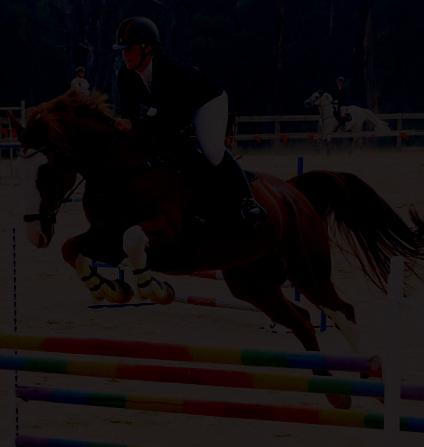


Katrina BRANDON
HIGHLIGHTING the success of women in agriculture, FarmWorld 2025 held the Telstra Women in Ag lunch, where listeners heardfromkeynote speakers.
Aroundcoffee andlunch, people were invited to hear about making changes as women in agriculture,whether to help farmers or impact the industry. It was also an opportunity for women to sharetheir experiences and network with each other “Wecontinue to come back to Women in Ag Day, whereamazing women come here every year and sharetheirexperiences,” Telstra Regional General Manager,Jenny Gray said.
“The value of coming together and sharing experiences, meeting with our friends, families, and colleagues cannot be overstated. It's inspirational and fun, and we realise that when alone,other people aregoing through the same experiences we'regoing through, so it's just areally important day today.”
Te ls tr aL eg al a nd C u lt ur al Communications Representative, Katheryn VanDer Merwe, Merry People Founder, Dani Pearce, and Motherland Creator, Stephanie Trethewey, all spoke at the event.

Dani Pearce
ORIGINALLYfromLeongatha, Dani shared her story about the creation of her business,Merry People,a gumbootbusiness thatoffersachoicebetweencheap PVC boots and “designer” boots.
“It feels really nice, afull circle moment to be heretoday (March 27),” she told the group.
Dani’saspirationsgrowing up were strong. She told the crowd that she knew she wantedtobeamother, but wasn’tsure which profession she wanted to pursue.
“I didn't really have astrong sense of what particularprofession Iwould do as Igot older,but Iknew Iwanted to do something that made me happy and whereIfelt purpose, but Idefinitely didn't considermyself someone who would start abusiness,"she said.
“Growing up on afarmexposedmeto the realities of running abusiness from a young age. Ithink simply hearing conversations around the dinner table and knowing that it was possibletogenerate income for yourself, and in conversations around managing ups and downs, investing in assets,dealing with uncertainty,taking on risk, and working hard.”
Dani went to aboarding school in Melbourne, whereshe met many inspiring women and educators who helped uplift her by looking at their futures positively. From there, Dani attended Monash University and studied art journalism, whereher gumboot idea first emerged.
“I was going to amusic festival called Veritas, and it often rains moreatnight at that festival in December.Myfriends started
buying cheaper PVC gum boots, (on) the other extreme arereally expensive Burberry designer boots. Iremember thinking to myself, Ifeel like there needs to be some boots in the middle,” she recalled.
At that time, Dani was in her early 20s and trying to focus on passing her degree andpaying her rent.
After graduatinguniversity, Dani did a cadetship at Fashion Magazine,but unfortunately, she didn’tfind passion in her position there. She worked part-time at a bank call centre, wherethey later hiredher full-time as an analyst in aproject team.
“I was feeling alittle bit disenfranchised in my career,” Dani said.
“I was earning great money. Iwas working with wonderful people and had lots of opportunities, but Iwasn't then passionate about the product that Iwas working for, which was banking. And Irealised Ihad felt like I'd lost myself alittle bit.”
Movingonagain,Dani thought it was time to get the ball rolling on her gumboots.
She told the group, “I really wanted to give this ago. Ifelt like therewas agap in the market. But Ialso felt that waterproof footwearwas themost practicalthingto wear in winter".
“I remember thinking, what is the worst thing that could happen?”
Danihad afew strugglesinitially, like getting someone to create the boots and learning how to run abusinessthat had to shift her product from one country to another.Atthe beginning of the journey, no Australian company could deliver what she wanted, so she travelled to China using her savings.
The strugglesdidn’tstop there. When she returned to Australia and pitched her boots to stores, it was hardtofind agood fit. Dani ended up finding asteady pace at local farmers' markets, with peoplewho had never owned gumboots buying her product
“I realised at that point that Ihad abig job to do. It wasn't just about selling boots,” she said.
“I needed to change people's perception on boundaries and whether they could wear them (gumboots) as an everyday item. However,therewas alot of balancing. My team at my full-time job was going through another restructuring, and Itold my manager,who didnot back my side hustle, that Iwasn't going to fight for my job and that Iwanted to leave instead.
“I threw myself intomarketsevery Saturday and Sunday. It wasareal mental shift and quite challenging at times. Iwas 31, my friends werebuying houses, settling down, and progressing in theircareers, and Iwas recently single.”
During this time, Dani reassured herself that she was alright, and not to compare herself to those around her
Fortunately, Dani met her husband Nick Pearce (co-founder and chief executive of Melbourne-based social enterprise HoMie) and collaboratedonaproject, bringing them closer
Now, with afamily and abusiness with 25 full-time employees in Australia, Dani is gratefulfor the support she has received over time and is soon to open her first store.
Katheryn VanDer Merwe
KATHERYN VanDer Merwe spoke tothe group abouther journey with Telstra and recent thingshappeningwithinthe company.
Katherynhas beenwithTelstrafor 18 months as theirlegal and culturalcommunications representative. Beforethat, she was in asimilar role at ANZ Bank and spent mostofher career working as astrategy consultant with aPhD in psychology.
Katherynstarted her speech talking about the recent switch offof3G, which was about enhancing services.
“Coverage now covers 3million square kilometres with 360,000 squarekilometres of new regional coverage that wasn'tavailable before. Most of our customers have had agreat experience in that transition, and they'reexperiencing the fastest fees," shesaid.
“Weknow the data usage has increased significantly, indicating that they can tap into things that weren't possible before.”
Talking about moreextensive coverage, Katheryn also highlighted advances in satellite technology. In 2023, Telstra announcedanagreementwith SpaceX and Starlink about bringing Telstra home satellite, the satellite home internet, to consumers and small businesses, which is now up and running.
“It’s been available since earlier this year, with unlimited data, great download and uploadspeeds, anda homephoneconnection with unlimited calls to Australian members,” Katheryn said.
“Just recently, we've announced another collaborationwhichisimportant in the context of regional connectivity, and that's about enabling satellite mobile, whereyou might hear people say direct handset. For now, it's just about text messaging, but that technology will continue to evolve, and we'reexcited about thinking about the futureand enabling voice and connectivity.”
According to Katheryn, greater connectivity includes morepartnershipsfor Telstra, having recentlypartnered with the Neuroleadership Institute.
“We'reworking to help ourpeople strengthen to continue collaboratingeffectively and deliver that work consistently for our customers. Cultureand capability are acouple of things thatwe'vebeen focused on. IthinkAI is probably at the top of everybody's mind," she said.
“That (AI) is an area we want to lean into, and we want our people to feel confident about and curious about, and know that we're theretohelpand support them with all of those changes that aretaking place. We've put in place aset of principles and guardrails to keep all of us safe we wanted to get involved and to learnin several different ways. One is that we've rolled out co-pilot licenses.
“They have their own personal assistant in your laptop. Youcan ask it for all kinds of help and prompts along the way. But we've got 16,000 people actively using that, and they'resaying it's saving one or two hours aweek at the moment.”
Telstra has also announced joint ventures with Accentureand Quantum.
In the space of AI, Telstra feels thereis real benefitinpartneringwith experts to help accelerate their ability to create value in that space. They have also just launched an AI-enabled tool to help people build their capabilities and school skills andkeeprelevant skills into the future.

me, because the connection to Telstra and everyone is very real”
In contrast to Dani, Stephanie started herjourneyinBrisbane, whereshe was areporterfor ACurrent Affair She began with astory about atrip she took with her then-boyfriend (now husband), in 2015 that wentwrong.
On ajourney home from acamping trip, ared car came out of nowhere,slamming intotheir vehicle.
“Sam corrected the vehicle, and we kept driving. Unbelievably, this woman who hit us,she keptgoing,” she recalled
“She just starteddriving off. We'reholding our horn, flashing our lights,and other witnesses who saw the accident weredoing the same. We finally pulled her over.She pulls over onto the side of the freeway, onto the naturestrip, andshe gets out of the car,and she's running blind and stumbling across thenaturestrip.
“I can't explainthe adrenaline and the rage, and Iwas justfilming heronmy phone.The police came.Apparently, she was driving on asuspended license while pissedatnine o'clock on aSunday. They took her away, and Iwent back to work the next day with abit of astorytotell at what happened.”
Thestory led Stephanie tosit in court and discover that the driver was adoctor in amaternity ward, which became an insight into her career.
After overworking, being underpaid, and seeing thegenuinely rough parts of journalism, Stephanie believed that no job after her time as areporter would be as hard. She soon realised she waswrong when she tookonmotherhood.
“Mytime in TV had absolutely nothing on the job thatItook on next. rural motherhood,” she said.
“Motherhood brokeme, but motherhoodisironically whathas put me back together as anew meand abetter me. I interviewed him (Sam, athird-generation Tassie farmer andStephanie's husband) for the six o'clock news ona very slow news day, which created avery productive day, astory, and aboyfriend.”
The next part of Stephanie’s story led her to Melbourne, whereSam worked in agribusiness. Afterthe move to Melbourne, they had their first child, which was when Stephanie’s depression began.
“I was really struggling,” she said.
“Instead of becoming amum,ittotally left me untethered. It was abaptism of fire. Istruggled withpostpartum depression silentlyinthose early months. Ididn't talk to my husband about it, and Ideeply regret that, because Ilived in Melbourne. Ihad access to amother's group, which was my lifeline.”
The pressureofmotherhood andsociety led Stephanie down arabbit hole, leading her to believe that childbirth is agift, and how dareshe be depressed. Adding to thepressure of her new changeinlife was havingtomovetoTasmaniawhere Sam’s family was
Initially thinkingthe idea was terrific, Stephanie again found herself in achallenging situation. Stephanie had left her home,friends, and accesstoamother’s group as afirst-time mother.She explained the situation as “the perfect storm”.
“A lot of people in theroom knowhow relentless farming can be, and Iwasn't at all prepared for that. Iwas ill-prepared for the fact that my husband would walk out the door every day, seven days aweek, because, God, Ididn't know that," she said.
“I remember he kissed me, and Ihad this big smile on my face, and the frontdoor would shut, and Iwould just cry because Ithought how lucky he was to be free while Iwas at homewith ababy, feeling so alone,Icouldn't find anyonesharing stories of ruralmotherhood
Stephanie Trethewey CONNECTION is important, and Stephanie Trethewey highlightedthat in her speech. Opening up to the floor,Stephanie told the audience: “This is abeautifulday for
“I thought, if they say it takesa village to raise achild, then where the hellismine? And that'swhere Motherland was born, asimple idea thathas given me so much purpose out of so muchpain, and Idon't knowwhere I'dbewithout Motherland.”
Motherlandstarted as apodcast and
then moved to being asupportnetwork with morethan 1.1 milliondownloads and about 6000peopletuning in every week, and it has shared over 250 stories of mothersinrural areasacrossthe country, who Stephanie described as “some of the most undervalued and under celebrated women in our industry, and I'm so proud of theirvulnerability”.
According to Stephanie, her story is not unique,and in ruralareas across Australia, the lack of services is hurting newmothers and their mental health.
“Across ruralAustralia, over 90 percent of rural moms say that access to postpartum support is inadequate,” she said.
“Over 50 per centcan'taccess something as simple as amother's group whichis extraordinary to me. Eighty nine per cent have said that feeling lonely or isolated is the hardest part of beingarural mum. Over 80 per cent have struggled with their mental health, and over 70 per cent often give birth in ahospital at least an hour away from wherethey live.
“Motherland village is Australia's first online rural mother's group program, connecting womenthrough our six week program who have children aged up to 18, because for the moms and dads in the room, I've got afour-year-old, asix-yearold, but Ikind of thought that when the nappies ended like the challenges went and Ireally think we need to do more to support parents with older children.
“Weare in the midstof aloneliness epidemicglobally,whether youlivein the city or the country. We arealonely species.”
Stephanietoldthe audience that Motherland has become avillage in its own sense andisabout bringing genuine connection and supporting vulnerability. She also highlighted that resilience is overused in media outletsand the danger that follows with the word. She saidit can createpressure and

expectations that just because someone is afarmer and amother,they should put up and shutup, getonwithit, and come back better than before.
“I'm really passionate about us being
extremely careful with how we use that word(resilience) andembracing the opposite, vulnerability,” she said.
“Toreally honour our pain, it doesn't matterwhethersomething in your life is
so small, it's your pain. And Ithink that our comparison cultureisdamaging too. We always think that someone is worse offthan me and that cantakeaway from you actually sitting in your own shit.”
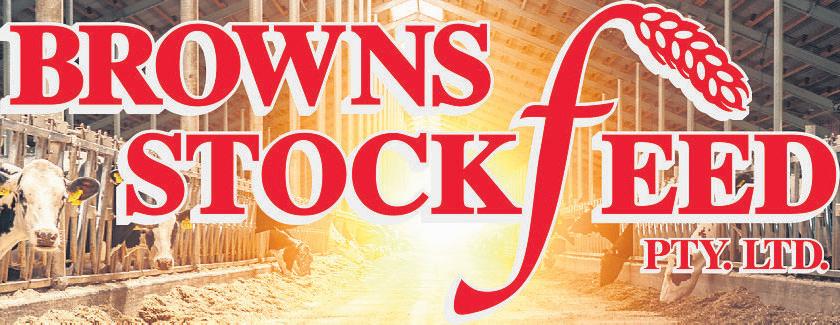
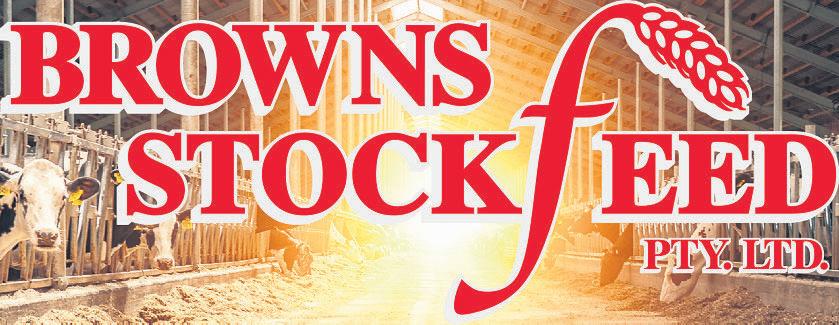














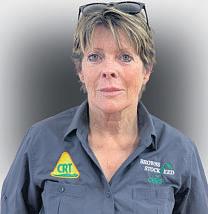








Katrina BRANDON
LAYING down the numbers, Collingwood great Nathan Buckley spoke about health at this year's FarmWorld event.
In asessionled by Latrobe Health Services, Buckley and Latrobe Health Services Chief Executive, Ian Whitehead discussed the importance of keeping healthy with regular check-ups.
Whitehead openedthe floorbytalking about initiatives Latrobe Health Services arelooking at,aswellas thosealready completed, likeupgrades to Maryvale Private Hospital.
Getting to the main topic of the day's event, Whitehead discussed cardiovascular health within Australia, particularlyGippsland, and the partnership that Latrobe Health Services shares with the ShaneWarne Legacy.
At FarmWorld, Latrobe Health Services conducted free health checks over the three days.
"Something like 1500 people aday are admitted to the hospital with cardiovascular disease-related losses," Whitehead told those in attendance.
"Cardiovascular disease is still oneof the leading causes of death. So 24 per cent of deaths in Australia arelinked to cardiovascular disease, whichcan be shifted, changed, and prevented through intervention, education, diet,and simple things."
Throwingover to the 'main' event, Whitehead welcomed Buckley on stage to talk about his passionfor health and wellbeing.
"That's pretty much what coachingis," Buckley told the crowd.
"It came to me by helping young men make the most of theirprofessionalcareers in afreesense, the thing that Ienjoyed most about that used to be about winning, and used to be about being better than the opposition.
"I got moresatisfaction from helping young folks takethe next step in theircareer, about getting the best out of themselves."
Buckley talked about how he went from playing football to being acoach, and wanting to take the stress offhis team and installing confidence within themselves, taking awinning-or-losing mindset "off the table".
When Buckley was 13 he recalled ajunior coach pulling himinfront of the group and saying, "this is what you shouldn't do. Nathan's not going hardenough. He's


not getting in and under tough enough".
This was one example of coaching that Buckley said he wanted to change moving forwardinhis career
"No one wantedtobemoresuccessful than me, and that was aproduct of being 26, 27-years-old. Ifelt stronger,faster,and fitterthanthe placethatI was playing against, and Ihad everything Iwanted. Iwanted to be important.Iwanted to be seen. Iwanted to be young, and Iwanted to play in front of as many people as possible. Because underneath that guy, inside that guy,was someone whowanted to prove himself worthy," he said.
"Fundamentally, if Iwasn'tdoing footy, Ididn't think Iwas worthy as aperson."
The overwhelming pressurefromfootball led tosetbacksfor Buckley. Hetoldthe crowd that it started to affect him mentally and emotionally.
Not knowing how to deal with that sort of pressure, he said that while he wasn't depressed or tired, hewould deal with the stress by heavily drinking in town "with the boys" and would run more than 50 kilometreshome instead of catching acab, just to do abit extra training.
"These behaviours weren't going to be sustainable.They weren't going to help me
get the best out of them," he said.
"I came to realise that Iwas worth more than that.If socialmedia were around whenI was akid, when Iwas ayoung footballer,I reckon it would have blown me up. Icared so much about what people thought, and we'reall on socials in some shape or form. Sometimes you'rethe target, sometimes somethingyou'reinvolvedin, or an organisation, you'reinvolved as a target, but people say some nastythings when they'renot in yourpresence.
"But for me, Ineeded to earnmydad's respect. That was why Ibecame the footballer that Ibecame, that's why Iwent to Collingwood, because Iwanted to play in front of as many people as Icould, to be abig deal."
Buckley followed the conversation by going from his experience with his dad to being aparent. He talked about being with his kids while not being there, constantly being engaged in his head, coaching his team, and having other needed conversations.
This realisation became another focus in his life; to be the person he needed to be at certain times.
Another realisation that Buckley talked about was the energy that you give offto people. Walking around and not realising
the energy that you areputting offtopeople, following into your home, to ensurethat you areaware of what messages you are sending out, aresome things he shared with the crowd.
He asked: "How do you become abetter version of yourself? So what do you know to be true of yourselves? How do you see theworld? What arethe things that piss you off? What arethe things that fireyou up,and why do they fireyou up like that?"
"If I'mnot awareofthat anger,orifI'm not awareofthat intensity and the impact that it has on people around me, not awareof what you'redoing in your house… If you're not awareofits impact on your kids, you need to be, because you want to be the best parent you can and impact as positive an impact as you can on your kids.
"Weall have an idea and abit of athing that you can shift and change in your life, that can just stop you alittle bit, give you alittle moreenergy. It might be as simple as going to this AFL check here, not just for you, but for your lovedones, so that you can get around for alittle bit longer and give your love alittle bit further,alittle bit longer."
Blake METCALF-HOLT
THOUSANDSofbowlers of all abilities, alongside club members, friends and family, converged on theGippsland region from March 21toMarch 30 forthe annual Henselite Victorian Open.
In the middleofafive-year agreement with LatrobeCity, the secondlargest premier bowls event in Australia sees lawn bowlers from acrossthe country compete for aprize pool of morethan $100,000.
Around 15 clubs across the region were utilised for the eventacross thetwo weeks, with plenty of local bowlers takingpart across seven competitions.
Thirty locals participatedinthe Men’s Singles, with Churchill’s Craig Flanigan going as far as the second round, while Shashi Bhatti (Traralgon) and Steve Pallot (Moe) each made the knockout stages.
Queensland’s Kobe Barton took home the Men’s Singles title, defeating Craig Mills, 21 to 16.
Atotal of eight locals entered into the Women’s Singles division,with Boolarra Bowling Club President, Joelene Laukens doing the best, losing in the thirdround to eventual winner SelinaGoddard(Cabra Bowls).
Newborough pairSherylAtkinson and
Lisa Arnold each reached the knockout stages, with Arnold makingittothe second round.
Goddarddefeated Andrea Tudorovic, 21-12, in the Grand Final.
Goddardtook away three sets of trophies, winning the Women’s Pairs and Women’s Triples also.
In the Men’s Pairs, seven teams competed, with Boolarra pair Steven Davy and Joel Anderson, and David Hodson (Traralgon RSL) and ShaneHolmes (Heyfield)each reaching thirdround action.
Tyson Cromie and Brett Mahoney defeated Aidan Zittersteijn and Grant Catterick, 20-7 in the Grand Final.
Julie Jackson and Debbie Kennedy from Newborough reached the quarter final of Women’s Pairs play, whileLynne Smith (Morwell Club) and Janice Aubrey (Drouin) and Sheryl andSamantha Atkinson (Newborough and Dandenong Club respectively) made it to the thirdround. Goddard and Casandra Millerick defeated Nicole McKenzie andKelly McKerihen, 19-13 in the Grand Final.

Six local Mixed Pairs made it to the knockout stages, with Laukens (Boolarra) and Vincent McIlwain (Traralgon), and Jo Gibcus(Newborough) and Dean Kuran (Middle Park) reaching the thirdround of play.
Moama’s Millerick and Kevin Anderson defeated Melton’s ChelseaPollockand Todd Trewarne in the Grand Final, 14-8.
The Traralgon trio of Ian Hilsey,Ian Kirkup and MichaelYacoub made it to the quarter final of the Men’s Triples competition, while Traralgon’s McIlwain did as well, alongside Nathan Black (Adelaide) and Craig Mills (Yarraville/Footscray).
Luke Hoskin(Bendigo), Cameron Keenan, and Kevin Anderson (both Moama) won the Grand Final, 17-7.
Lisa Phillips (Clayton,fromYallournNorth) was the only local presence in the Women’s Triples section, reaching the second round alongside fellow Clayton players Courtney Bennington and Paula Wood.
Melanie Allen (Mentone), Goddardand McKerihen (Clayton) won the GrandFinal, 15-8.
The Latrobe Valley and broader Gippsland will host the Victorian Open until at least 2027.
Blake METCALF-HOLT
AS the township of Yallournwas less than adecade away from beingfullydemolished, the initial stages wereset half acentury ago that would lead to the amalgamation of YallournFootball Club andYallournNorth Football Club.
On August 10, 1975,the first formal meeting was held with both football clubs present and many further meetings to come over the next 12 or so months.
Justovera year later,the decisionwas made to relocate Yallourn’s Number 1Oval and its buildings to YallournNorth as a closurepackagefromthe SECV,which was ratified by independent arbitrator for the SEC, Ray Burkitt.
Arival bid for the ground was made by Newborough, however,proved unsuccessful
Part of the agreement that was to be honouredmeant the new ground and club was an amalgamation of the two, as Yallourn North was moving from its Reserve Street site as well, and thereforethat the Yallourn name would be kept.
Since 1977, the club has been known as YallournYallournNorth.
A total of $275,000 was set aside for the replacement of the oval, with the previous LGA Narracan Shire agreeingtocover any additional costs above $25,000for earthworks.
It was left to the clubs to find assistance in relocating the buildings.
The oldrooms fromYallournbecame the club’s social rooms, with the original scoreboardalso being relocated.
Original plans for the reserve and the reason for thechosenlocationwas that anew residential estate was to be built, which would approach the reserve from the south-west.
Beginning at Latrobe River Road

(colloquially known as ‘the old road’ being the original entrance into town), the plans never eventuated due to anew noisepollution buffer with the area situated closest to the YallournPower Station of any residence
The new oval became known as George BatesReserve,named after the general managerofthe SECV,who was also a long-time servant of YallournFC.
The reserve was officially opened in1981, though some games wereplayed on the ground prematurely.
Yallournwas amember club of Latrobe Valley Football League (previously Central
Gippsland Football League), the amalgamation meant YallournYallournNorth entered LVFL for the 1977 season.
The newly formed club werenot thereto make up numbers either YallournYallournNorth made the 1978 LVFL Grand Final in their second season after upsetting reigning premier Leongatha in the preliminary final.
This early conglomerate featured many locals from both Yallournand Yallourn North,including 1975Mid Gippsland Football Leaguebest-and-fairest Ray DeCarli, JohnSheekey and the Lovison
brothers,Chris and John,and recruits the likesofGaryYoung (futuresenior coach and formerly Moe) and coachRay Koelman (Coburg).
The formidable side would however succumb to Traralgon in the Grand Final by 10 points.
After seven years, YallournYallournNorth moved to MidGippsland FL (where Yallourn North, previously Brown Coal Mine, once resided) accumulatingfive senior premiershipsbefore moving to North Gippsland Football-Netball League in 2020.
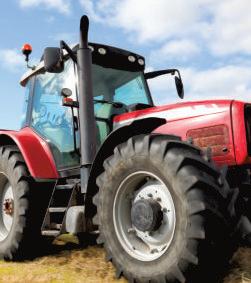






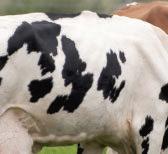



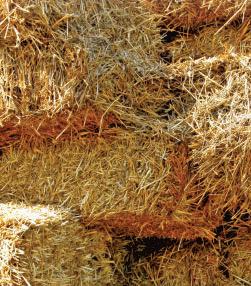









For more than 40 years Gippsland Farmer has r reported on arange of Agricultural industryissues i including Dairy, Beef,Horticulture, Sheep, Goats, P Poultry, Organic farming and Viticulture.
G Gippsland Farmer also features Gippsland sport, l latest machineryupdates, alivestock market report a and major Rural events including Farm World and E East Gippsland Field days.
G Gippsland Farmer is the most directly penetrating c cost effective medium for advertisers to reach their t target marketevery month.
For all advertising enquiries please contact Janeen Brown Mobile: 0419 542 792
E Email: bookings@lvexpress.com.au
Paula Hansen Mobile: 0490 364 565
E Email: phansen@lvexpress.com.au
Farmer is produced and published by Latrobe Valley Express partnership and printed by Express Print based in Morwell Victoria.














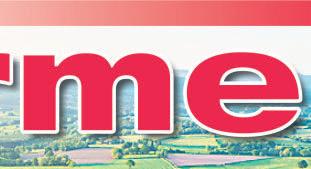

















































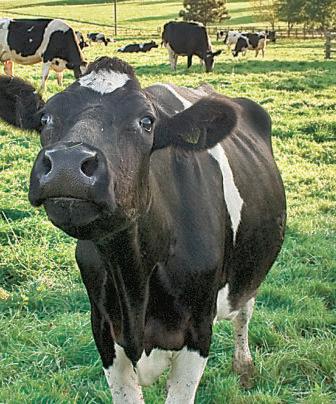





























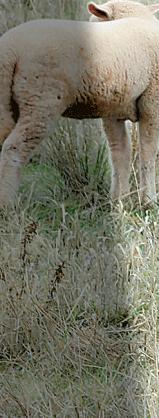

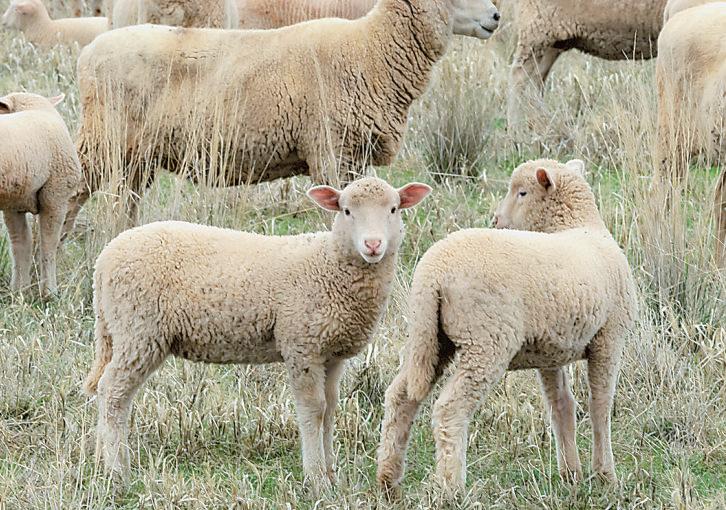





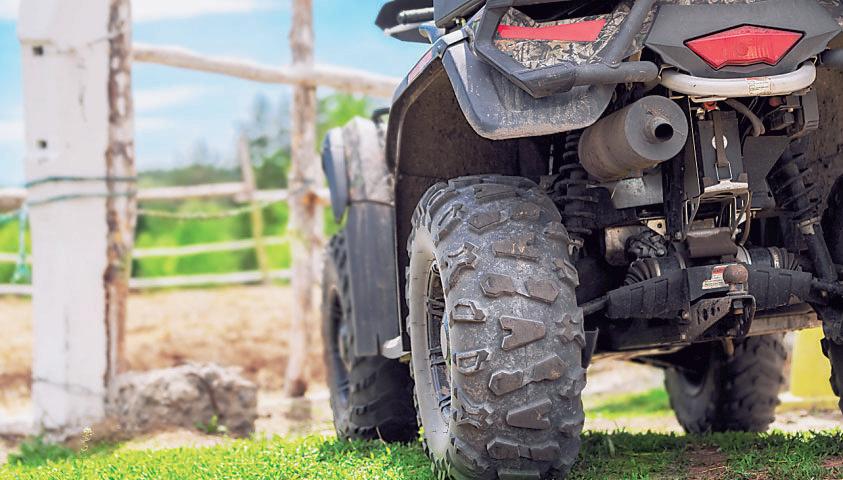


































































































































































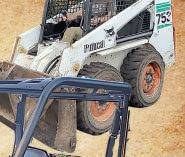


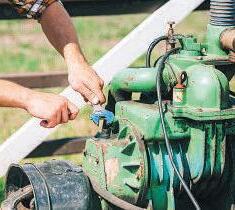





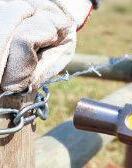
















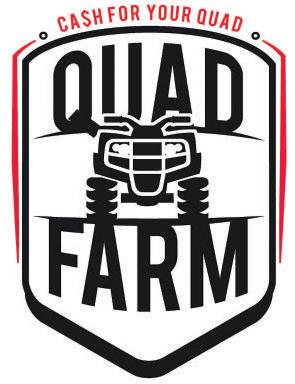




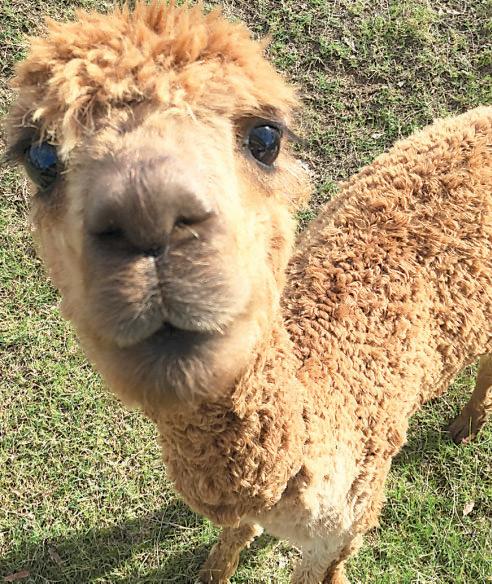




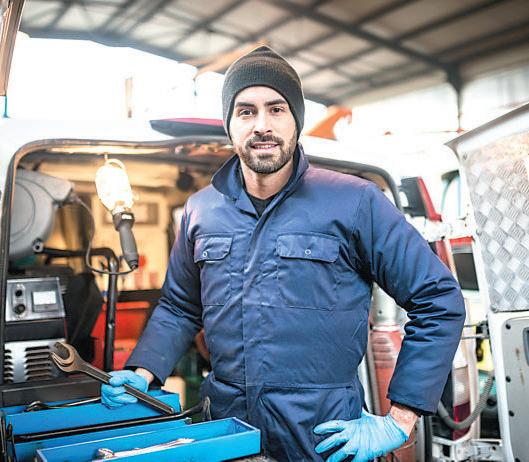










Blake METCALF-HOLT
AFTER 50 years’ of service, Thorpdale Football-Netball Club co-president Keith Pickering still hasn’t learnt to say ‘no’.
Pickering was honoured with enshrinement into the Mid Gippsland Football-Netball LeagueHall ofFameat the league’s season launch.
The 344-game clubman and past Barry McKenzie Award (for outstanding service and commitment to their club) recipient, has served virtuallyevery role at Thorpdale FNC from committee level to maintenance duties across the club.
Pickeringsaid hisbiggest “downfallisI can’t say no”.
“(It was) an honourtobeamongst Charlie Cauchi, Rod Lucas, Peter Rennie, and David Balfour,these blokes on the Hall of Fame,” he said.
“There’s not thatmany,and it’s not that easy to get into and Iwas very, very surprised. Ican’t thank the league enough, the league’s been fantastic to me.”
During his 50-year involvement with the Blues,Pickeringhas been president for nine years,vicepresident for 10, social club president for three, umpired reserves matchesfor morethan 20 years, and completed every single other job you can think of that needs doing.
AThorpdale FNC life member and MGFNL delegate for 12 years areothers of key note for Pickering.
Initially venturingtothe club in 1974 for hisfinalyear of thirds (under17s competition at the time), Pickering was immediately infatuated by the people and the environment.
“Once Iplayed, Iwas hooked. The next year Itrained every night, Idrove home from work every night of the year and never got aseconds game, not one. So that made me very determined that I was going to make it sooner or later,” he said.
Eventually, success would come for Pickeringon thefield,ashe played in Thorpdale’s1985 reservespremiership andwas runner-up in the league best-and-fairest.
Overthe courseof time,oncehis kids

began to grow and football began to take hold of them also, it only made Pickering want to be involved more.
“I was president of CentralGippsland (Junior Football League)for two years,I was vice president for Mirboo North Cats (Junior Football Club) fortwo years as well, and Iprobably umpired up to three games aweekend for theCatswhen (my kids) were playing,” he said.
“It was just one of those things, it was my outlet doing things in sport.”
With the Blues’board sensing that a new phaseneeded tooccuratthe club, Pickering convinced his son Ray to return to Thorpdale as senior coach in 2018.
Pickering has had all four of his children play at the club in both football and netball, withhis son Shannon regularly in the senior team over the last decade.
Ray exited last season after seven years as coach, movingto Catani, whileJason Carpinteriand Pickeringremain as dual presidents.
Blake METCALF-HOLT
THE morning of Round1 for Morwell Football-Netball Club offered an extra special opening to the season.
The Tigers under16s side defeated Drouin,6.6 (42) to 3.10 (28) at Morwell Recreation Reserve, breaking through for their first victory in morethan three years.
At just 21 years-old, Jai Makepeace took on the junior coaching duties last year while recovering from an ACL injury, meaninghealso gothis first taste of success under his belt as a coach.
"Just asurreal moment to be apart of, although only under 16s, it was just great to see the hardwork finally pay off," Makepeace said after the Saturday, April 5triumph.
"Especially for the boys who went through it tough withmelast year, finally breaking a(near) four-year drought, the smiles on the boys' faces once we had finally completed the job is amoment Iwon't forget."
Makepeace is joined by his father and former North Melbourne footballer Troy and fellow youngster Blake Couling in Morwell's junior coaching panel in 2025.
With Morwell's fourths and thirds struggling in recentyears,action neededtobetaken to secure the future of the club and continue to see strong numbers in both grades going forward.
The JuniorFootball Academy was launched at the end of last season, which saw amultitude of former Morwell figures returntosupport the juniorfootballers rising through the ranks.
"Webrought theacademyinand used it as away to introduce players to our new training systems, but also the new standards we wanted to set for our juniors," Makepeace said.
"It was agreat idea and we gained great interest from the boys and afair few chose to stay and play this year."
The program was run by former Tigers premiership coach (2013 and 2014) Harmit Singh, who is also the Sydney Swans Academy Talent and Coaching Director andformer Head of Academies at Collingwood.
The Morwell Junior Football Academy alsosaw past juniorfootballers Ben Ainsworth (Gold Coast Suns), Changkuoth and TewJiath (Hawthorn andCollingwood) stop by to offer their unmatched insights.
The Tigers' previous win in the under 16s came more than 1300 days ago during aRound 12, 2021 bout against Wonthaggi, 9.6 (60) to 6.11 (47) at home.
That season was left incomplete due to the pandemic. Still awin regardless, their last one beforethat came in Round 12, 2019 in atwo-point thriller over Bairnsdale.
NORTH Gippsland footballers Ryan Foat, Daniel Missen, and Adam Mitchell celebrated significant milestones last month.
Foat became the first player to reach 300 games for Woodside District, bringing up themilestone in Round2against Rosedale.
Fittingly,hewas abletocelebrate a win alongside best mate, Daniel Missen, who was playing game number 250.
The pair have been loyal servants to
the Wildcats, leadingthe team through good times and bad over the years. Rosedale had amilestone of its own, with Adam 'Barney' Mitchell (below) playing game number 250. Mitchell has played for the Blues for the best part of two decades, winning aplethora of awards. He is atwo-time best-and-fairest winner,and givenback offthe field, serving on thecommittee,notablyas senior vice president.

TomHAYES
PUTTINGanexclamationmark
on Anzac Round in the Mid Gippsland Football-Netball League was Boolarra, whowaltzed into the top four,improving its record to 3-0.
The Demons closed out Morwell East on their home deck, kicking twice as many goalsinthe second half to run awayas15.6 (96) to 9.9 (63) winners.
Adding to the entertainment was former St Kilda small forward Stephen Milne, who lined up for Boolarra. The ‘Tiprat’ led allcomers with five goals.
The spotlight was supposed to be on former Carlton and Brisbane hardnut MitchRobinson, however asuspension for showing the middle finger to the crowd last week
saw him cop atwo-match ban.
Robinson still showed his face, chatting to locals on the boundary and hostingaclinicathalftime for the kids.
The game began with aphysical natureasfreekicks were awarded either way for highand dump tackles as neither side was keen to give an inch away to the other
Morwell East entered the match with abit of nerves hanging over them, with their only win coming in the formofasix-pointwin over Hill End beforeEaster
Despite the obvious, the Hawks started the game with confidence to transitionthe ballcleanly breaking the lines of the Demons.
Chris Wangman opened the scoring with aset shot from point blank range but failed to double
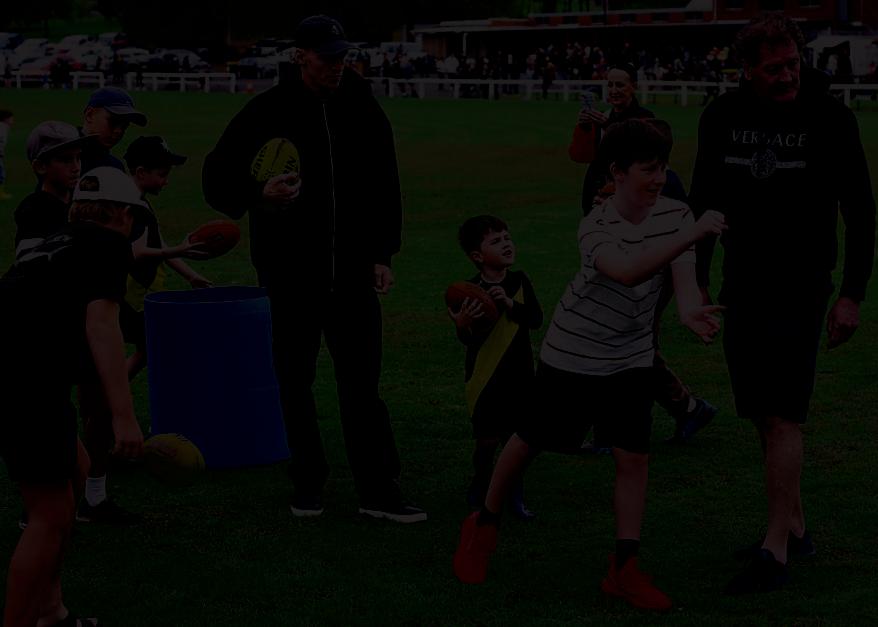
his tally with a snap around the body minutes later
Boolarrarespondedwell,and with the advantage of gaining clearance from the ground, they put that to effect to snag the next three goals of the game.
Mountingpressureinsidethe Demons forwardhalf of the ground spilled out again as they kicked their fourth straight.
With time ticking on the first term, Morwell Eastjagged one from acentreclearance to keep themselves within sight.
And as time expired, the Hawks’ Robert Michaelides was caught highbyBaileyFlanigan, then kicking true to have seven points’ the difference at the first break.
An ultra-competitivesecond termsaw just agoal each,but many watching would’ve thought Morwell East deserved to be on top.
While kicking 1.6 (12) to the home side’s onestraight, the Demonswouldhave considered themselves lucky to remain ahead at the halftime break by apoint.
Robinson and Ricky Nixon took to the ground at halftime for their clinic. Many kids got the chance to getupclosewiththe former Brisbane best and fairest winner while showing offtheir skills.
Boolarra found its groove in the second half, and so did Milne who started to hit the scoreboardwith affect.
The Demons did all the damage to break away from their counterparts, adding four goals to their tally to theHawks’one,giving themselves a20-point advantage into the final break.
TomHAYES
ACAMEO fromThomas 'Prime Train' Baulch was morethan enough for Churchill to get their first win of the North Gippsland Football-Netball League season.
Hosting Cowwarr at apacked Gaskin Park, Prime Train was the main attraction on the field, helping the Cougars to a 10-goal win over the Saints in Round 2.
Baulch beganhis 'Footy Tour' with Churchill as the first stop -even training with the club, and is expected to visit many moreclubs across Australia over the course of the season.
Baulch kicked six goals in the encounter,and after attracting extra attention, a
couple werekickedfromthe goal square.
Despite the overwhelming result, Churchill proved they would be the fighters they have always been known as following the convincingwin, even if they areexpected to dip overall this season.
The Cougars werealways in control for just about the entiregame, stretching their lead at three of the four breaks.
The high scoring encountershowed positives and negatives for either side in afinal scoreboardreading21.17(143) to 11.17 (83).
Regardless, amassive sigh of relief would have come from Gaskin Park at about 5pm after the game.


The clearancework from Boolarra’smidfield in allareas of the ground certainly helped, allowingthem to get forwardwith relative ease, beforeremaining structured in their forward50. If the ball ever got out, it was more than likelymoppedupacross half back by their tall timber
Although 20 points down, Morwell East werestill well within touching distance, after accruing seven scoring shots at the same end during the second term.
And sure,they didmanage to convert betterthis time around with 4.2 (26), but Boolarra also had its best quarter of the match, as the floodgates opened, allowing them to add 6.3 (39) to close the match out with ease as 33-point winners.
Flaniganwas prominent for the Demons across half back, so much so that he was named as the Demons’ best on ground. He was well assisted across the ground by
Wilson, TimDowe, Simon Noy, and Jace Paulet.
Michaelides kickedfourgoals for Morwell East, earninghim top votes for his performance. Nik Kyriacou, formerDemonKyle Hearn, Caiin Iorangi, Dylan Field, and Brad Kimberly could also be proud of their efforts in defeat.
The Demons now move to third, as one of three teams to be undefeated, alongsideFoster and Yinnar.Meanwhile Morwell East arestrangely strugglingatthe other end of theladderin 10th, now sittingona1-2 win-loss record.
Boolarra will duke it out with MDU in Meeniyan next weekto decide who is the moredominant Demon side in theleague. Morwell East will do battle with Tarwin,aside alsostruggling this season as both sides will search for their second win of the season.
Liam DURKIN
OF all the places Dyson Heppell could call home, he just had to be from the one that's played in the last eight Gippsland League grand finals.
The former Essendon skipperconfirmed what was arelatively well-kept secret, it must be said over preseason, by lining up for his homeclub in the opening round of the local season.
Heppell(whoisalso playingVFL with Port Melb our ne )h el ped Leongathatovictory in the twilight Grand Final rematch over Traralgon, with the Parrots winning 9.11 (65) to 7.6 (48).
Joining younger brother Aaron in the green and gold, the pair had teased on apodcastin2023 that they “might” play for Leongatha down the track if the planets aligned.
Might became sight, with the brothers takingtoTerry Hunter Oval, although Dyson was perhaps trying to avoid the fanfare surroundinghis homecoming, as Leongatha conveniently didn’t select him on PlayHQ on the Friday night.
Leongatha burst out of the gate with 4.3 (27) to 0.2 (2) in the first term, and had the game in relative control from there.
Traralgon got the margin back to 16 points at three

quarter time, but the margin hovered around that figureinthe last stanza as both sides sharedtwo goals each.
Luis D’Angelo picked up where he leftoff from last year’sGrand Final, collecting best-on-ground for the Maroons. His familiar ally and the Number 1 ranked player in the league, Tye Hourigan,was also thereagain,aswas Hugh Dunbar,Connor Ambler,Tom McMahon and Mitch Mustoe, who has joined from Traralgon Tyers United.
Traralgon’slackofkey forwardswas noted, with Dylan Loprese unavailable due to awedding and the lucklessTom Hamilton suffering an unfortunate injury setback on the eve
of the season opener
Dyson Heppell kicked a goal and was named in the best, as was Kim Drew, Tim Sauvarin, Hayden Lindsay and Patrick Ireland.
Like Heppell, Ireland is in the VFL this season and will play whenhis schedule allows.
The return mightnot have felt all that different for Heppell for at least one reason: TomMarriott was stillnamed in thebest, just as he probably was in junior games when the pair weregrowing up.
Country footywas certainly along way from the MCG for one notable reason though,with Heppellgetting changed in portable rooms due to facilityupgrades taking place atTraralgon Recreation Reserve.
